

Dark Tourism… Wat is dat?
Bij het begrip dark tourism denk je misschien aan iets dat thuishoort in de diepe krochten van de nacht en aan illegale zaken. dan heb je het mis. want bijna iedereen heeft zich weleens ‘schuldig’ gemaakt aan dark tourism, terwijl het meestal best onschuldig is. dark tourism vind je op meer dan 800 plaatsen in 108 verschillende landen….
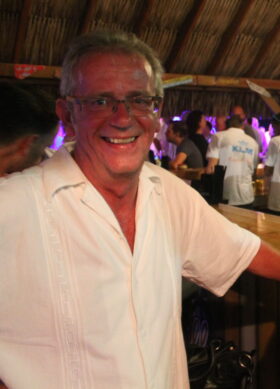
“Veel mensen hebben een negatieve associatie bij Dark Tourism, dat komt voornamelijk door het woord ‘dark’. Maar het is een begrip dat een aantal soorten toerisme bij elkaar brengt. Volgens de definitie gaat het om toerisme naar plekken die te maken hebben met de dood, lijden en schijnbare macabere, zoals begraafplaatsen en slagvelden, maar ook attracties als The Amsterdam Dungeon”, zegt Karel Werdler (senior lecturer aan Hogeschool Inholland Tourism Management en betrokken bij het Institute of Dark Tourism Research (IDTR) van Central Lancashire University). Dark Tourism kan je verdelen in drie categorieën: van heel donker – zoals Auschwitz – tot heel licht waarbij de nadruk ligt op entertainment, zoals het Torture Museum Amsterdam. Daar tussenin zitten de slagvelden uit de Eerste Wereldoorlog, maar ook Waterloo en begraafplaatsen. Werdler: “De schakering van licht naar donker is mede afhankelijk van hoelang een gebeurtenis is geleden. De Tweede Wereldoorlog is bijvoorbeeld voor de kinderen van nu lang geleden, zij kunnen hier moeilijk aan relateren. Maar deze oorlog zal voor iemand die er familieleden door heeft verloren van een heel andere betekenis zijn. Voor die kinderen is de Tweede Wereldoorlog dan ook minder duister, maar voor de ander inktzwart. Auschwitz zal voor mensen met een Joodse achtergrond van andere betekenis zijn dan voor iemand met een geheel andere cultuur. In welke categorie Dark Tourism valt, heeft vaak te maken met persoonlijke culture achtergrond.
De dood als hoofdthema De interesse in Dark Tourism werd lang geleden bij Werdler aangewakkerd, toen hij als reisleider in Europa en daarbuiten aan het werk was en weleens het verzoek kreeg om een begraafplaats te gaan bezoeken. “Die vraag vond ik in het begin maar vreemd. Vakantie is voor mij zon, zee en leuke dingen doen en daar hoort het bezoeken van een begraafplaats niet bij. Maar juist die tegenstelling integreerde me.” Hij besloot het te onderzoeken en is nu opdrachtgever vanuit het Institute of Dark Tourism Research in Lancashire en heeft het boek ‘Dark Tourism, de dood achterna’ geschreven. “Ik ben vervolgens naar de begraafplaats in Wenen geweest en dat vond ik cultuurhistorisch erg interessant. Ik zag de graven van verschillende beroemdheden; van Falko tot Beethoven en nog veel meer. In Azië heb ik een paar plekken gegidst waar de dood het hoofdthema was. Dat vond ik vanuit cultureel antropologische belangstelling enigszins begrijpelijk, maar ook wel weer gek. Ben je in India en dan wil je het cremeren van Hindoestanen in Varanasi zien. Ik vind vooral de motieven interessant.” Als ander voorbeeld noemt Werdler de rondreizen in Indonesië waarbij vaak de doden- en grafcultuur van Sulawesi centraal staan. Toeristen worden tijdens een uitvaart hartelijk ontvangen, krijgen wat te eten en kunnen mee dansen. “Stel je eens voor dat een groep Japanners zich aansluit tijdens een begrafenis in Nederland. Dat vinden we maar raar. Ik vind vooral de combinatie van vakantie en omgaan met de dood interessant. Ik denk overigens dat dit voor veel mensen een trigger is, want de dood is het laatste onbekende.”
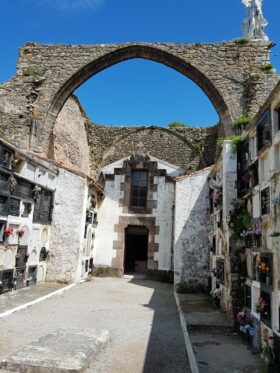
Graf van beroemdheden De uitvaartbranche en musea spelen steeds vaker in op het fenomeen Dark Tourism, maar dat zal de reissector niet zo snel doen. “Voor reisbedrijven zal het niet gemakkelijk zijn om reizen te verkopen die met de dood in verband gebracht kunnen worden. Er zijn wel een aantal touroperators die reizen organiseren naar slagvelden, het zogenaamde Battlefield Tourism dat in Engeland en Amerika erg populair is. Er zijn ook touroperators die pelgrimsreizen en historische militaire reizen organiseren. Maar dan heb je het in Nederland wel gehad. Dat wil niet zeggen dat er geen geld mee te verdienen valt, maar in Nederland is de markt relatief klein en ook nog niet zo bekend. Ik weet ook niet of de markt groter kan worden. Ik vind het overigens terecht dat touroperators terughoudend zijn in Dark Tourism, want als het bestaande aanbod wordt uitgebreid met dood en verdoemenis dan kan dat een negatieve uitwerking hebben. In Amerika is er overigens wel een touroperator die zich uitsluitend met Dark Tourism bezighoudt, Holocaust Tourism. Ik vind dat een zeer onsmakelijke titel. En in Engeland bestaat een bedrijf waarmee je tegen forse betaling naar conflictgebieden kan. Dan loop je zwaarbeveiligd door Syrië of Somalië. Ik vind dat geen gezond toerisme, maar aan de andere kant is het wel interessant om te zien wat de beweegredenen van zo’n iemand zijn. Daar wordt veel onderzoek naar gedaan.” Om het wat dichterbij huis te houden, wordt er ook onderzoek gedaan naar waarom mensen begraafplaatsen in andere landen bezoeken. Volgens Werdler kan dat variëren van heel erg geïnteresseerd zijn in de cultuur en dan met name hoe een land omgaat met hun overledenen. “Een begraafplaats in Nederland is zo anders dan die in Italië. In Nederland is de dood ook veel minder aanwezig dan bijvoorbeeld in Mexico, Spanje en Italië. Daar is het uitbundiger en dichtbij. Anderzijds zijn mensen geïnteresseerd in begraafplaatsen, omdat er beroemdheden begraven liggen of uit kunsthistorisch oogpunt. Maar sommigen gaan ook omdat de begraafplaats de rustigste plek van een stad is.”
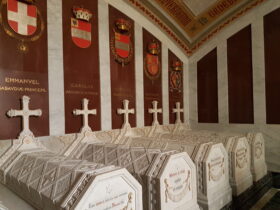
Indruk Auschwitz heeft de meeste indruk achtergelaten op Werdler. Het concentratiekamp nabij Krakau in Polen wordt jaarlijks door ruim één miljoen mensen bezocht. “Ik was er eind jaren ’70 en toen was het nog niet de ‘attractie’ die het nu is. Ik vond het erg aangrijpend en wil er geen tweede keer meer naartoe. Ik vind het wel goed dat ik het een keer heb gezien, maar vond het naar genoeg om te zien. Auschwitz is een voorbeeld van Dark Tourism waar je de geschiedenis echt kan voelen. Het is daar echt gebeurd en dat trekt mensen aan. Door deze plekken te bezoeken, zien mensen het als iets dat echt gebeurd is en niet meer als een verhaaltje uit een boek. Een andere indrukwekkend Dark Tourism is de begraafplaats Staglieno in Genua, een prachtige beeldenverzameling. Alle stijlen uit de negentiende eeuw zie je er.” Maar bij sommige facetten van Dark Tourism trekt Werdler zijn wenkbrauwen op, zoals de Killing Fields in Cambodja. “Ik vind het vreemd dat dit is ontwikkeld tot een toeristische attractie. Wellicht heeft de film Killing Fields ermee te maken, die was er namelijk eerder dan de Killing Fields als attractie. Het Genocidecentrum in Kigila, Rwanda vind ik erg aangrijpend om te zien. Buiten Kigali zijn er nog een aantal plaatsen waar de gevolgen van de genocide nog beter zichtbaar zijn en dus harder binnenkomen. Maar Varanasi in India vind ik toch wel het meest fascinerend, hoe mensen in een totaal andere cultuur met de dood omgaan, vooral omdat daar toeristen doorheen lopen. Hoe meer je van Dark Tourism weet, des te meer plekken je uit fascinatie wil zien.”
Ethiek Een crematie van een wildvreemde in India van dichtbij zien, de witte rozen bij de namen van de slachtoffers van 9/11 aanschouwen en de gaskamer in Auschwitz binnenlopen, hoe ethisch verantwoord is het allemaal? “Dat is een vraagstuk waar Dark Tourism steeds vaker tegenaan loopt. Wat ga je wel of niet laten zien? Hoe pak je het dan in? Wat is het verhaal dat je wil vertellen? Met name in Auschwitz komen veel vloggers en snapchatters, die ter plekke foto’s of video’s van zichzelf aan hun volgers laten zien. De ethiek gaat steeds vaker een rol spelen.”
Bucketlist Ondanks dat hij al veel van Dark Tourism wereldwijd heeft gezien, wil Werdler ooit nog een keer naar Tsjernobyl dat zich als toeristische attractie heeft ontpopt. “Ik zou weleens willen zien hoe dat allemaal in zijn werk gaat, ik hoorde namelijk dat je er een zendertje meekrijgt om de radioactiviteit te meten. Hoe is het georganiseerd, wat is het verdienmodel en is het allemaal wel ethisch verantwoord? Ik weet namelijk ook dat er allerlei souvenirs te koop zijn. Als wetenschapper en toeristisch professional kijk je er toch met andere ogen naar. Als ik een keer in buurt ben, ga ik het wel bezoeken. Maar ik heb geen donkere bucketlist. Integendeel zelfs.”
Dark Tourism, de dood achterna In al die jaren onderzoek doen naar Dark Tourism, verzamelde Karel Werdler genoeg materiaal om een boek mee te vullen. Dat heeft hij dan ook gedaan. Dark Tourism, de dood achterna is geen reisgids en ook geen wetenschappelijke verhandeling, maar hiermee wil Werdler inspiratie geven om deze bijzondere plekken te bezoeken, of om daar onderzoek naar te doen. “De dood is geen attractie, maar wel universeel en vaak vreemd of beangstigend, en zoals zal blijken maar al te vaak het object van onze toeristische fascinatie.”
Foto: B en Bryant/Shutterstock.com en Karel Werdler.
Deel dit artikel
Sharon Evers
Beluister de travelnext podcast, meest gelezen afgelopen 7 dagen.

Na regen komt zonneschijn!

WTTC presenteert nieuwe rapporten over mogelijkheden en risico’s van AI

Riksja Travel gaat klantreis verder personaliseren en automatiseren
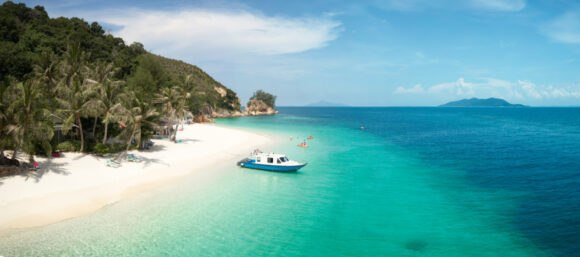
Uitbreiding samenwerking Travelport en Tourism Malaysia na succesvolle datagestuurde campagne

Airbus Tech Hub van start in Nederland
Inschrijven nieuwsbrief, gerelateerde berichten.

TRAVELNEXT is hét leading kennisplatform voor de gehele reisbranche, met een focus op de laatste updates en ontwikkelingen binnen de (online) reismarkt. Onderwerpen die worden behandeld zijn onder meer Technologie, Duurzaamheid, AI, Marketing, E-commerce en HR.
Categorieën
- Duurzaamheid
- Privacy en Cookiebeleid
- Volg ons op
- Copyright © TravelNext.nl, All rights reserved.
- Mind & body
Series & films
- Straf Verhaal
- Wedstrijden
- Kortingscodes
- Deel dit artikel:
Maakte jij ook een kiekje aan de Berlijnse Muur of bracht je misschien zelfs een bezoekje aan Tsjernobyl?
Dark tourism: wat is het en hoe komt het dat we er zo door geobsedeerd zijn?

Van het bijwonen van een exorcisme over het bezoeken van een bezeten bos tot feesten op een voodoofestival: journalist David Farrier maakt er in de Netflixdocumentaire ‘Dark Tourist’ een sport van om de meest macabere plekjes op aarde van zijn bucketlist af te vinken. Totaal geschift of een wel heel aparte vorm van toerisme? Dark tourism is hoe dan ook aan opmars bezig.
Dark tourism krijgt dankzij series als ‘Chernobyl’, ‘Reizen Waes’ en ‘Dark Tourist’ een heel andere, veel menselijkere dimensie. Maar wat is duister toerisme eigenlijk? Waneer ben je zelf een dark tourist ? En is het wel ethisch verantwoord ? Wij zochten naar een antwoord op jouw meest prangende vragen over donker toerisme.
Wat is dark tourism nu precies?
Duister toerisme ofte thanatoerisme wordt vaak geassocieerd met de dood, een ramp of een tragedie . Elke vorm van reizen naar een plek waar in het verleden iets gruwelijks gebeurde wordt beschouwd als duister toerisme. De reisvorm won doorheen de jaren aan populariteit en is nog steeds aan een serieuze opmars bezig. Interessant om te weten, is dat er verschillende gradaties van duister toerisme bestaan. Sommige toeristen vinden het interessant om foto’s te nemen aan de Berlijnse Muur – ja, ook dat is duister toerisme, maar wel in een lichte vorm – anderen houden ervan om in een attractie als London Dungeon op een ludieke manier op stang gejaagd te worden en nog anderen gaan dan weer op zoek naar de real deal.
Waarom zijn we zo geïnteresseerd in dark tourism ?
Feit is dat onze geschiedenislessen niet meteen de meest romantische lessen waren en onze geschiedenis vooral getekend wordt door gruwelijke gebeurtenissen. Het opzoeken van dergelijke duistere gebieden of gedenkplaatsen stelt ons in staat om na te denken over het verleden. Dark tourism leunt in de meeste gevallen dus sterk aan tegen educatief toerisme . En hoewel donker toerisme misschien geen prettige vrijetijdsbesteding is, genieten veel mensen van het educatieve aspect dat ermee gepaard gaat, althans zo blijkt uit een studie van de Taiwan Hospitality and Tourism University.
Paradoxaal genoeg lijkt het er zelfs op dat we ons beter voelen nadat we zo’n plek bezocht hebben, net omdat we zo zelf met eigen ogen kunnen zien, en dankzij een goede gids misschien zelfs kunnen ervaren, hoe het er vroeger aan toeging. Het feit dat we op die plaatsen ons medeleven betuigen, zou ons volgens de studie helpen om het verleden los te laten en beter na te denken over de huidige maatschappij.
Ben jij een dark tourist ?
Bezocht je ooit een oorlogsmuseum, een gedenkteken of een concentratiekamp? Of denk je erover na om dat te doen? Dan val ook jij in principe onder de categorie duistere toerist. Elk jaar bezoeken bijna een miljoen mensen de Berlijnse Muur: het is de topbestemming bij een bezoek aan de stad Berlijn, maar veel mensen staan er allang niet meer bij stil met welke gruweldaden de muur geassocieerd wordt. Dat neemt echter niet weg dat je geen dark tourist bent.
Is het ethisch correct?
De recente toestroom van Instagramfoto’s die gemaakt worden in Auschwitz en Tsjernobyl zorgen voor een toestroom aan verontwaardigde reacties . De manier waarop sommige influencers op dergelijke sites poseren is problematisch, net zoals het ook allesbehalve oké is om je er verkeerd of respectloos te gedragen. Op welke plaatsen het al dan niet ethisch verantwoord is, is sterk afhankelijk van de lokale cultuur, de aard van de ramp en de impact ervan op onze geschiedenis. Sommige gedenkplaatsen móét je bezocht hebben, andere plekken sla je uit respect beter gewoon over. Wat op zo’n plek nooit ofte nimmer door de beugel kan?
- Mensen die het emotioneel moeilijk hebben fotograferen en/of lastig vallen.
- Lachen met de gebeurtenissen die er plaatsvonden.
- Ongepaste opmerkingen of lichaamsbewegingen maken.
- Respectloze kleding dragen.
- Luid praten over niet-gerelateerde problemen
In onderstaande Ted Talk legt professor Dorina-Maria Buda uit waarom duister toerisme van groot belang is en hoe we op een respectvolle én leerzame manier de sites kunnen bezoeken.
Wat zijn populaire duistere plaatsen?
Tsjernobyl, de Berlijnse Muur, Auschwitz, Hiroshima, National September 11 Memorial & Museum , Robbeneiland, Oradour-sur-Glane, Pompeii, ...
- 5 redenen om ook buiten het skiseizoen een reisje naar Les Trois Vallées te boeken
- ADD TO BUCKETLIST: Terme di Saturnia, hét paradijs op aarde voor waterratten
- ADD TO BUCKETLIST: 7 Kroatische eilanden waar je nog nooit eerder van hoorde
Fout opgemerkt of meer nieuws? Meld het hier
Partner Content

Reisgelukjes – reisblog
Reisgeluk voor 2 ♥️ eerlijker ♥️ voor een fijn budget
Dark tourism: meest verschrikkelijke bezienswaardigheden van de wereld
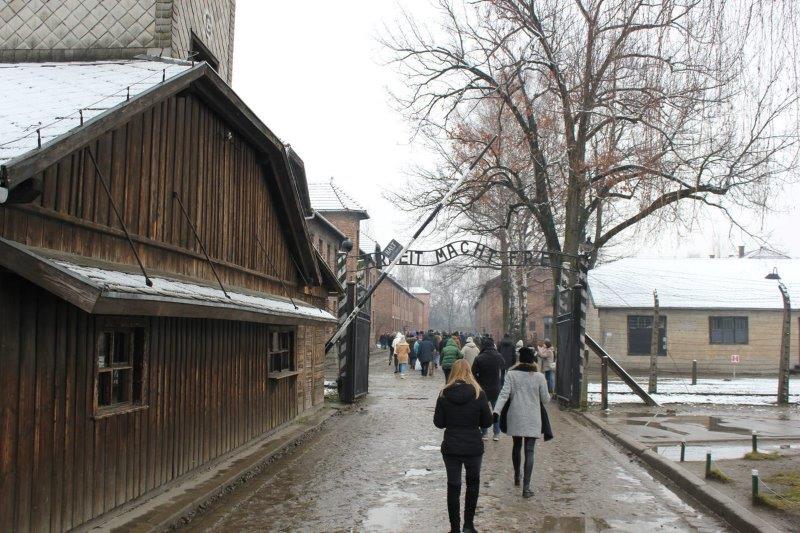
Dark tourism wordt een nieuwe trend genoemd. Bij dark tourism bezoek je de meest verschrikkelijke bezienswaardigheden van de wereld. Je gaat dan dus niet naar een bestemming omdat deze zo mooi is, maar vanwege de donkere en verschrikkelijke geschiedenis die samenhangt met een plek. Deze trend staat ook ter discussie, want hoe ethisch is het dat je als toerist deze plekken bezoekt? Vooral als je ook nog een vrolijke selfie op deze morbide plek maakt. In mijn blog ga ik in waarom het bezoeken van deze vreemde attracties je een repectvoller mens maken, wat je vooral niet moet doen en deel ik de meest verschrikkelijke bezienswaardigheden met je die ik heb bezocht.
Inhoud van dit blog
Waarom het bezoeken van de verschrikkelijkste bezienswaardigheden van de wereld volgens mij geen slechte trend is
Het hangt natuurlijk af van je intenties, maar ik denk dat de meeste toeristen niet aan dark tourism doen voor de mooie selfies. De meesten doen dit om zicht bewust te zijn van de volledige geschiedenis van een land, die meestal helaas nogal wat rafelige randjes kent. En dat is één van de redenen om deze verschrikkelijke bezienswaardigheden van de wereld te bezoeken.
We must never forget Wordt veel gezegd over de Holocaust
In Europa hebben veel van deze lugubere bezienswaardigheden hun oorsprong in de Eerste en Tweede Wereldoorlog. Iets wat we nooit mogen vergeten, al is het maar omdat dit nooit meer mag gebeuren. En nu kun je praten en lezen over de gruwelijkheden uit deze oorlog. Of je kunt Auschwitz bezoeken en dat nooit meer van je netvlies krijgen. Bijvoorbeeld door de rollen stof gemaakt van mensenhaar te zien. Dan weet je één ding zeker: we mogen dit nooit vergeten.
Het bezoeken van de meest verschrikkelijke bezienswaardigheden ter wereld maakt je een dankbaar mens
En al klinkt het niet als een reisgelukje, ik denk dat het bezoeken van deze plekken je een completer mens maakt. Vooral omdat we het hier in Nederland over het algemeen best goed hebben. Dit soort lugubere bezienswaardigheden bezoeken doet je inzien dat je best dankbaar mag zijn voor je huidige leven. En dat we ook eigenlijk ons leven mogen verdedigen tegen al die mensen die onze huidige vrijheden willen inperken. Mocht je op vakantie nou alleen maar dit soort gruwelijke plekken willen bezoeken, no judgement, is het misschien wel tijd om er eens met iemand over te praten.
Soms bezoek ik de meest verschrikkelijke bezienswaardigheden omdat bepaalde nieuwsgebeurtenissen grote indruk op mij hebben gemaakt. Eén van de eerste dingen die ik mij herinner is de kernramp bij Tsjernobyl. Ook vind ik dit wetenschappelijk interessant, dus zou ik dit gebied ooit graag willen bezoeken zodra het weer kan.
Soms kom ik ook per ongeluk op gruwelijke plekken terecht. Zo gingen we in 2006 vanaf de Kroatische kust een dagtrip maken naar de mooie meren van Plitvice. Niet wetende dat we onderweg nog kapotgeschoten huizen en huizen met kogelgaten zouden tegenkomen vanuit de Balkanoorlog. Dan komt zo’n oorlog in ene erg dichtbij.
Wat je volgens mij vooral niet moet doen als dark tourist op een van de verschrikkelijke plekken van de wereld
Volgens mij moet je als dark tourist altijd respectvol zijn op de plek waar je bent. Vaak hebben veel mensen op deze plek het leven gelaten, of worden zij op deze plek herinnert. Hoe zou jij het vinden als je opa of oma hier zou zijn omgekomen. Ga dus geen lachende selfies maken, of als model poseren en ga de foto’s al helemaal niet met grappige teksten op je social media zetten. Ga ook niet ter plekke luidruchtig zijn of de grapjurk uithangen. Gedraag je rustig en luister naar de verhalen die slachtoffers en gidsen je vertellen.
De ene verschrikkelijke bezienswaardigheid van de wereld is minder dark dan de ander
Oké, er gezegd zijn er plekken op de wereld die ik vooral heb bezocht om even lekker te griezelen die wel bekend staan als dark tourismplek. Is dat slecht? Zo hebben de catacomben van Parijs geen gruwelijke geschiedenis, maar ontstonden die toen de begraafplaatsen overvol raakten. Een macabere plek, maar daar houdt het ook mee op. Al kun je jezelf afvragen hoe respectvol het is dat we nu met duizenden bezoekers per dag tussen honderden jaren oude de skeletten lopen, ook al zijn ze niet vermoord voor dit doel. Deze bestemming wordt wel als dark tourism gezien.
Capela dos Ossos in het Portugese Evora is ook een macabere plek waar de botten en schedels van zo’n 5000 monniken zijn verwerkt, al vond men hier het een grote eer om er een plek te krijgen. Zowel de catacomben als de kapel drukken je ook weer even met je neus op de feiten: het leven is vergankelijk. In Evora luidt de inscriptie niet voor niets dat deze botten op de jouwe wachten.
Met de meest verschrikkelijke bezienswaardigheden van de wereld bedoel ik dus de meest gruwelijke. Niet de toeristenfuiken die prachtig zijn, maar helaas te druk geworden.

De meest verschrikkelijke bezienswaardigheden van de wereld waar ik dark tourist ben geweest
Ik heb al op verschillende plekken ter wereld de Dark tourist uitgehangen. Soms bedoeld en soms onbedoeld. Op sommige plekken om een beter gevoel te krijgen bij historische gruweldaden uit het verleden. Maar soms ook om gewoon te griezelen bij het macabere. Ja, ook daar heb ik mij soms schuldig aan gemaakt.
1. De landingsstranden van D-day zijn een verschrikkelijke bezienswaardigheid
Eén van de eerste plekken die ik bezocht, als dark tourist avant la lettre, waren als tiener de landingsstranden van D-Day in het Franse Normandië. Eigenlijk ook als onderdeel van mijn opvoeding. Wanneer je deze plek bezoekt kun je niet anders dan respect krijgen voor die buitenlandse soldaten die de vrijheid van Europa hebben bevochten. Vooral pont du hoc maakte indruk op mij met de meer dan manshoge kraters. Maar bovenop de krijtrotsen naar beneden kijkend kun je niet anders dan bedenken hoe soldaten hier kanonnenvoer waren.
Eigenlijk vind ik dat iedereen de landingsstranden van D-Day in ieder geval1 keer zou moeten bezoeken in zijn/haar leven. En ik hoop zeker Tom nog een keertje mee te nemen hier mee naartoe.
2. De meest verschrikkelijke bezienswaardigheid ter wereld die ik ooit heb bezocht: Auschwitz
Terugdenkend aan Auschwitz lopen de rillingen nog steeds over mijn rug. Natuurlijk bezochten we deze plek op een donkere en koude decemberdag, wat ook al niet helpt, omdat je zo extra veel gevoel krijgt bij alle ontberingen die de gevangenen moesten ondergaan. Wat ook niet hielp was dat er bij aankomst alleen nog plek was in de Duitstalige tourgroep, waardoor we de hele rondleiding rondliepen met een Duits vlaggetje op onze jassen.
We begonnen bij Auschwitz I, waar het startte als gevangenenwerkkamp. Hier werden we door de poort met Arbeit macht Frei naar de verschillende stenen barakken geleid. Waaronder de plek waar alle spullen verzameld werden: kamers vol koffers, schoenen en kleding, want alles werd hergebruikt. Het toppunt van efficiency van de nazi’s waren voor mij de rollen stof gemaakt van mensenhaar. Daarna gingen we verder naar Auschwitz II – Birkenau. Het eigenlijke vernietigingskamp. Na een korte introductie in één van de weinige houten barakken mag je hier in je eentje langs het spoor dwalen om je fantasie de vrije loop te laten gaan. En ja, daar wordt je extreem treurig van.
Dit was voor ons een stop bij Auschwitz onderweg naar Krakau . Maar die avond in Krakau waren we er nog stil van. We aten bij een heel goed restaurant, maar daar konden wij niet meer van genieten.

3. Berlijn Hohenschönhausen – voormalige Stasi gevangenis
Een andere plek die hoog bovenaan mijn lijstje staat van meest lugubere plekken waar ik ooit ben geweest is Hohenschönhausen in Berlijn . In deze voormalige Stasi-gevangenis krijg je rondleidingen van voormalig gevangenen, en ook dat ging mij niet in de koude kleren zitten. De Stasi was namelijk geoefend in verschillende martelpraktijken. Zo was er een uitgebreid systeem waardoor je nooit medegevangenen tegenkwam en je helemaal werd geïsoleerd in de hoop dat je dan brak en je gevangenisbewaarders in vertrouwen ging nemen. Donkere opsluiting, waarbij je cel vol met water liep was ook een optie.
Ten midden van alle kerstmarkten die we Berlijn bezochten was dit wel een bezienswaardigheid die je de andere kant van Berlijn laat zien en die je nederig maakt. Vooral als je gids verteld dat hij ook opgesloten is geweest en dat ze nog steeds bedreigd worden door voormalige wachten van de gevangenis!
Nu is Berlijn sowieso een hotspot voor dark tourism. Je vind hier een aantal van de meest verschrikkelijke bezienswaardigheden ter wereld. Zo bezochten we ook het indrukwekkende en enorme holocaust-monument en probeerden we een stuk langs de voormalige Berlijnse muur te fietsen. Ook bezochten we het Topographie des Terrors op het terrein van voormalige SS- hoofdkwartieren, dat onder andere over de misdaden tegen de menselijkheid van de nazi’s gaat.
In het Estse Tallinn bezochten we een oude KGB-gevangenis , wat ook een gruwelijke bezienswaardigheid is. Die je laat zien dat deze gruwelijkheden zo dichtbij en nog maar zo kort geleden waren.
Boek een hotel in Berlijn via de eerlijke boekingssite Moonback

4. Kamp Westerbork is ook een verschrikkelijke bezienswaardigheid
Na Auschwitz vonden we dat we onszelf niet alleen de meest verschrikkelijke bezienswaardigheid van de wereld moesten confronteren, maar dat we die van Nederland ook moesten bezoeken: Kamp Westerbork . Hier begonnen veel Nederlandse Joden, en andere slachtoffers met hun reis naar één van de vernietigingskampen in het buitenland. Je krijgt hier een verschrikkelijk beeld van de hoeveelheid mensen die dit is overkomen. De afgebogen treinrails en het huis van de kampcommandant verstild onder de kas complementeren deze nare ervaring. Zowel heen- als terug is het een flink stuk lopen naar de parkeerplaats en kun je alles even van je af lopen.
Sowieso hebben eigenlijk alle dark tourism-spots in Nederland te maken met de Tweede Wereldoorlog en de verschrikkingen van de nazi’s. Wat denk je van het Anne Frank-Huis en kamp Amersfoort? En ik wil zeker eens mijn respect betuigen op de Waalsdorpervlakte.
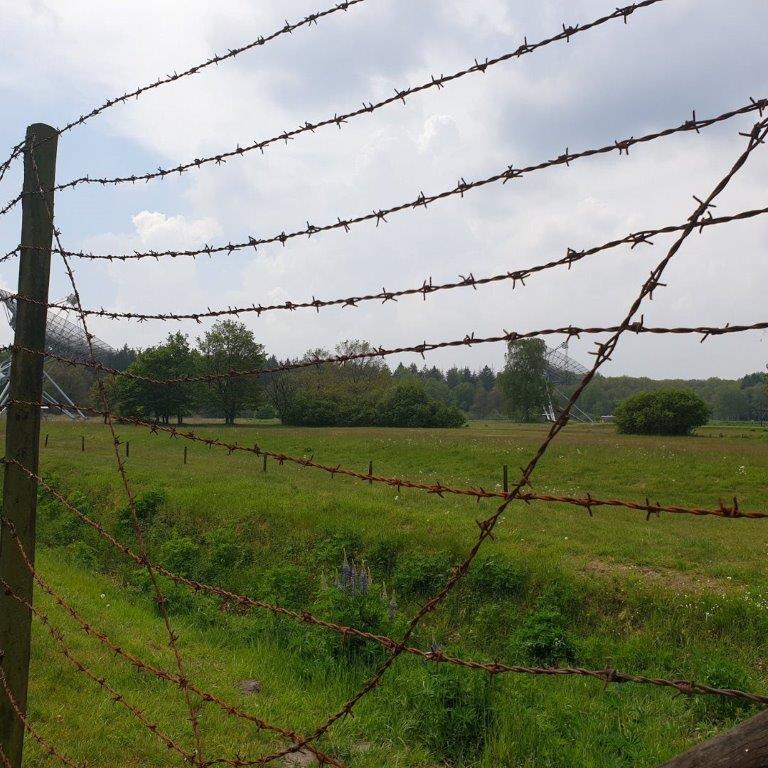
5. De Actun Tunichil Muknal grot in Belize
Eén van de meest bizarre bezienswaardigheden ter wereld waar ik ooit ben geweest, is de Actun Tunichil Muknal grot in Belize . De manier waarop je bij deze grot komt is al erg avontuurlijk: al wadend door een rivier in een grot. De Maya’s hebben in dit grottenstelsel ruim 1000 jaar geofferd, ook mensen. Je ziet hier dus ook skeletten liggen van mensen. In totaal zijn er 14 skeletten gevonden, tot nu toe. Maar hoe vrijwillig die mensen zich hebben laten offeren, dat is de vraag. Wellicht onder invloed van drugs, of was het hun geloof waardoor ze zich aanboden? Maar mensenoffers zien, vrijwillig of niet, is vrij macaber. Dus zit de ATM-grot voor mij toch in mijn top 5 van meest verschrikkelijke bezienswaardigheden van de wereld.
Nu ben ik benieuwd: welke verschrikkelijke bezienswaardigheden van de wereld heb jij bezocht en welke staat nog op je netvlies gebrand?
Over auteur
Ik ben Maaike van het reisblog Reisgelukjes. Ik schrijf over de leukste reizen voor 2, adultproof, voor een fijne prijs en liefst met een duurzamer karakter.
Je kunt je voorstellen dat het onderhouden van een reisblog veel tijd en geld kost. Daarom zijn sommige van de links op deze website gesponsord. Als je via deze links iets besteld of boekt, dan kost het jou niets extra's, maar krijg ik een kleine bijdrage. Wat mij weer helpt om deze website zo interessant mogelijk te houden.
Vind je een blog leuk? Laat dan vooral een reactie achter! Ook dat helpt mij om deze website zo actueel mogelijk te houden.
Dit vind je misschien ook leuk...
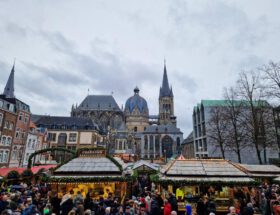
Leuk Aken: fijne kerstmarkt en meer in deze Duitse stad
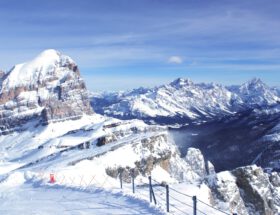
8x Wintersportgebied voor als je meer wilt zien
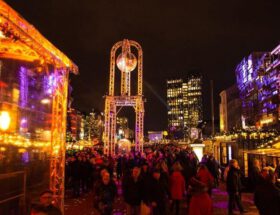
De leukste kerstmarkten van Europa volgens reisbloggers
Populaire berichten.
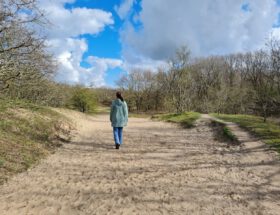
Wandelroute uitstippelen Castricum: langs 4 restaurants in de Kennemerduinen
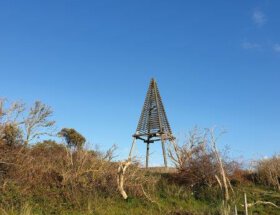
Vakantie Waddeneiland Schiermonnikoog: een groot natuurgebied van Oost naar West
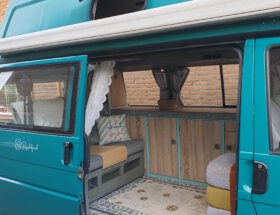
How to: Een oud campertje pimpen in 10 stappen
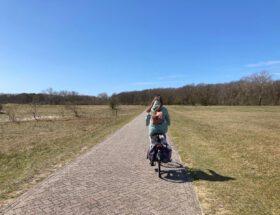
Fietsroute Castricum plannen: een unieke culinaire tocht
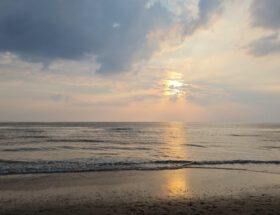
De tofste adresjes voor een vakantie in Castricum volgens locals
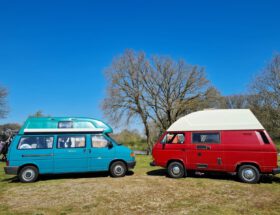
Campings voor tweedehands campers: boek snel 1 van deze hippe plekjes
Oh zat! Vooral veel WW2 musea, Auschwitz was wel het meest verschrikkelijke, maar ook die in Jeruzalem bijvoorbeeld. Misselijkmakend. En de ruimtes ter grootte van een voetbalveld gevuld met botten in Napels, ook vreselijk.
Ja, wat een naargeestige plekken zijn dat he! Wat waren dat voor ruimtes in Napels? Als ik er zo naar kijk was Pompeii ook naar met die gipsafdrukken in de vorm van de mensen die de holtes hadden achtergelaten in de lava…
Het dorp Oradour-sur-Glane net boven Limoges in Frankrijk. Misschien ook eerst boeken lezen erover. Er is een grote camperplaats in het nieuwe dorp.
Oh, wat een verschrikkelijk verhaal zeg!
Geef een reactie Reactie annuleren
Het e-mailadres wordt niet gepubliceerd. Vereiste velden zijn gemarkeerd met *
Mijn naam, e-mail en site bewaren in deze browser voor de volgende keer wanneer ik een reactie plaats.
Ontvang maximaal 1 keer per maand de nieuwste artikelen en reistips
Je aanmelding voor de nieuwsbrief is gelukt! Ik zal je niet spammen, beloofd!
Er is een error opgetreden, probeer het opnieuw.
- WO2 Onderzoek uitgelicht
- Herdenken & vieren
- Leven met oorlog
- Bronmateriaal
- Over deze portal
- Juridische informatie
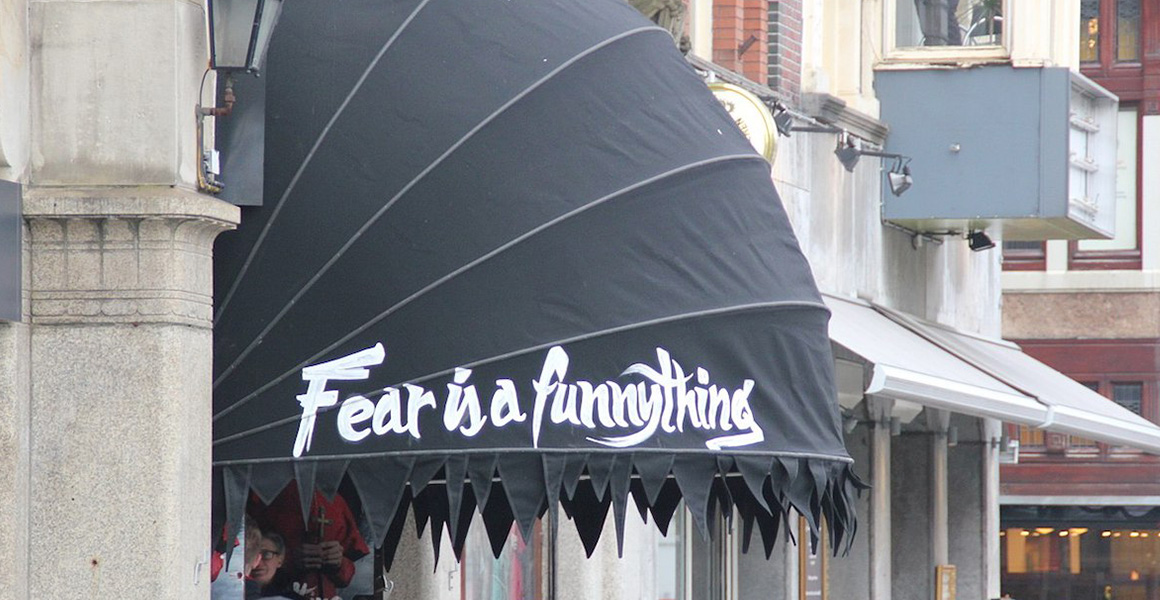
Dark tourism nader verklaard
door Frank van der Elst (redactie WO2 Onderzoek uitgelicht) – leesduur 7 minuten
Wanneer het over oorlogstoerisme gaat, is de term dark tourism nooit ver weg. Maar wat betekent deze term nu eigenlijk? En op wat voor manieren wordt hij toegepast? WO2 Onderzoek uitgelicht vroeg het dé expert op dit terrein in Nederland: Karel Werdler, docent toerisme aan de Hogeschool Inholland in Diemen en daarnaast verbonden aan het Institute of Dark Tourism Research (iDTR) in Lancashire, Engeland. Samen met student Lisanne Antenbrink licht hij het begrip dark tourism toe. “Een complex en tegelijk razend interessant vakgebied.”
V oordat Werdler als docent aan de slag ging, was hij jarenlang werkzaam voor verschillende touroperators, onder meer als reisleider. In die hoedanigheid bezocht hij de meest uiteenlopende plekken op de wereld. Ook plekken die niet op ieders to-do-lijstje voor de vakantie zullen staan: begraafplaatsen, gevangenissen, martelkamers, voormalige kampen, executieplaatsen. “Het waren vaak de reizigers zelf die mij vroegen hen hiernaartoe te brengen”, aldus Werdler. “Zo is mijn interesse voor deze vorm van toerisme ontstaan. Ik heb zelf ooit één keer een bezoek aan Auschwitz gebracht, lang geleden. Ik wil daar nooit meer naartoe. Een verschrikkelijke plek. Maar er zijn dus heel veel mensen die tijdens hun vakantie wel dit soort plekken bezoeken. Ik wil weten wat hen beweegt.”
De aantrekkingskracht van dit soort locaties komt volgens Werdler mede voort uit het feit dat we in een tijd leven waarin we heel ver zijn gevorderd op technologisch gebied, we van alles weten, van alles begrijpen en van alles kunnen aantonen, behalve wat er na de dood is en wat er dan met ons gebeurt. “Het laatste grote mysterie”, noemt hij het. “En ook dat willen we ontrafelen.” De toename van rondleidingen op begraafplaatsen ziet Werdler dan ook als een treffend voorbeeld van hoe we tegenwoordig met de dood omgaan. “We zoeken het steeds meer op.”
Containerbegrip
De term dark tourism werd in 1996 voor het eerst geïntroduceerd, in een wetenschappelijk artikel geschreven door onderzoekers John Lennon en Malcolm Foley. Enkele jaren later verscheen van hun hand het boek Dark Tourism. The Attraction of Death and Disaster .
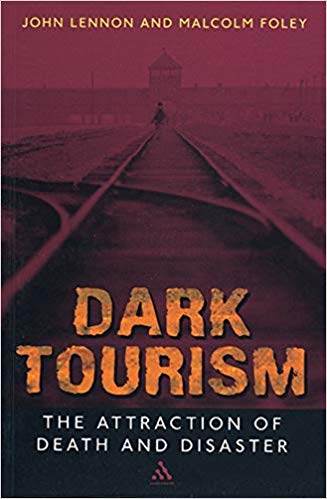
Omslag van het boek Dark Tourism van John Lennon en Malcolm Foley.
De definitie die Werdler hanteert voor dark tourism is bedacht door Philip Stone, directeur van het iDTR en co-auteur van het boek The Darker Side of Travel: The Theory and Practice of Dark Tourism uit 2009. Werdler: “ Dark tourism is het reizen naar locaties die in verband kunnen worden gebracht met de dood, het lijden en het schijnbaar macabere.” Dat hierbij een groot onderling verschil bestaat tussen de diverse locaties is evident. “Er zijn pikzwarte plekken, denk aan de voormalige vernietigingskampen in Oost-Polen of de killing fields in Cambodja. Hier is het verleden nog relatief dichtbij en is de dood, het lijden, alom aanwezig. Maar er zijn natuurlijk ook beduidend lichtere plekken als The Amsterdam Dungeon, waar amusement een grote rol speelt en het vooral om griezelen gaat”, aldus Werdler. “Musea vallen hier tussenin. Afhankelijk van de collectie die ze tonen en de vorm waarin ze dat doen, zijn ze lichter of donkerder te noemen. Het maakt daarnaast een groot verschil of je een museum bezoekt op de historische plek zelf of een museum dat een historisch verhaal vertelt, maar losstaat van de feitelijke plek waar dat verhaal zich heeft afgespeeld. De authentieke plek brengt altijd een extra lading met zich mee.”
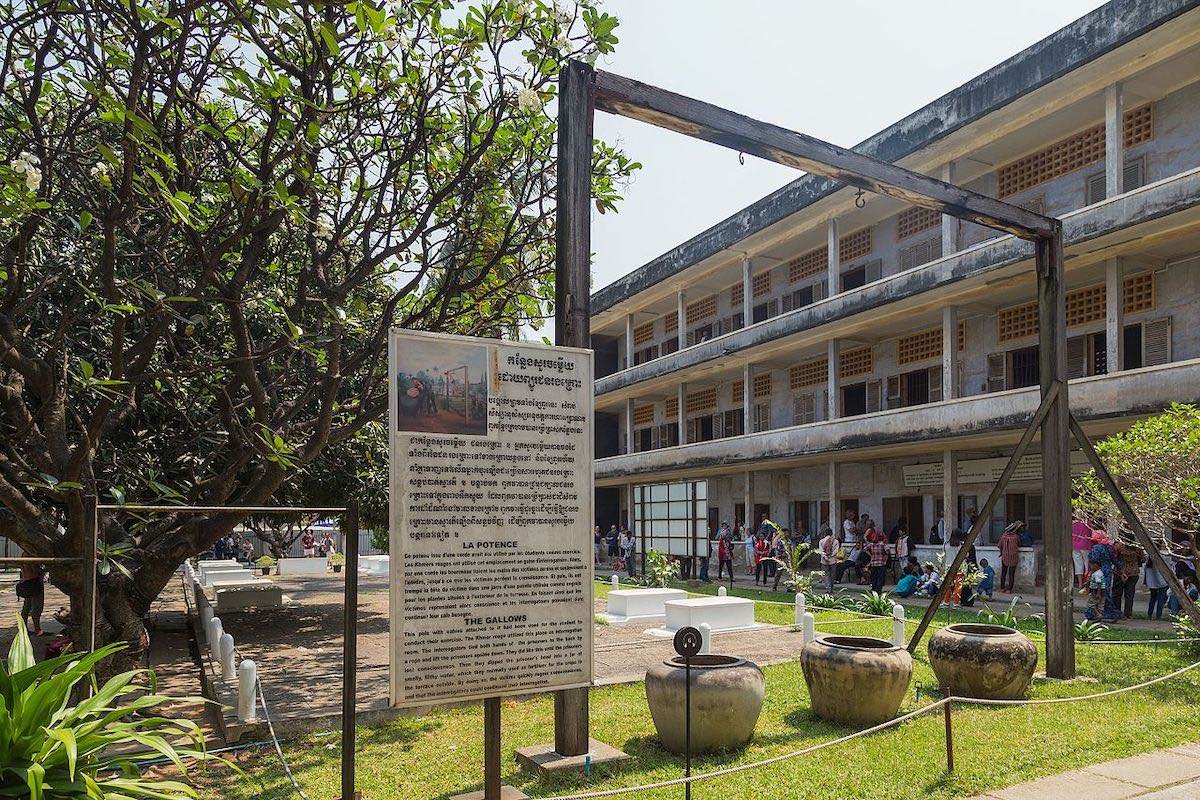
Het eerste wat je ziet als je het Genocide Museum in Phnom Penh bezoekt: een galg die het Pol Pot-regime gebruikte om tegenstanders te vermoorden. Foto: Marcin Konsek op Wikimedia Commons (CC BY-SA 4.0)
Ondanks de grote onderlinge verschillen vallen al deze locaties onder het containerbegrip dark tourism , een begrip dat onvermijdelijk associaties oproept met ramptoerisme of verheerlijking van geweld. Niet iedereen is dan ook even gelukkig met deze term. “Ik adviseer mijn studenten om in hun contact met musea en herinneringscentra, bijvoorbeeld in het kader van een onderzoeksopdracht, voorzichtig te zijn met het gebruik van de term dark tourism . Het kan afschrikken en dat begrijp ik best. Het Anne Frank Huis valt onder de definitie van dark tourism , maar zelf zien ze dat absoluut niet zo. Het wordt dan erg moeilijk om ze te overtuigen van je goede bedoelingen. Ik ben daarom nog op zoek naar een passende Nederlandse vertaling.”
Een plek waar het toerisme rond een zwarte bladzijde uit de geschiedenis een industrie op zichzelf is geworden, is Ieper en omgeving. Mensen van over de hele wereld bezoeken daar de talloze loopgraven, musea en begraafplaatsen die herinneren aan de Eerste Wereldoorlog. Battlefield tourism wordt het wel genoemd.
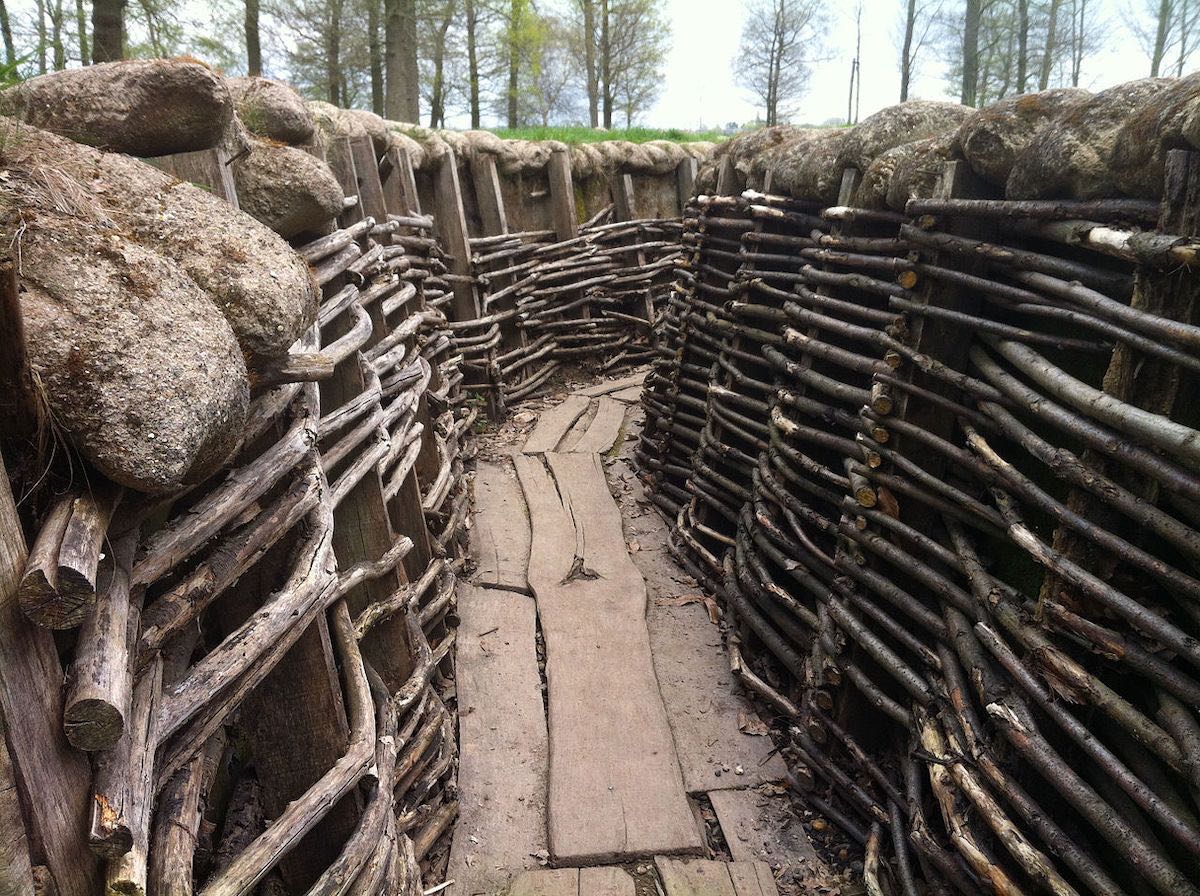
Vlakbij Ieper valt een reconstructie van een Duitse loopgraaf te bezoeken. Foto: Sandra Fauconnier op Wikimedia Commons (CC BY 4.0)
Ook de herdenking onder de Menenpoort in Ieper – waar al decennialang iedere avond om klokslag 20.00 uur de Last Post wordt geblazen – trekt vele belangstellenden; merendeels toeristen die, naast het bezoeken van de historische plekken, ook het bijwonen van deze herdenking op hun ‘verlanglijstje’ hebben staan. Is dit ook (een vorm van) dark tourism ? “Dat zou je zo kunnen noemen, ja. Een groot deel van de mensen die daar staan, herdenkt inderdaad niet, maar is toeschouwer van de herdenking. Ze willen het een keer meegemaakt hebben. Op basis van de definitie van Philip Stone kun je dat als een uiting van dark tourism beschouwen. Maar voor je zoiets stelt, moet je toch echt eerst de persoonlijke motieven van al die mensen kennen. Waarom staan zij daar? Dat maakt dit vakgebied zowel complex als razend interessant. Er zijn zo veel invalshoeken mogelijk. Waarom wordt iets aangeboden? Voor wie wordt dat gedaan? En wat beweegt iemand om aan een bepaalde activiteit deel te nemen of een bepaalde historische plek te bezoeken?”
Die laatste vraag, naar de motivatie van mensen om plekken die in verband staan met de dood te willen zien, vindt Werdler de meest interessante. Ook voor Lisanne Antenbrink, een van Werdlers studenten, was interesse in die motivatievraag het startpunt voor haar afstudeeronderzoek naar bezoekers van herinneringscentra in Nederland en België. “Nadat ik beelden zag van jongeren in Auschwitz die ogenschijnlijk vrolijk selfies stonden te maken in het kamp, raakte ik geïnteresseerd in de motieven van mensen om dergelijke plekken te bezoeken en hoe dat hun gedrag ter plaatse beïnvloedt.” Antenbrink zag grote verschillen in hoe mensen zich tijdens hun bezoeken aan verschillende kampen in Nederland en België gedroegen. Waar het voor ouderen over het algemeen vanzelfsprekend is dat dit zwarte plekken zijn en dat daar een zekere ingetogenheid en stilte bij past, ligt dat voor jonge bezoekers anders. De afstand in tijd heeft invloed op die vanzelfsprekendheid en dat zie je terug in de manier waarop jongeren zich op die plekken gedragen. Werdler: “Dit is een ontwikkeling waar Tweede Wereldoorlog-locaties de komende jaren meer en meer mee te maken gaan krijgen. Hoe verder de oorlog in het verleden ligt, hoe minder zwart deze plekken door het publiek zullen worden ervaren.”
Antenbrink constateerde bij schoolgroepen dat een goede voorbereiding in de klas van grote invloed is op hoe scholieren zich gedragen tijdens een bezoek. “Jongeren die van tevoren actief met het onderwerp bezig waren geweest en wisten wat voor soort plek ze gingen bezoeken, gedroegen zich over het algemeen rustiger en stelden zich geïnteresseerder op dan scholieren met weinig voorkennis en nauwelijks voorbereiding.” Het is dit soort kennis dat musea en herinneringscentra kan helpen in hun omgang met schoolbezoeken of bij het opstellen van gedragsregels. Veel van de studenten die bij Karel Werdler zijn afgestudeerd, komen dan ook terecht in adviserende of publieksgerichte functies bij musea, touroperators of gemeenten.
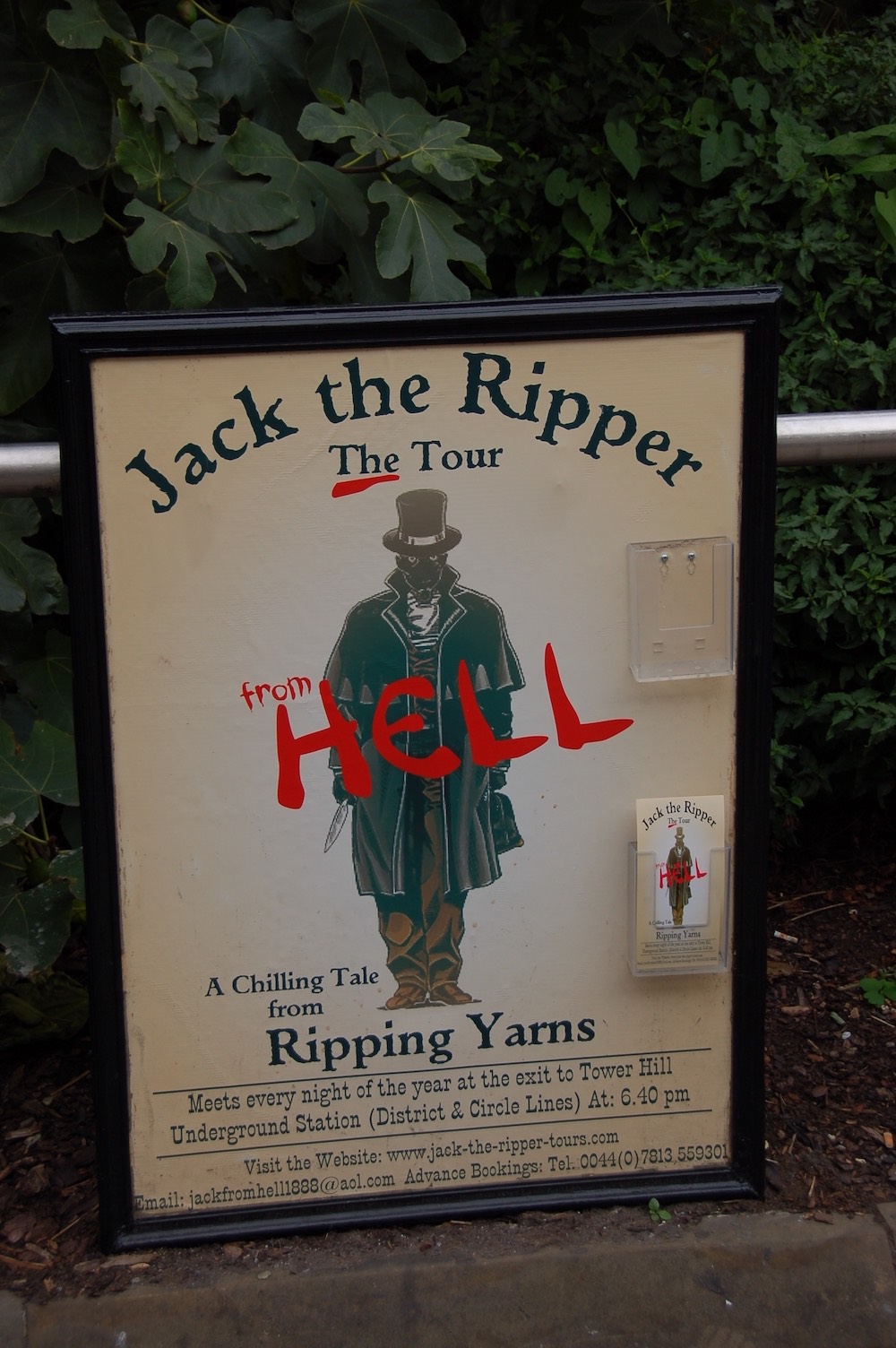
Griezelgeschiedenissen als vermaak: Jack the Ripper-tours in Londen zijn een groot succes. Foto: Ralf Roletschek op Wikimedia Commons (CC-BY-NC-ND)
Hoewel dark tourism een veelvoorkomend verschijnsel is, ontmoet Werdler maar weinig mensen die er openlijk voor uitkomen een dark tourist te zijn. “In al die jaren dat ik mij met dit onderwerp bezighoud, heb ik slechts twee mensen gesproken die onomwonden toegaven dark tourist te zijn en me vertelden het bezoeken van plekken die in verband staan met de dood oprecht leuk en spannend te vinden. Eén van hen nam deel aan een Jack the Ripper-tour in Londen, ging daarna naar de vernietigingskampen van de Tweede Wereldoorlog om vervolgens via een stop in Rwanda door te reizen naar de killing fields in Cambodja. Toen ik dat hoorde, stond ik wel even verbaasd te kijken.” Voor de meeste mensen gelden echter andere drijfveren. Een algemene interesse in geschiedenis bijvoorbeeld, of een meer gerichte belangstelling voor de Tweede Wereldoorlog. Die laatste interesse kan dan weer toegespitst zijn op wapentuig, veldslagen, de Jodenvervolging, het verzet of andere specifieke thema’s. “Ook hier kun je op basis van de definitie van Stone stellen dat dit allemaal dark tourism betreft”, aldus Werdler. “Maar een battlefield tourist zal zichzelf vaker niet dan wel als dark beschouwen. Het is sterk afhankelijk van de motieven van de bezoeker.”
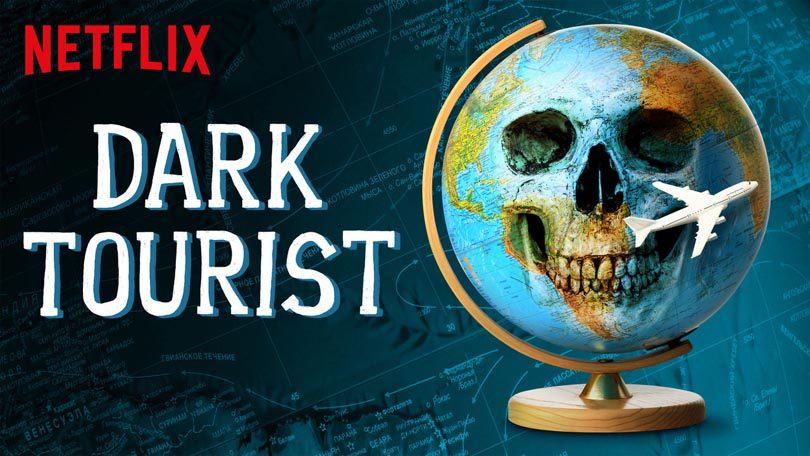
In 2018 zond Netflix de eerste afleveringen van de nieuwe serie Dark Tourist uit. Foto: Netflix
Op Netflix is sinds 2018 een documentaireserie te zien met de titel Dark Tourist . Hierin bezoekt een journalist “ongelooflijk bizarre, en soms gevaarlijke, toeristische bestemmingen over de hele wereld”, zoals de makers het verwoorden. De serie biedt vooral sensatie en is niet direct interessant voor mensen die naar achterliggende motivaties of verbanden zoeken. Toch ziet Werdler hier een kans. “Het is onvermijdelijk dat mensen sociaal wenselijke antwoorden geven wanneer je ze vraagt naar hun motieven om bijvoorbeeld een voormalig kamp te bezoeken. De populariteit van zo’n Netflix-serie zou ertoe kunnen leiden dat meer mensen openlijk toegeven een fascinatie met de dood te hebben. Wellicht zijn er veel meer dark tourists dan we op dit moment aannemen. Als dat inderdaad het geval is, geeft dat het onderzoek een heel nieuwe dimensie.”
Over de geïnterviewden
Van Karel Werdler verscheen in 2015 het boek Dark tourism, de dood achterna (momenteel niet leverbaar). Na zijn pensionering over twee jaar gaat hij zich meer toeleggen op zijn werkzaamheden voor het iDTR. Ook werkt hij dan verder aan zijn proefschrift over dark tourism . Lisanne Antenbrink studeert onder begeleiding van Karel Werdler in het voorjaar van 2019 af aan de opleiding Tourism Management.
Foto bovenaan artikel
De slogan ‘Fear is a funny thing’ bij de ingang van The Amsterdam Dungeon laat zien: angst kun je op vele manieren beleven. Tobias Niepel op Wikimedia Commons (CC BY 2.0)

Dark Tourist | Reizen naar meest bizarre & gevaarlijkste plekken ter wereld
Hey wereldreizigers, kennen jullie Dark Tourist al? Dark Tourist is een bizarre documentaireserie uit Nieuw-Zeeland over het fenomeen Dark Tourism, oftwel duister / donker toerisme. Dark Tourism is een snel groeiend fenomeen waarbij je naar plekken en ervaringen op zoek gaat die verre van ‘normaal’ zijn. Het Netflix programma gaat dus niet naar de mooiste stranden ter wereld, maar duikt juist in de duistere kant van het toerisme en gaat op zoek naar bizarre gebeurtenissen en de gevaarlijkste plekken ter wereld. Dark Tourist wordt gepresenteerd door journalist David Farrier . De serie heeft acht afleveringen en is een must-see voor elke wereldreiziger die op zoek is naar ervaringen buiten het boekje.
Bovenin deze pagina kun je alvast de officiële trailer bekijken. Ben je nieuwsgierig welke plekken en onderwerpen allemaal voorbij komen? Lees dan de korte samenvattingen per aflevering hieronder. Wie meteen erin wilt duiken: hier kun je meteen de serie op Netflix aanzetten!
Inhoudsopgave
Dark Tourist afleveringen
Aflevering 1 | latijns amerika.
David reist naar Medellín, waar hij de erfenis van Pablo Escobar onderzoekt. Hij toert later La Catedral met Escobar’s voormalige huurmoordenaar Popeye . Hij reist vervolgens naar Mexico-Stad, waar hij volgelingen van Santa Muerte ontmoet en getuige is van een exorcisme voordat hij een illegale grensovergang naar de VS ervaart.
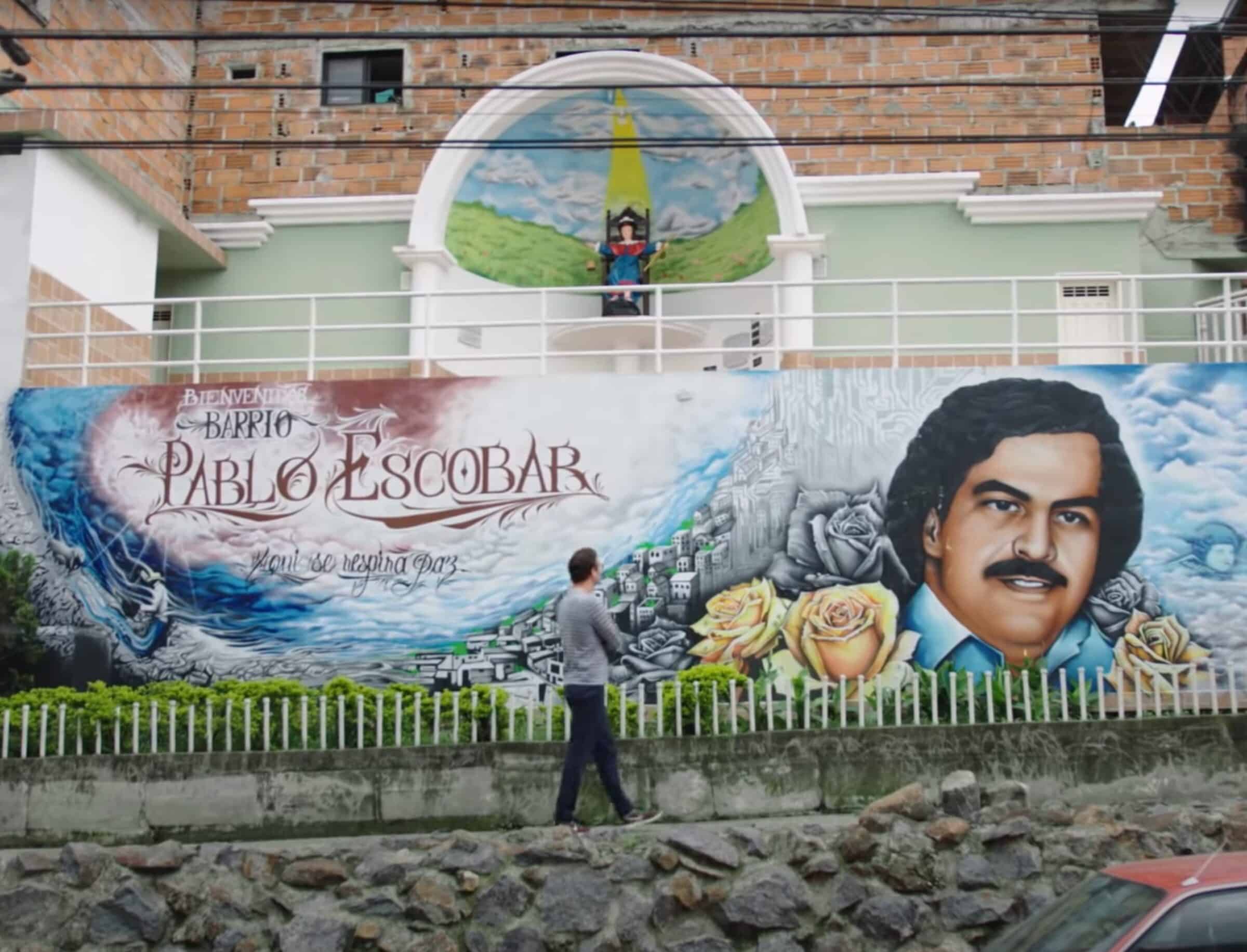
Aflevering 2 | Japan
David onderneemt een spannende reis naar Tomioka, die werd geëvacueerd tijdens de nucleaire ramp in Fukushima, waar hij hogere stralingsniveaus ontdekt dan verwacht. Hij stopt dan bij een hotel dat uitsluitend bemand wordt door robots in het themapark Huis Ten Bosch voordat hij aankomt in Aokigahara; een zelfmoord-hotspot. Davids tijd in Japan wordt beëindigd op het verlaten eiland Hashima.
Aflevering 3 | Verenigde Staten
David sluit zich aan bij Dark Tourist Natalie in Milwaukee, waar ze meer te weten komen over Jeffrey Dahmer door een rondleiding te volgen langs de locaties van Dahmer’s moorden voordat ze zijn advocaat, Wendy Patrickus, ontmoeten. David bezoekt vervolgens Dallas, waar hij twee zeer verschillende tours maakt met betrekking tot de moord op JFK. Zijn tijd in Amerika loopt ten einde in New Orleans, waar hij tijd doorbrengt met enkele echte vampiers.
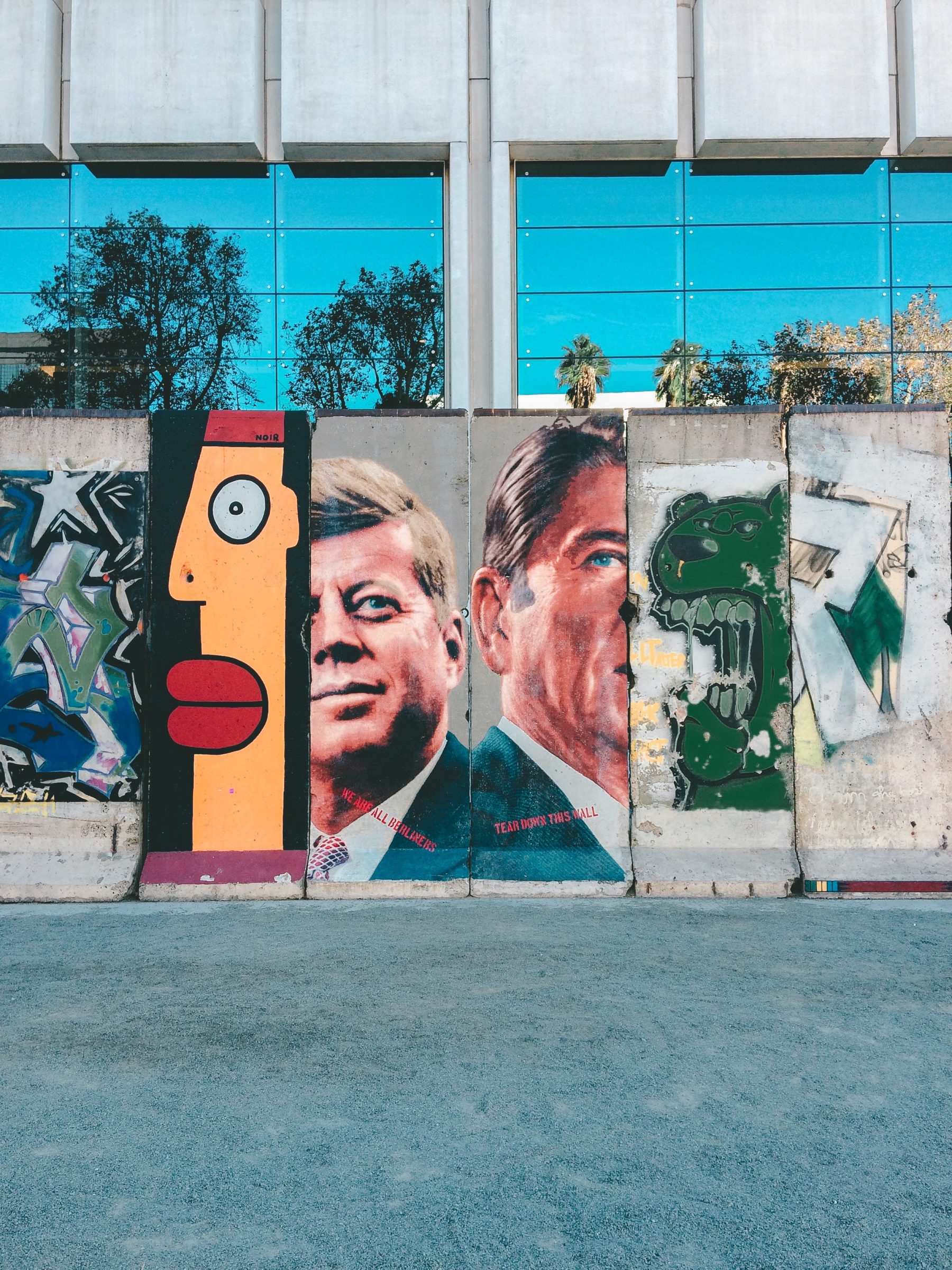
Aflevering 4 | Kazachstan & Baikonoer
In Kazachstan voegt David zich bij de Dark Tourist Andy en samen bezoeken ze de stad Kurchatov, waar ze meer te weten komen over de nabijgelegen testlocatie Semipalatinsk, de belangrijkste testlocatie voor de nucleaire wapens van de Sovjet-Unie. David reist vervolgens door Kazachstan naar Baikonoer, een gesloten stad en de thuisbasis van het Sovjetruimteprogramma.
Lees ook: Kazachstan is één van de 10 grootste landen ter wereld

Vliegend over de grens, bezoekt David de Turkmeense hoofdstad Ashgabat, waar hij de persoonlijkheidscultus rond president Gurbanguly Berdimuhamedow ziet, voordat hij probeert, maar faalt, om de poorten van de hel te bezoeken. Na een korte reis naar het ziekenhuis hoopt David de openingsceremonie van de Asian Indoor and Martial Arts Games 2017 te zien.
Lees ook: Kazachstan naar stembus voor economische hervorming
Aflevering 5 | Europa
Net buiten Maidstone neemt David deel aan ’s werelds grootste re-enactment uit de Tweede Wereldoorlog. Na een schijngevecht te hebben overleefd, reist David door de breedte van Engeland naar Littledean, waar hij een controversieel museum bezoekt met een tentoonstelling gewijd aan Fred & Rose West en een lampenkap uit het nazi-tijdperk die zogenaamd gemaakt is van menselijke huid. Naar aanleiding van zijn museumreis krijgt David een telefoontje van Charles Bronson. Vervolgens reist hij door Europa naar Cyprus, waar hij probeert binnen te sluipen naar Famagusta, een ommuurde spookstad.
Lees ook: Wereldwijs | Wat zijn de veiligste en gevaarlijkste landen in Europa?

Aflevering 6 | Zuid-Oost Azië
Op een schietbaan in Phnom Penh, gesteund door het Cambodjaanse leger, krijgt David een reeks zware artillerie in handen en wordt hij geconfronteerd met een moreel dilemma. David reist naar Myanmar en bezoekt de gloednieuwe hoofdstad Naypyidaw, waarvan hij ontdekt dat het beduidend rustiger is dan de meeste hoofdsteden. Als hij naar Indonesië vliegt, ontmoet David een Toraja-man die al twee jaar ‘rust’ en deelneemt aan de Ma’nene-begrafenisrituelen.
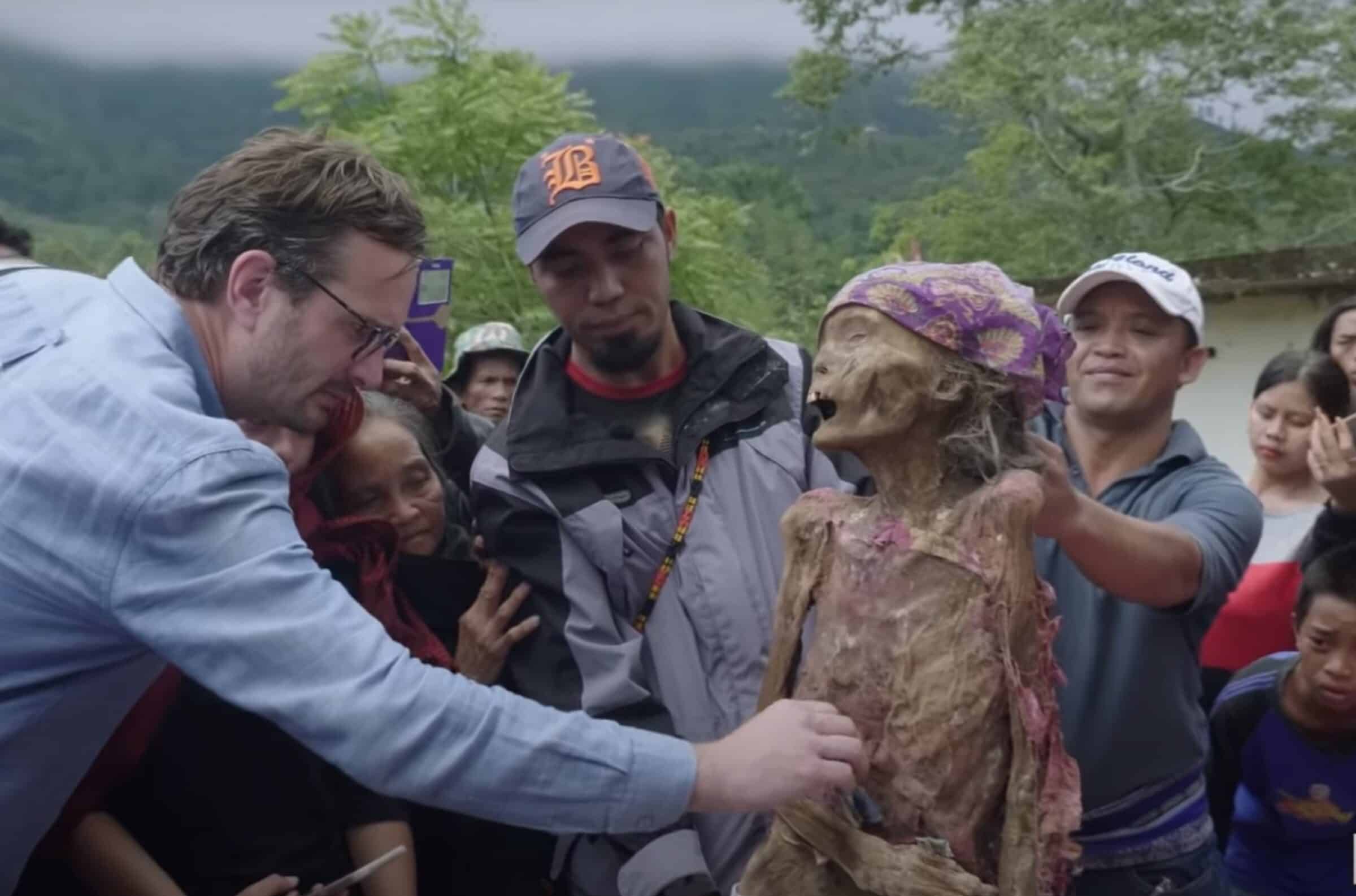
Aflevering 7 | Afrika
In Ouidah, Benin, leert David meer over Voodoo, en ondergaat hij een voodoo-discipelritueel onder de god Thron. Daarna woonde hij een ceremonie bij die Kokou veel gewelddadiger was in Lake Nokoué met de tofinu die op het eiland Ganvié wonen. Reizend naar Johannesburg, onderzoekt hij de township Alexandra om te zien hoe gevaarlijk dergelijke townships zijn. Davids tijd in Zuid-Afrika loopt ten einde in Orania, waar hij een kleine groep Afrikaner-nationalisten ontmoet voordat hij verder naar het noorden trekt, naar Randfontein en de Suidlander-survivalisten ontmoet.
Lees ook: Wereldwijs | Wat zijn de veiligste en gevaarlijkste landen in Afrika?
Aflevering 8 | Terug in de Verenigde Staten
Terugkerend naar de Verenigde Staten , arriveert David in Los Angeles, waar hij deelneemt aan een tour langs de Manson Family-moorden en ontmoetingen met fans en vrienden van Manson. David vliegt door het land naar Kentucky, waar hij een replica op ware grootte van de ark van Noach bezoekt voordat hij een prepper in Virginia ontmoet. Bij zijn laatste stop bezoekt hij Tennessee, waar hij het engste horrorhuis ter wereld bezoekt, McKamey Manor.
Lees ook: Alle Nationale Parken in de Verenigde Staten van Amerika | Lijst
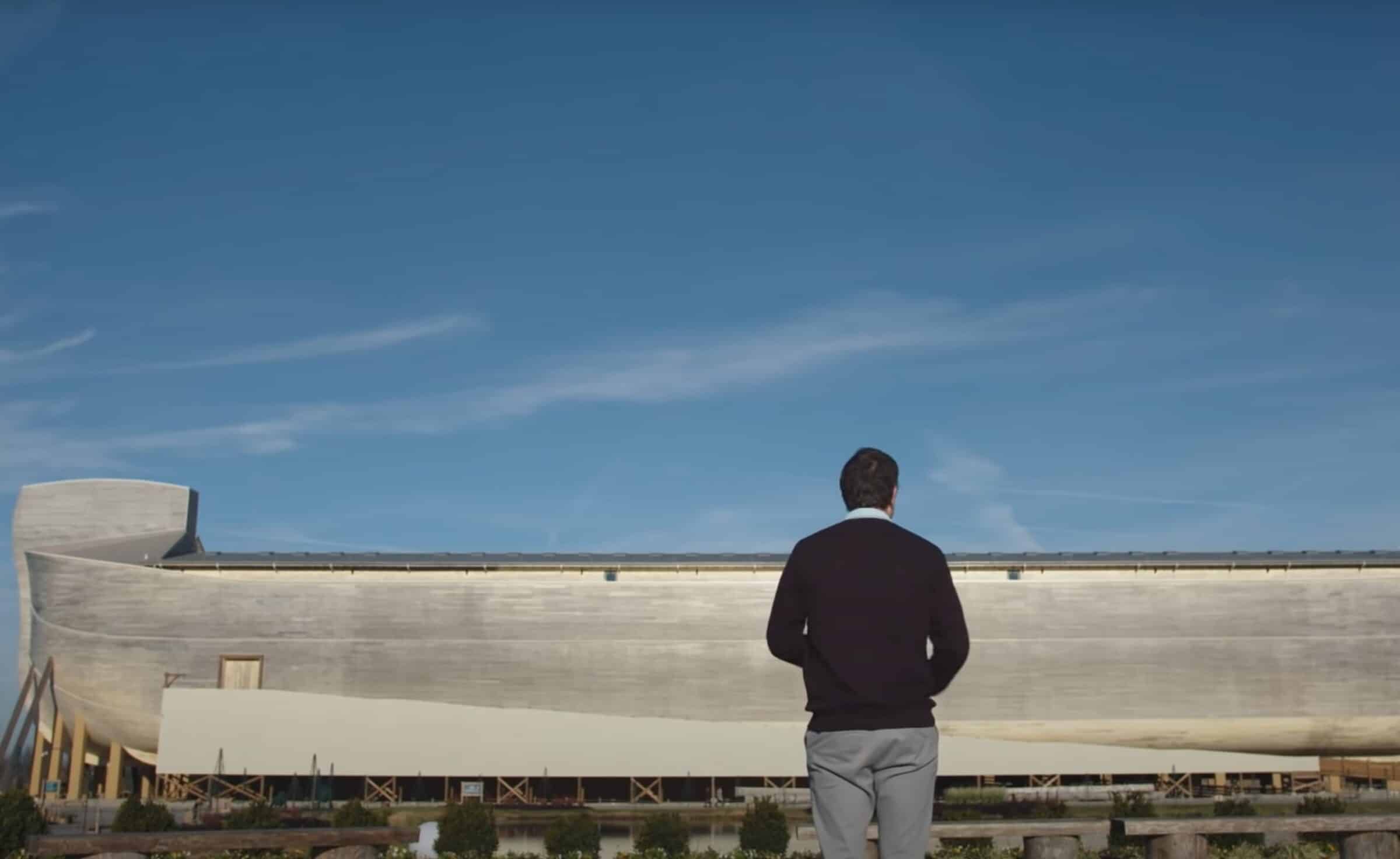
Rondleidingen “Dark Tourism” door FEG en Clio Muse
De European Federation of Tourist Guide Associations (FEG) organiseert en host in samenwerking met Clio Muse Tours 30 educatieve webinars over ‘Dark Tourism’ rondleidingen. Ondersteund door het door de EU gefinancierde project RePAST zijn deze webinars, die plaatsvinden van half januari tot eind maart 2021, gericht aan gecertificeerde toeristengidsen in Cyprus, Duitsland, Polen, Griekenland, Bosnië, Kosovo, Ierland en Spanje.
Als partner van RePAST heeft Clio Muse Tours acht digitale tours gemaakt, één voor elk van de landen die in het project zijn opgenomen. Deze rondleidingen kwamen tot leven na het ontwikkelen van een onderzoeksmethodologie, evaluatie van talrijke geschreven en mondelinge historische bronnen, tijdschriften, artikelen en boeken uit universiteitsbibliotheken en archieven, evenals overheidsrapporten en juridische documenten.
Als onderdeel van de levenslange training van de FEG zullen de Clio Muse-tours, samen met de belangrijkste resultaten van RePAST en ander educatief materiaal worden gebruikt tijdens de online webinars om professionals in cultureel toerisme kennis te laten maken met de etiquette van duistere toeristische tours.
Het doel is om gekwalificeerde toeristische gidsen te voorzien van de vaardigheden om zinvolle en impactvolle ervaringen op locatie van hoge kwaliteit te bieden. Met een toename van de populariteit van donker toerisme, geloven we dat deze webinars een waardevol hulpmiddel zullen worden bij de verdere ontwikkeling van gekwalificeerde toeristengidsen die in deze landen actief zijn en die hen zullen helpen ongeziene aspecten van het culturele erfgoed van deze landen onder de aandacht te brengen.
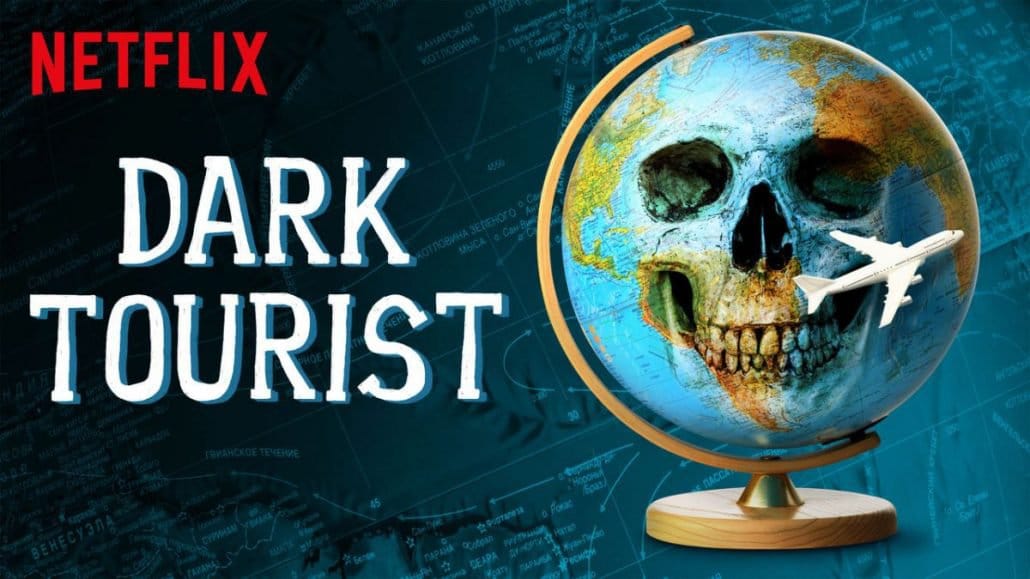
Wereldreizigers
Wereldreizigers.nl | Alles over verre reizen, wereldreizen, reisnieuws, reisfotografie, backpacken, reistips en meer.
You may also like

Reistrends 2024 | Goedkope en meest populaire bestemmingen
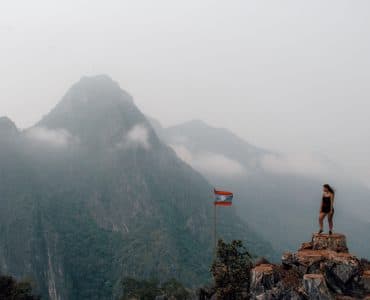
Top 10 | Wat zijn de beste backpack bestemmingen in Azië?
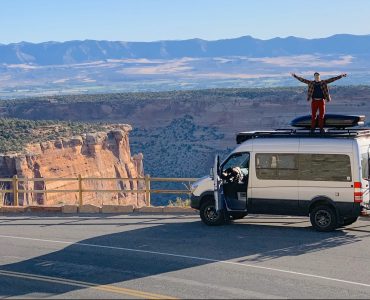
VANLIFE | How to: Camperbus kopen of ombouwen

Cursus dromen realiseren kun je leren! | Wereldreizigers korting t.w.v. € 25,-
Elke maand leuke reistips en extra voordelen ontvangen? En wist je dat we maandelijks een wereldkaart weggeven onder onze abonnees? Het enige wat je daarvoor hoeft te doen is hieronder je e-mailadres achter laten, je maakt dan elke maand opnieuw kans!
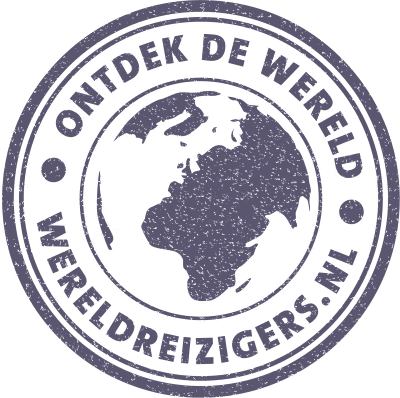
Wereldreis plannen
Wereldreis sparen
Wereldreis route
Wereldreis vaccinaties
Goedkope vliegtickets
Wereldreis inspiratie
Wereldreis bankzaken
Wereldreis en malaria
Waarom op wereldreis
Goedkoopste landen wereldreis
Continenten & werelddelen
Alle landen ter wereld
Grootste landen
Grootste eilanden
Gevaarlijkste landen Europa
Gevaarlijkste landen Afrika
Alle landen in Afrika
Vliegtijd landen in Azië
Verschil AM en PM
Wereld informatie
NATIONALE PARKEN
Nationale parken Amerika
Nationale parken Europa
Nationale parken Nieuw-Zeeland
Nationale parken Nepal
Nationale parken Vietnam
Nationale parken Thailand
Nationale parken Costa Rica
Nationale parken Zuid-Afrika
Nationale parken Mexico
Nationale parken Finland
Bucketlist plekken Zuid-Amerika
Bucketlist plekken Afrika
Bucketlist Tahiti Frans-Polynesië
Bucketlist zwembaden
Bucketlist Wildlife
Bucketlist Dubai
Bucketlist Australië
Bucketlist Walvissen
Bucketlist Zanzibar
Bucketlist Japan
Alle rechten voorbehouden | Copyright © 2024 Wereldreizigers.nl | Onderdeel van Orbital Media | Travel Marketing & PR .
- Vliegtickets
- Pakketreizen
- Scooterreis
- Overlanden (4×4)
- Stedentrips
- Digital Nomads
- Nationale Parken
- Camper bouwen
- Midden-Oosten
- Noord-Amerika
- Midden-Amerika
- Zuid-Amerika
- Kopieer link
- Film & serie Reviews
- NPO3 Exclusives

- Programma's
- Op NPO Start
- Afleveringen
- Alle zoekresultaten
- Videosnacken
6 dingen die je over Bali moet weten voordat je er aan een zwembad gaat liggen

Op welke plekken is ‘dark tourism’ groot geworden?
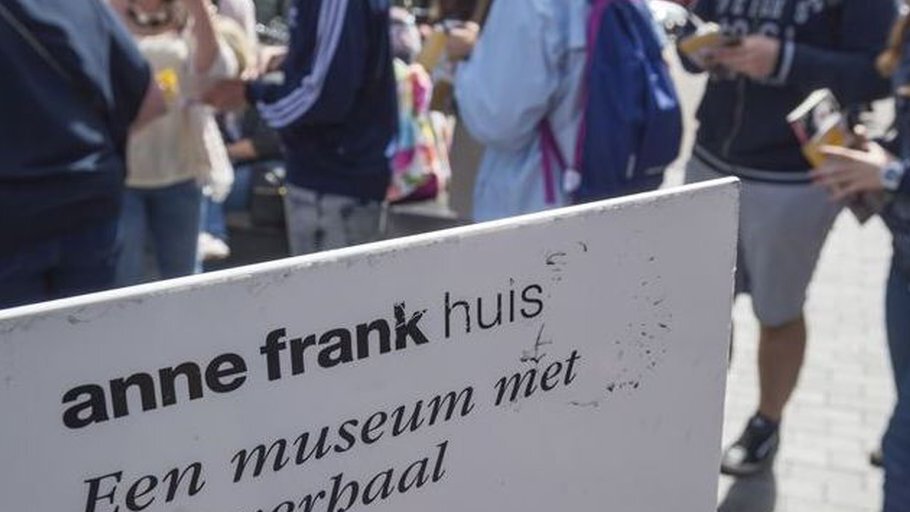
- Achtergrond
- 01 mei 2017
- 2 minuten leestijd
Jerry Vermanen
Ruim zeventig jaar na de Tweede Wereldoorlog wordt toerisme naar plekken zoals concentratie- en vernietigingskamp Auschwitz en het Anne Frank Huis steeds populairder. Dit zogeheten ‘dark tourism’ heeft een schaduwkant: toeristen die bijvoorbeeld veel te vrolijke foto’s maken op plekken waar duizenden mensen zijn overleden. Wij hebben een overzicht gemaakt van een aantal plekken waar dit duistere toerisme plaatsvindt.
9/11 Memorial Site, New York, USA
Op de plek waar op 11 september 2001 de Twin Towers werden neergehaald, staat sinds 2011 een grote herdenkingsplek met de namen van de bijna drieduizend slachtoffers. In 2016 trok deze herdenkingsplek zo’n zeven miljoen bezoekers. Daarmee is het waarschijnlijk de grootste ‘dark tourism’-locatie ter wereld. Bekijk hieronder de voor- en-na-foto’s van Ground Zero. Of beter gezegd, tijdens-en-na-foto’s van de aanslag en het monument zoals het nu staat.
Alcatraz, San Francisco, USA
Het voormalige gevangeniseiland Alcatraz wordt jaarlijks door ruim 1,5 miljoen toeristen bezocht. De gevangenis was geopend van 1932 tot en met 1963, en werd in 1972 voor het grote publiek geopend.
Pripyat, Chernobyl, Oekraïne
Het gebied rondom de kerncentrale in het Oekraïense Chernobyl werd in 1986 nog ontruimd, maar is tegenwoordig een trekpleister voor ramptoeristen. Jaarlijks mogen zo’n tienduizend toeristen het voormalige geëvacueerde gebied in om de verlaten flats, het leegstaande zwembad en de vervallen kermis te bekijken.
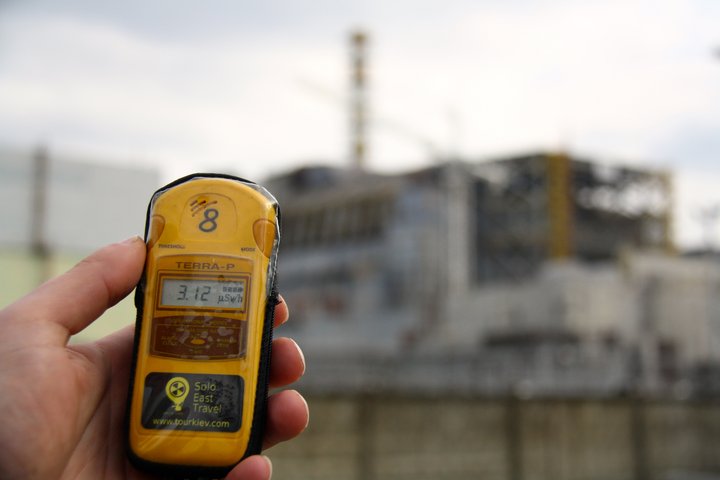
Foto: Jerry Vermanen
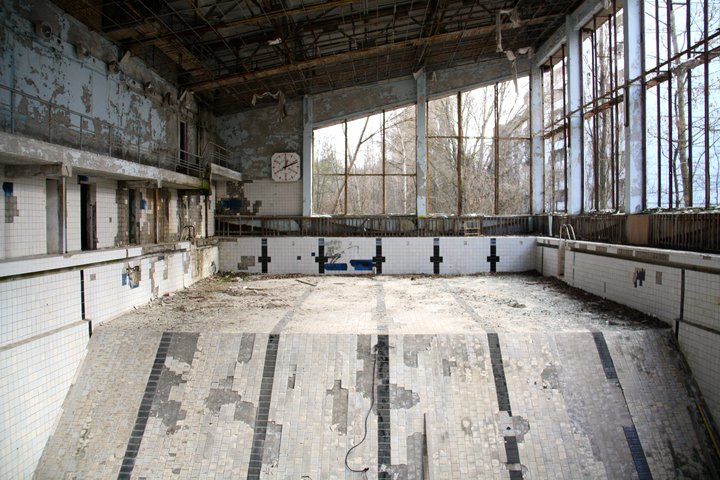
Auschwitz, Krakau, Polen
Sinds het zestigjarige jubileum is het aantal bezoekers in het voormalige concentratie- en vernietigingskamp Auschwitz nooit meer onder de miljoen personen gekomen.
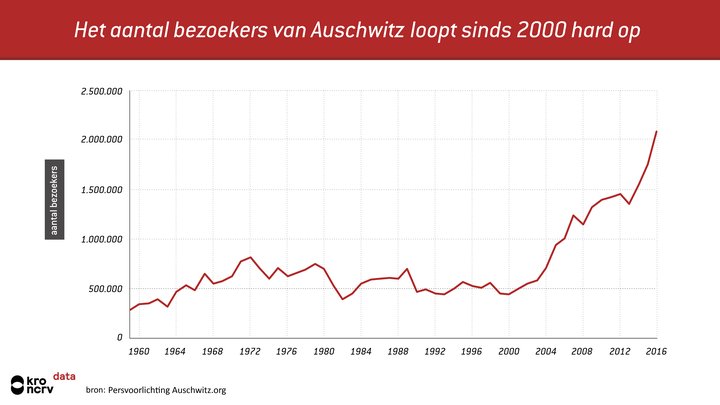
Die enorme toestroom van toeristen levert ook problemen op. Een Duitse kunstenaar maakte daarom het project Yolocaust , waarin hij toeristen die ongepaste foto’s maken op de hak neemt.
Anne Frank Huis, Amsterdam, Nederland
Ook Nederland kent een eigen populair WWII-monument waar toeristen jaarlijks naar afreizen. Sinds het Anne Frank Huis in 1960 openbaar is gesteld voor het publiek, zijn de bezoekcijfers bijna jaarlijks gestegen.
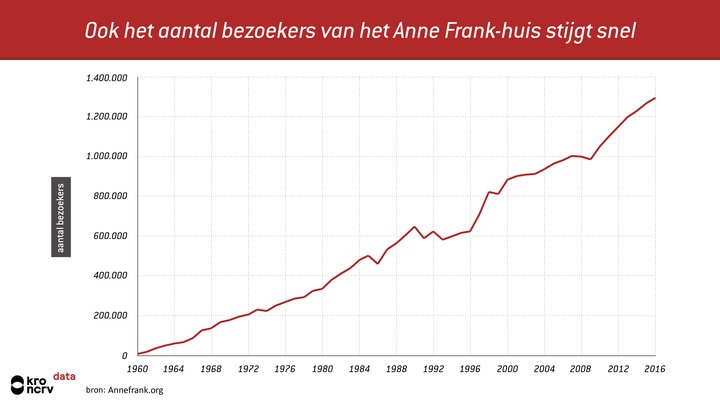
In 2016 hebben liefst 1,3 miljoen bezoekers het Anne Frank Huis bezocht. Dat komt neer op ruim 3.500 mensen per dag. De aankomende twee jaar wordt het museum verbouwd om nog meer mensen te kunnen ontvangen.
- tweede wereldoorlog
- Big brother
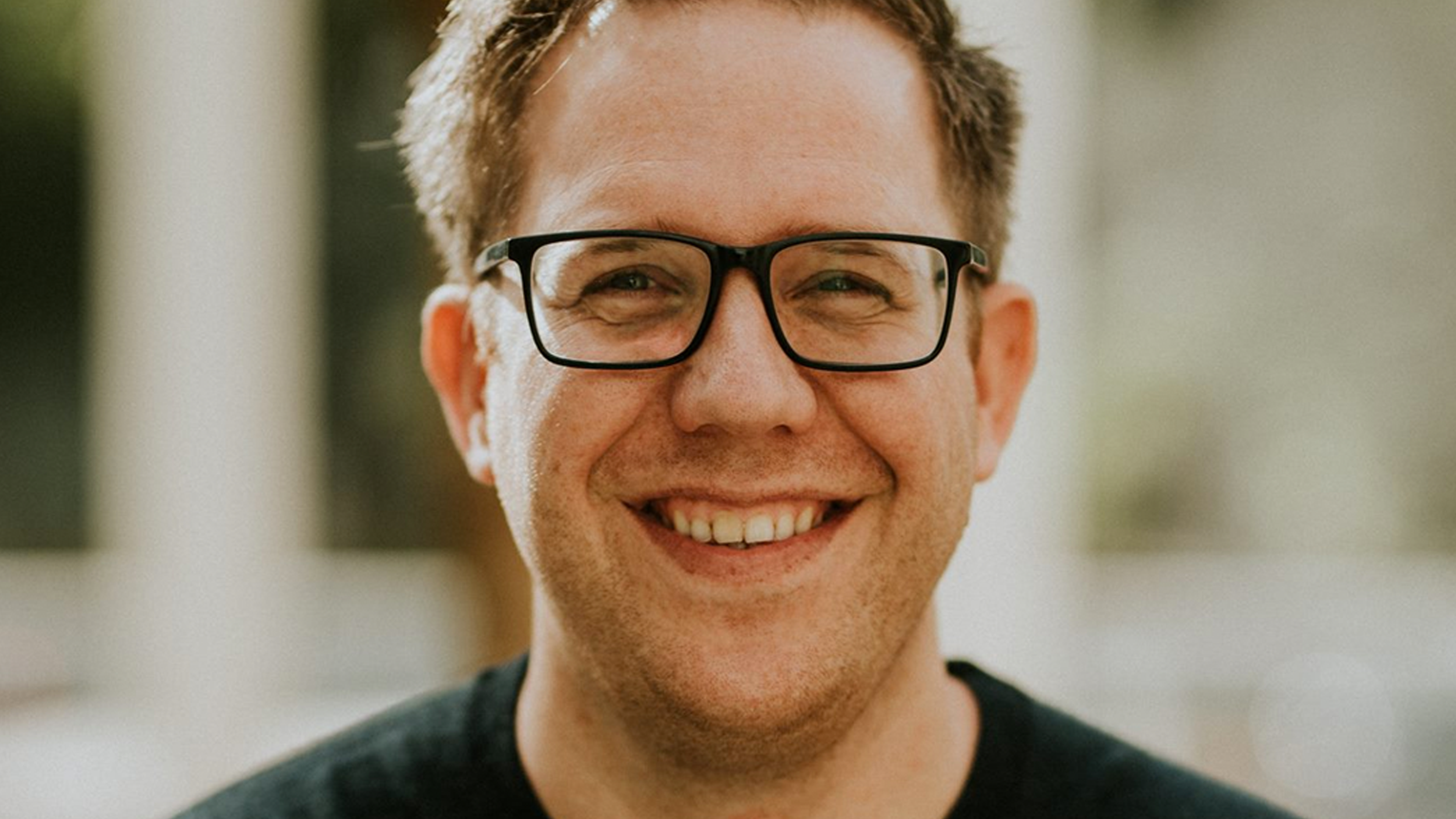
Deze website maakt gebruik van cookies om de ervaring te optimaliseren. Lees meer .

- Onze diensten Ruimtelijke Economie Duurzaamheid Vastgoed Duurzame Bezoekerseconomie Achtfacettenmodel
- Over ons Over Areaal Advies Ons team Missie & visie Maatschappelijke Impact Vacatures & Traineeship
- Duurzame bezoekerseconomie
Tussen griezelen en gedragen: hoe gaan we om met dark tourism?
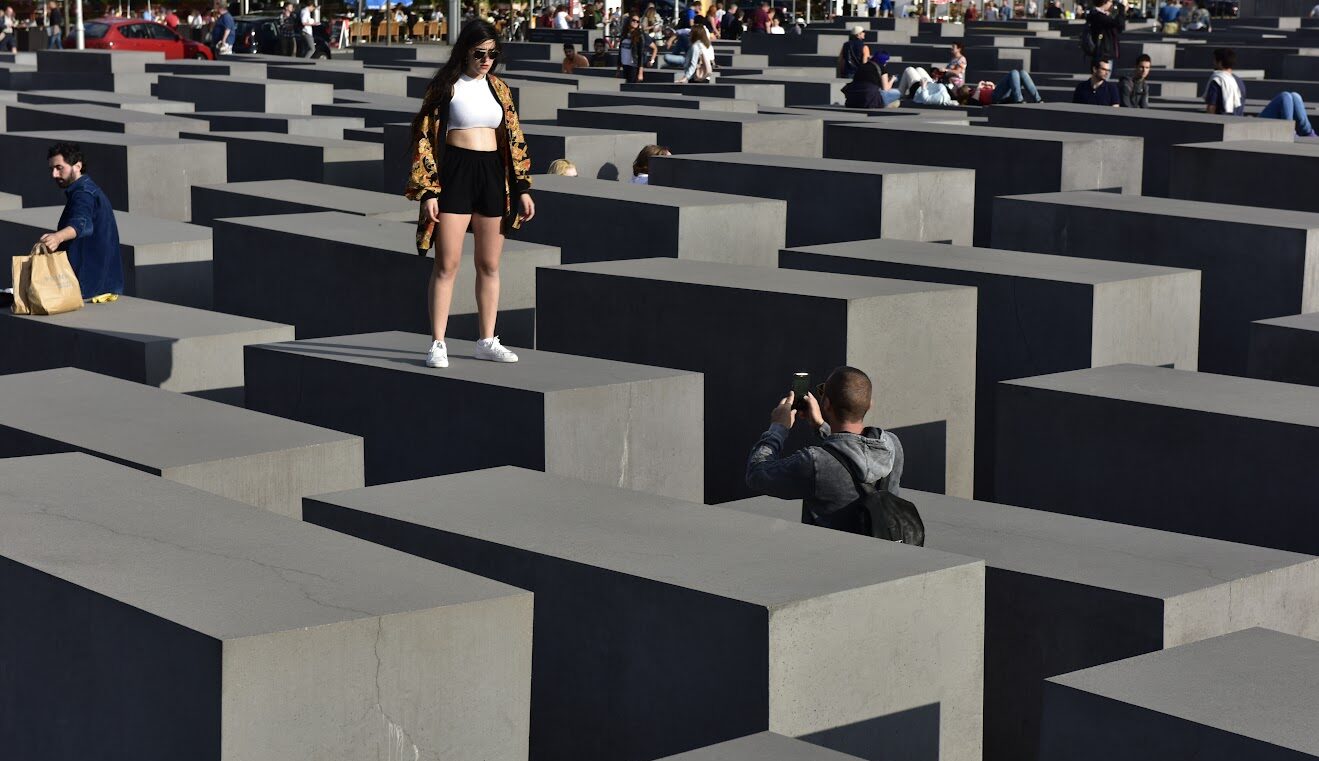
Een vorm van toerisme waar het allemaal draait om locaties die een verbinding houden met dood, tragedie, lijden of andere duistere gebeurtenissen uit het verleden: het fenomeen dark tourism wordt steeds populairder. Het speelt in op de nieuwsgierigheid van de mens en combineert geschiedenis met een ervaring die gezien kan worden als bijzonder en spannend. Nu is dark tourism niet een uniform concept; elke locatie is anders en dus ook de geschiedenis en ervaring kunnen erg divers zijn.
Het duistere van dit toerisme is als het ware op te delen in verschillende gradaties, ofwel tinten. De meeste mensen zullen bij deze vorm van toerisme al snel denken aan locaties als Auschwitz of Tsjernobyl, maar ook de toeristische commerciële martelmusea die in veel grote steden te vinden zijn of de ‘Jack the Ripper tour’ in Londen behoren tot het concept. Grote kans dus dat je wel eens deelgenoot van dark tourism bent geweest.
Dark tourism is een interessant fenomeen, zeker vanuit sociaal en cultureel oogpunt. Het kan echter wel tot negatieve gevolgen leiden. Net als bij andere vormen van toerisme kan ook dark tourism leiden tot overlast of milieuschade. Massale bezoekersaantallen kunnen leiden tot fysieke schade aan historische en culturele waardevolle plekken. Daarnaast heeft dark tourism ook vaker culturele erosie als gevolg. Door de toenemende komst van bezoekers kunnen lokale gemeenschappen en culturen hun tradities en gewoontes aanpassen om meer aan de verwachtingen van de bezoekers te voldoen. Wanneer dit in hogere mate gebeurt kan het leiden tot het verlies van de culturele authenticiteit of het verstoren van de inheemse manier van leven.
Tot slot is er voornamelijk kritiek op dark tourism wanneer het gaat over de ethische kant van het verhaal. Het gedrag dat sommige bezoekers vertonen wanneer zij deelnemen aan dark tourism wordt vaak met een afkeurende blik bekeken. Rondrennen, hard praten (of zelfs schreeuwen), dingen aanraken of ongegeneerd foto’s maken zijn allemaal voorbeelden van wat gezien wordt als ‘onethisch gedrag’. Natuurlijk verschilt de acceptatie van dit gedrag van locatie tot locatie. Zo zal niemand gek opkijken wanneer je selfies of gekke foto’s maakt in een martelmuseum, die daar zelfs ook gelegenheid toe bieden, maar zul je wel verwijtende blikken vangen wanneer je dit doet in het Anne Frank Huis. Zulk gedrag wordt dus voornamelijk bij de meest donkere tinten van dark tourism als negatief gezien. Daarentegen lijkt men zich wel steeds meer bewust te worden van dit fenomeen. Zo heeft een influencer, die een ‘sexy’ foto van haarzelf in Tsjernobyl op Instagram had gepost, zoveel kritiek over zich heen gekregen dat ze de foto heeft verwijderd en haar account op privé heeft gezet.
Daarnaast is het tegenwoordig eenvoudiger om je op het bezoek aan z0’n locatie voor te bereiden. Wanneer je googlet op dark tourism verschijnen er ook steeds vaker artikelen als ‘Hoe bezoek je dark-tourism-locaties op een ethische manier’. De opkomst van deze ‘ethical guides’ tonen aan dat men steeds meer gaat nadenken over zijn of haar invloed op de omgeving.
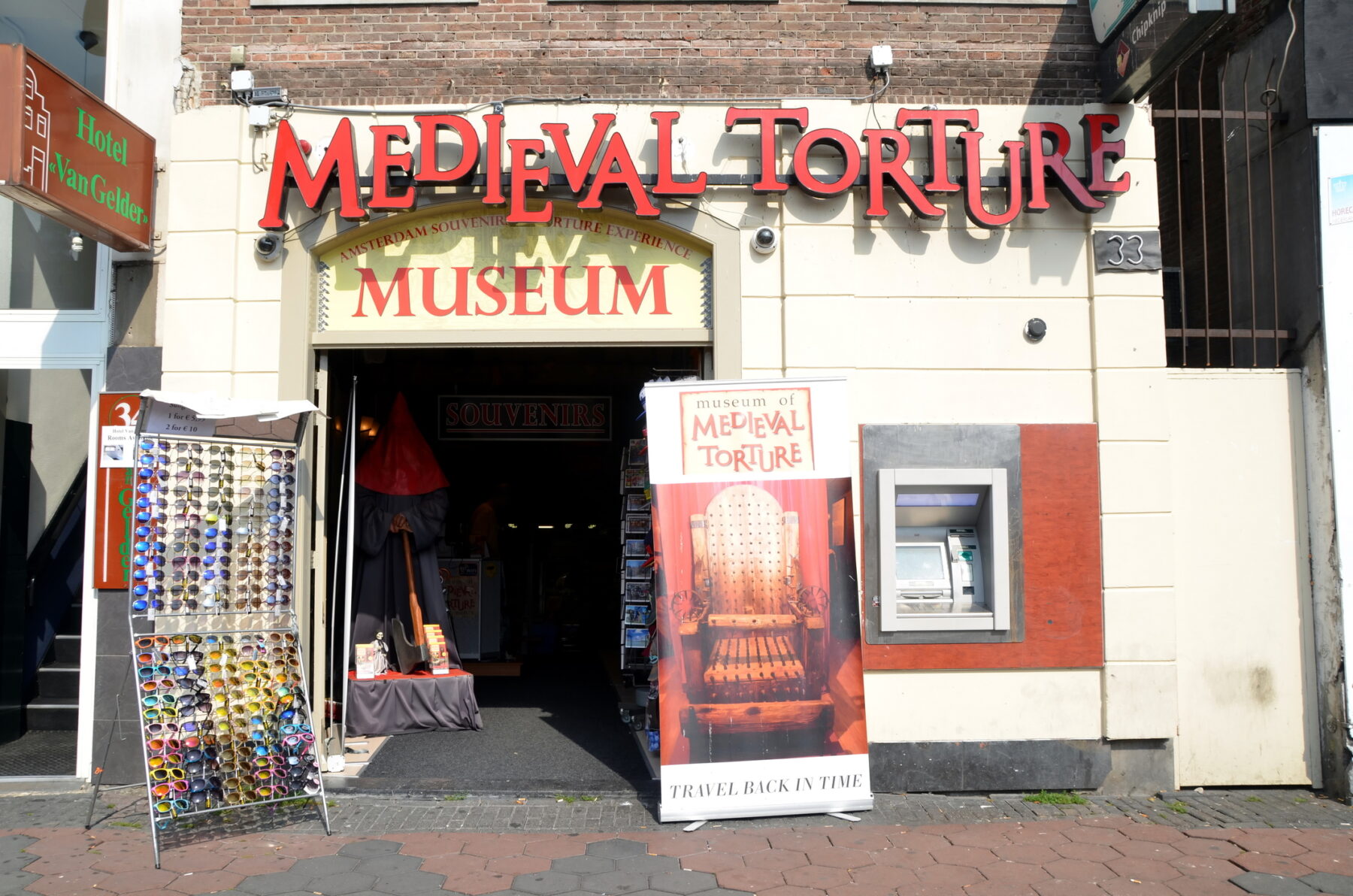
Hoewel dark tourism dus weldegelijk negatieve gevolgen kan hebben biedt het daarnaast ook positieve kanten. Net als andere vormen van toerisme kan een toename aan bezoekers gezien worden als een economische stimulans voor de omgeving. Door het groeiende aantal bezoekers wordt er meer werkgelegenheid gecreëerd en worden de lokale ondernemingen gestimuleerd. Dit draagt bij aan de economische groei van de omgeving, wat een verbetering van de levensstandaard van de lokale bevolking kan betekenen.
Maar deze unieke vorm van toerisme heeft nog meer positiefs te bieden. Voornamelijk wanneer het gaat om bewustwording, educatie en het behouden van het historisch erfgoed kan dark tourism een steentje bijdragen. Dark tourism zorgt voor bewustzijn bij de mensen die de locaties bezoeken. Het bezoeken van zulke plekken kan zorgen voor meer begrip en inzicht in de geschiedenis en de impact die deze heeft gehad op de omgeving en samenleving. Doordat bezoekers op de locatie zelf de gevolgen en geschiedenis kunnen zien en meemaken ontstaat er een grotere kans dat zij zich beter kunnen gaan inleven in de slachtoffers. Het bezoeken van een dark-tourism-locatie kan dus uitermate leerzaam zijn.
Naast educatie kan dark tourism ook bijdragen aan het historisch en cultureel behoud van een locatie. Door de toename van bezoekers en hun interesse in de locatie en de geschiedenis worden er vaak middelen beschikbaar gesteld voor het behouden en restaureren van de locatie. Dit draagt bij aan het voortbestaan van waardevol cultureel erfgoed dat anders verwaarloosd zou kunnen worden. Daarbij kan het bezoek van toeristen de lokale gemeenschap ertoe stimuleren om het erfgoed beter te gaan onderhouden en meer waarderen.
Tot slot kan dark tourism een manier zijn om de getroffen gemeenschappen te herdenken en te helen. Bezoekers die verbonden zijn met de locatie, bijvoorbeeld doordat zij slachtoffer of familie van slachtoffers zijn, kunnen erkenning en steun voelen. De locatie kan voor deze mensen een platform bieden om hun verhalen te delen en in contact te komen met anderen. Door het verleden te herdenken, en hiervan te leren, kan een gemeenschap sterker worden en zo ook een gevoel van eenheid ontwikkelen.
Dark tourism heeft dus zowel historisch als educatief potentieel, maar het is essentieel om op een respectvolle manier met deze locaties om te blijven gaan. Met zorgvuldige inpassing en voldoende respect kan het een manier zijn om ook de duistere kant van de menselijke geschiedenis te begrijpen en belangrijke lessen uit het verleden te trekken.
Nadeshe Ferdinandus is sociaal-geograaf en schreef haar masterscriptie over Dark Tourism. Bij Areaal Advies houdt ze zich onder meer bezig met Duurzame Bezoekerseconomie.
- Dark Tourism
Deel dit bericht via
Ja, ik ontvang dit document graag (direct) in mijn e-mailbox.

17 Must-Visit Dark Tourism Destinations Around the World
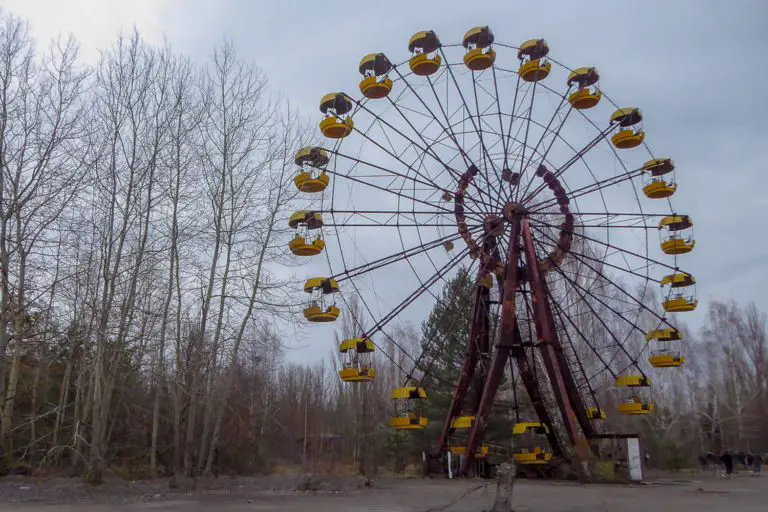
Dark Tourism destinations were once the remit of a select group of travellers. However, after the launch of popular Netflix show Dark Tourist, these attractions have hit the mainstream.
If you’re interested in the morbid and the macabre, look no further. After making several visits to dark history sites myself, I’ve teamed up with other travellers to bring you this list of dark tourism destinations all around the world.
Read more: (opens in new tab)
- What is Dark Tourism?
- Are Bolivia’s Mine Tours Ethical?
- Chernobyl Exclusion Zone Photographic Guide
17 Must-Visit Dark Tourism Destinations
1. chernobyl exclusion zone – kyiv, ukraine.
The abandoned amusement park in Pripyat is one of dark tourism’s crowning images. The haunting stills of the fairground that never heard the laughs of children hang in modern consciousness, a symbol of tragic loss and a warning of the mistakes men can make.
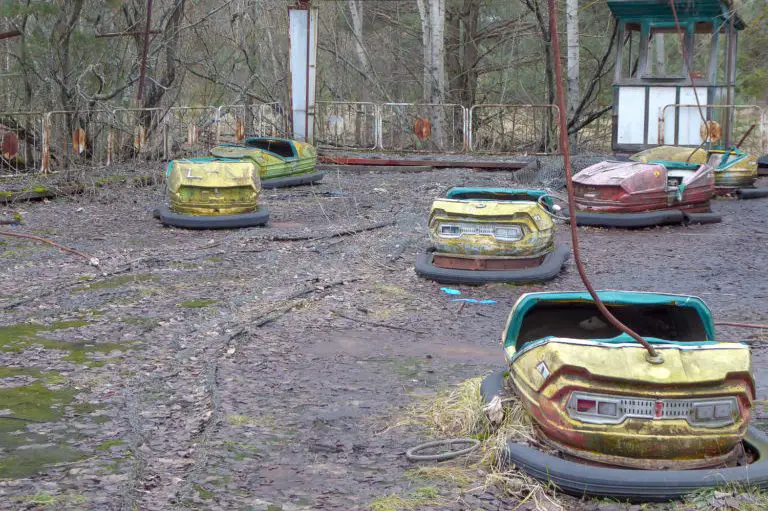
In 1986, the nuclear reactor at the Chernobyl power plant exploded, causing the worst nuclear accident in the world’s history. The effects were huge; people were forced to evacuate their homes and the surrounding areas became a hotbed of radiation. It was predicted that never again in our lifetime, would Chernobyl be inhabited by anything living.
Surprisingly, the Chernobyl exclusion zone has recovered quicker than was ever predicted. Although there are still risks with spending long periods in the exclusion zone, wild animals have returned and are thriving. Despite its recovery, Chernobyl acts as a very sobering reminder of the damage humanity can do without intention.
2. Sucre Cemetery – Sucre, Bolivia
Sucre Cemetery is an unlikely attraction in Bolivia’s capital. Regularly appearing on tourist maps, it is a peaceful place which attracts visitors who come to see how the Bolivians handle death and all that comes after.
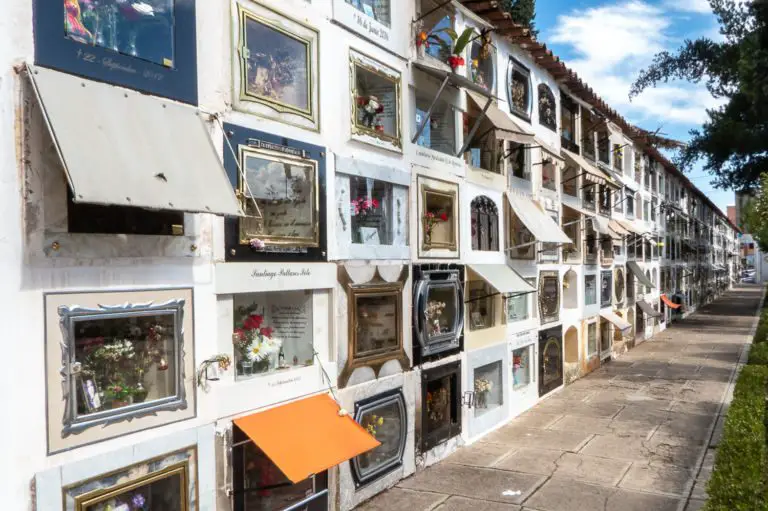
Also frequently visited by locals, this cemetery is a surprisingly popular spot for catching up with friends, studying and paying homage to the dearly departed.
Unlike other cemeteries I’d visited, these graves were arranged in a block system above ground. The vast majority of these were carefully maintained and were regularly stocked with gifts for departed loved ones. Small bottles of spirits were a common appearance, alongside slices of cake!
In Bolivia, death is accepted as an inevitability of life. While graveyards ultimately provide a space for burial, they hold a far more important symbolic role in Bolivian culture. Although death is traditionally seen as a dividing force, Sucre Cemetery demonstrates that death can continue to unite us all, long after somebody is gone.
3. The Poison Garden – Alnwick, England
Home to around 100 toxic and narcotic plants, the Poison Garden is undoubtedly one of the best things to do in Alnwick . This small but deadly garden is home to some of the world’s most dangerous plants and visitors are only allowed to enter on a guided tour.
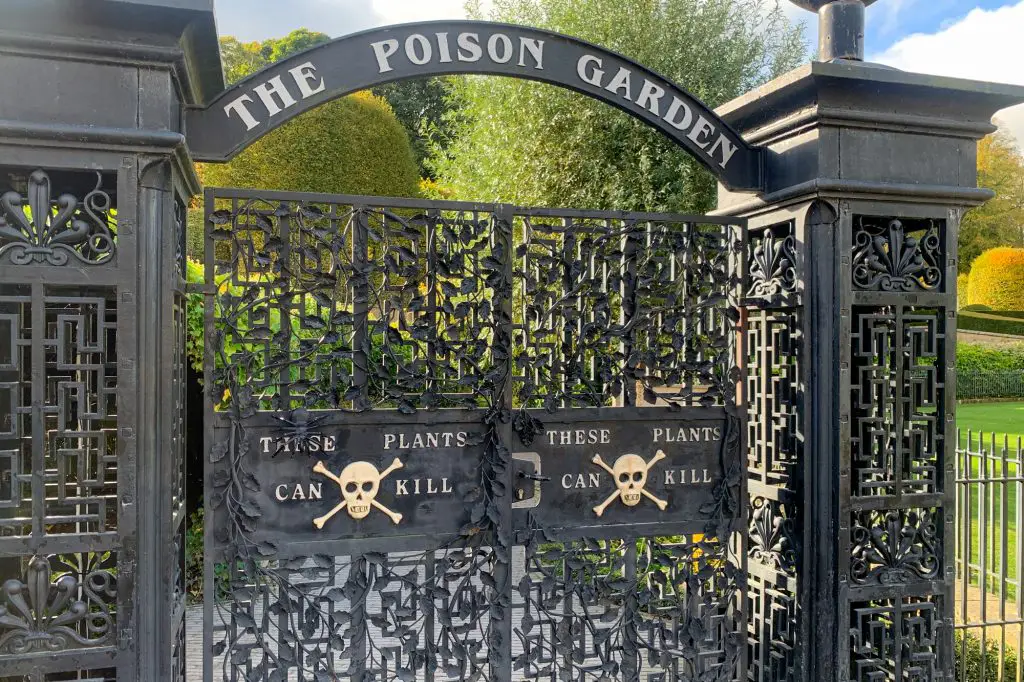
Deadly nightshade, cannabis and coca (the plant from which cocaine is derived) are a few examples of the plants housed in the Poison Garden. Visitors are prohibited from touching any of the greenery and there have even been cases of people passing out after smelling the plants!
The tour guides at the Poison Garden are great at explaining the real-life application of the plants using case studies such as Harold Shipman (Doctor Death) and Graham Young (The Teacup Poisoner). The garden also runs tours for local school children, educating them about drug use.
4. Paneriai Massacre Site – Vilnius, Lithuania
Paneriai is one of Vilnius’ many neighbourhoods. However, it will be forever remembered as the Ponary massacre site. The Einsatzgruppen (Nazi death squads) rounded up groups of Jews from the Vilna Ghetto, took them to Paneriai, executed them and forced other Jewish prisoners to dig mass graves and bury them.
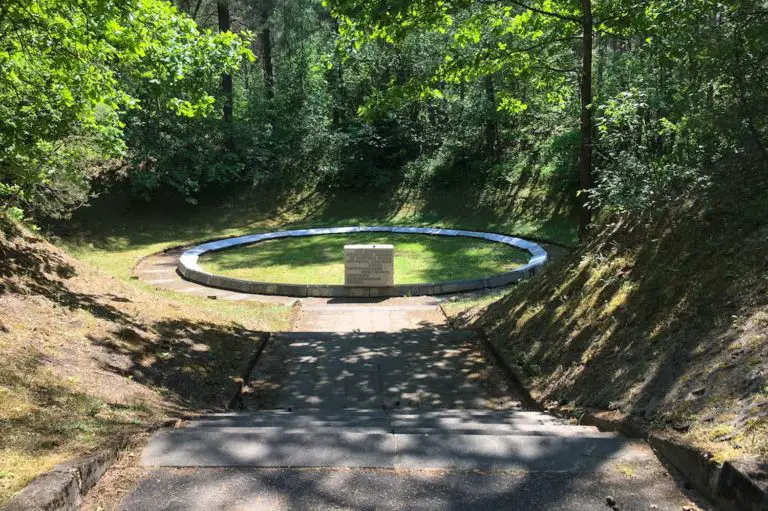
There are six burial sites within the complex, each the site of multiple mass executions. Because so many sets of bodies are stacked on each other, it is impossible to know the exact number of deaths. It is estimated to be around 100,000.
Those brought to Paneriai were burned to death in an attempt to destroy evidence. They were then shovelled into the pits, which today are marked by memorials. Like many of the massacre sites in the Baltics, Paneriai is a forested area. This makes walking around a surreal experience as it is quiet, peaceful and beautiful, a stark contrast to the memorials reminding you that thousands of people were slaughtered there.
Contributed by Cultura Obscura . Follow them on Facebook !
5. St. Nicholas’ Church – Hamburg, Germany
In July 1943, Hamburg was the target of an allied aerial World War Two bombing. The tall spire of St. Nicholas’ Church was used as an orientation marker and the building was almost completely destroyed. All that remained were some external walls, the crypt and most of the tower.
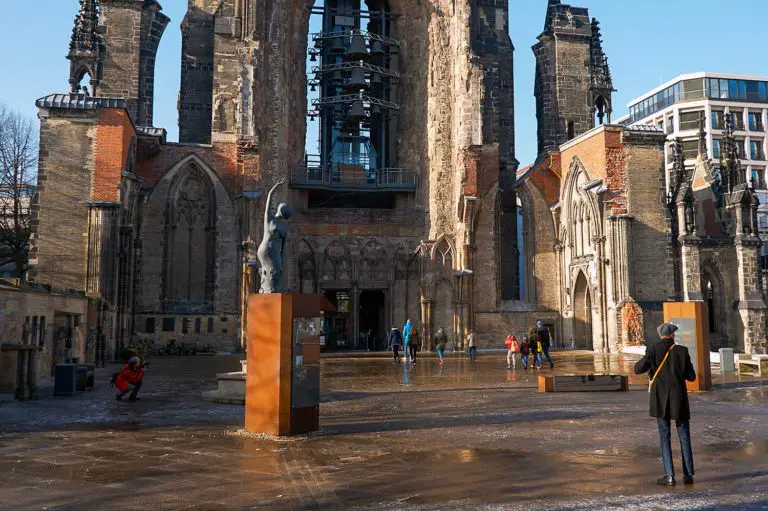
Today, St. Nicholas’ Church stands as a memorial to the victims of WWII. The memorial exhibits in the crypt provide many details of the events leading up to Operation Gomorrah , the air war over Europe. Beautiful sculptures sit inside, illustrating the futility of war and its disastrous consequences. A 51-bell carillon has been installed in the tower and sounds every Thursday at noon.
We visited the church on a walking tour of Hamburg and the experience still haunts me. The vast majority of people in Hamburg during Operation Gomorrah would have been perfectly ordinary citizens going about their daily lives – people just like me.
Contributed by Lesley of Freedom 56 Travel . Follow her on Twitter !
6. Comuna 13 – Medellin, Colombia
Medellin was once the most dangerous city in the world. When infamous drug lord Pablo Escobar controlled the city, crime was extremely high and the locals lived in fear. The neighbourhood of Comuna 13 had direct access to the main highway, making the exportation of drugs, weapons and other illegal goods extremely easy.
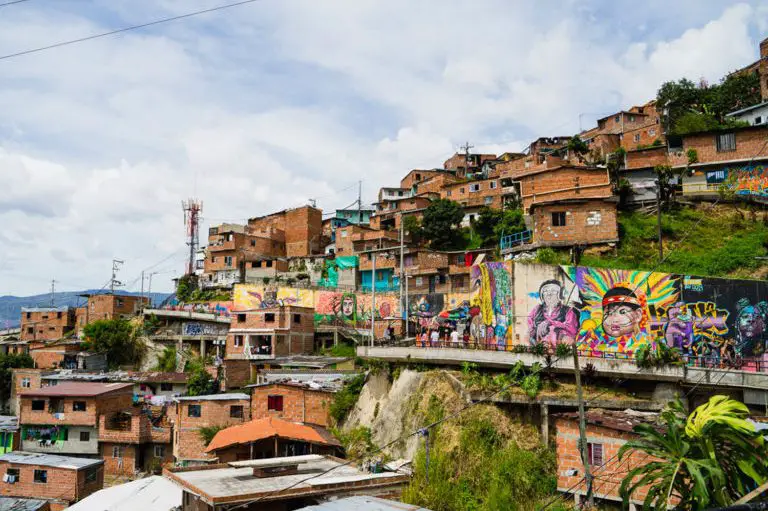
Drug cartels fought over control of the area and as a result, Comuna 13 was a very dangerous place. It was not uncommon to hear gunshots throughout the day and even to see dead bodies piled on the street. With that in mind, it might come as a surprise that Comuna 13 is now one of the most visited neighbourhoods in Medellin.
Over recent years, a tremendous amount of money has been invested in Comuna 13. A cable car system was installed to link it to the city centre. The resulting increase in tourism has sparked real change for the locals and the neighbourhood has become one of the country’s leading creative hubs.
Contributed by LivingOutLau . Follow him on Instagram !
7. Gulag Labour Camps – Karaganda, Kazakhstan
My trip to Kazakhstan left a deep impression on me. While I had heard about the so-called gulags, I did not know that most of them were in Kazakhstan. Stalin deported whole ethnic groups to the remotest corners of the country. This is how during WWII, the Volga Germans ended up in Karaganda .
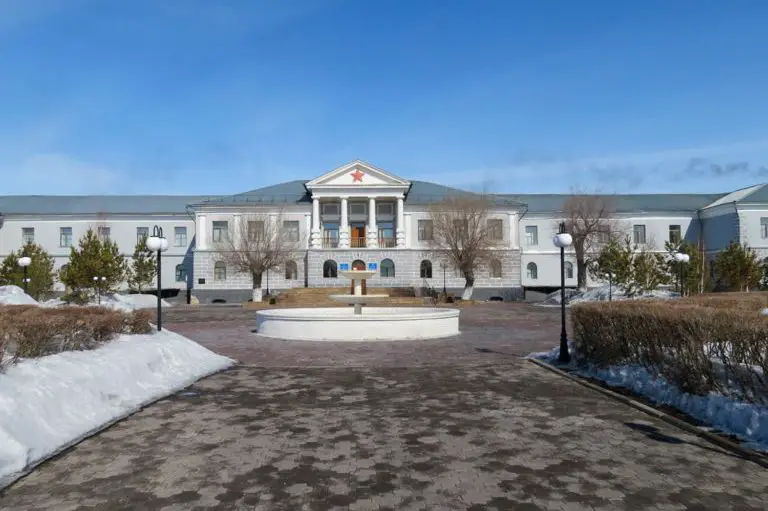
Stalin wanted to develop the farms and coal mines in Karaganda and set up a network of labour camps to support these projects. Political prisoners and deportees provided the free labour that was necessary.
Even though not much of the labour camps remain, Karaganda is the perfect example of a dark tourist site. There is an excellent Gulag Museum in the former headquarters of the labour camp in Dolinka.
Also nearby, the Ecological Museum covers other dark parts of Soviet history. The museum has an exhibition on the nuclear tests done in Kazakhstan and the debris that falls from the sky from the space program in Baikonur.
Contributed by Ellis of Backpack Adventures. Follow her on Instagram !
8. The Eruption of Mount Vesuvius – Pompeii, Italy
Pompeii was a thriving coastal city in Italy that was completely destroyed in 79AD when the neighbouring Mount Vesuvius erupted and covered the city in ash. It is a prime example of what is termed disaster tourism, where tourists visit a location where an environmental disaster has occurred.
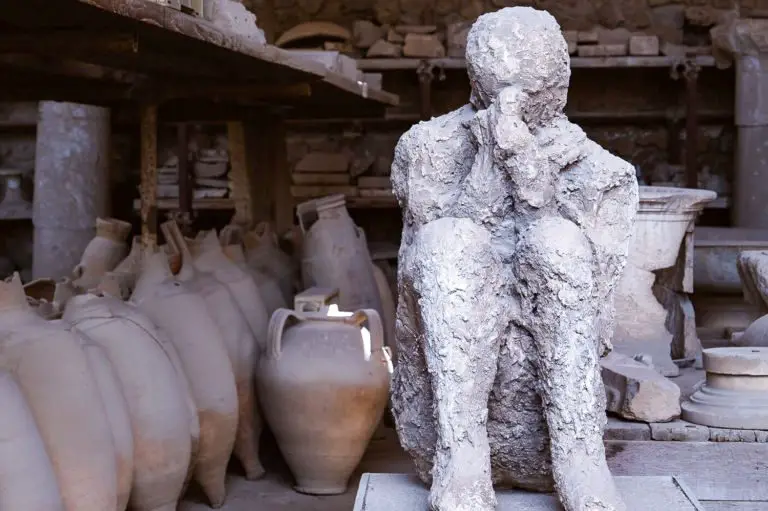
What makes the eruption of Mount Vesuvius more tragic was that the majority of people who died were slaves, who either had no means of escaping or were trapped. When archaeologists began excavating the site, they found several bodies. The ash preserved these bodies which allowed historians to create the human casts we see on site today.
Seeing these casts in crouching positions while covering their faces, gave me shivers. To get a greater understanding of the site and everything inside of it, I highly suggest finding a good tour guide. This photographic travel guide to Pompeii gives lots more tips for planning a visit.
Contributed by Natasha of And Then I Met Yoko. Follow Natasha on Instagram !
9. Mary King’s Close – Edinburgh, United Kingdom
Below the Royal Mile in Edinburgh hides an underground street paved with dark history. Mary King’s Close was alive with residents when the bubonic plague seized the country in 1645. The grievous epidemic turned the once-thriving close into a dreadful place, where its inhabitants suffered a slow and torturous death.
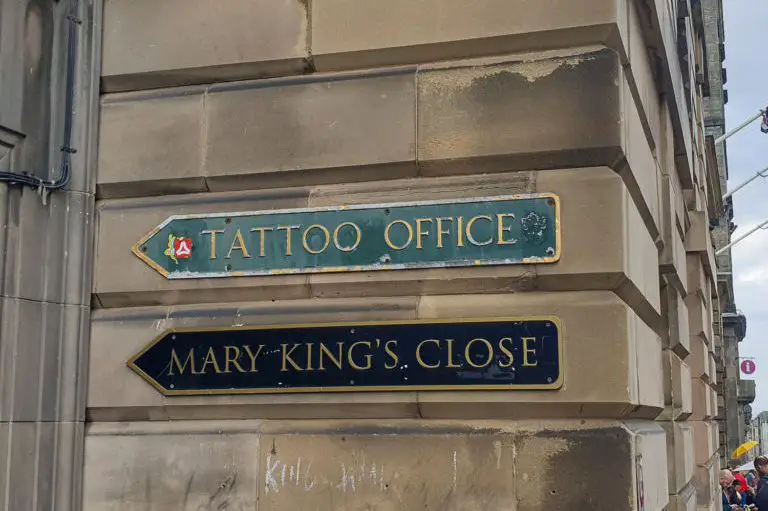
Mary King’s Close was sealed off and used as a foundation for the Royal Exchange in the late 1700s. Years passed and its terrible secrets were left trapped within its dark walls. In the 1990s, the close was rediscovered and opened to the public, allowing people to explore the subterranean streets that once festered with disease.
The mental image of the street once bustling with life left a lump in my throat – the locals had no idea how many would lose their lives to the Great Plague. Like Mary King’s Close, the entire city of Edinburgh is filled with dark and spooky places so be sure to check out Scotland’s capital if you’re a fan of the macabre.
Contributed by Wandering Crystal. Follow her on Instagram !
10. The Killing Fields and S-21 – Phnom Penh, Cambodia
During the Khmer Rouge genocide in Cambodia, execution, starvation and disease were allowed to flourish, killing an estimated three million people. Led by Pol Pot, the regime attempted to enforce brutal and inhumane policies to push Cambodia into being a classless society.
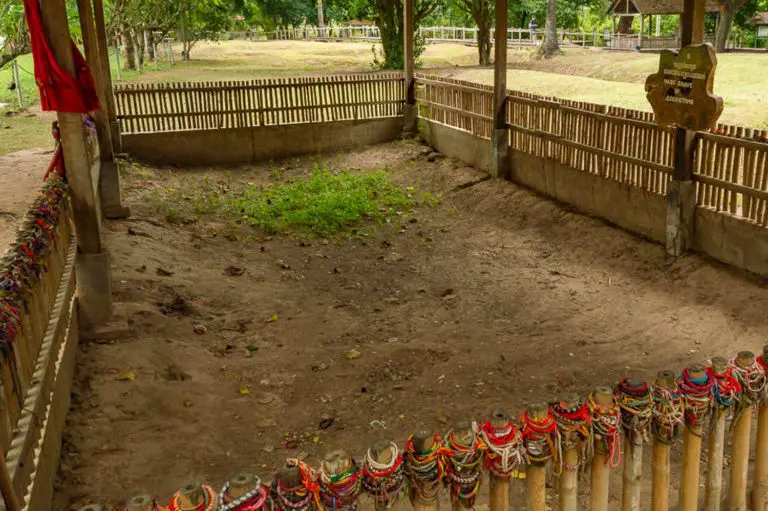
Phnom Penh and the surrounding area are home to S-21, a political prison used by the regime, and Choeung Ek, the largest of the Killing Fields. Over 12,000 prisoners were held at S-21 during the regime and with only seven known survivors, it’s a place known for unthinkable torture and suffering. The S-21 site now houses the Tuol Sleng Genocide Museum where you can learn more about the Cambodian massacre.
Much like S-21, a tour of the Cambodian Killing Fields can be hard to digest. There is a memorial stupa filled with the skulls of victims and you can still see bone fragments and strips of clothing along the paths. It’s a horrifying place but important to visit to ensure history doesn’t repeat itself.
Contributed by Ben at Horizon Unknown . Follow him on Facebook !
11. Abandoned Ghost Palace – Bali, Indonesia
Located near the village of Bedugul lies an abandoned hotel. Legend has it that in the early 1990s, the hotel began to be constructed by Tommy Suharto, the youngest son of the former Indonesian President. Tommy was later convicted of ordering the assassination of a judge who previously found him guilty of corruption and he subsequently went to prison. The hotel was never completed.
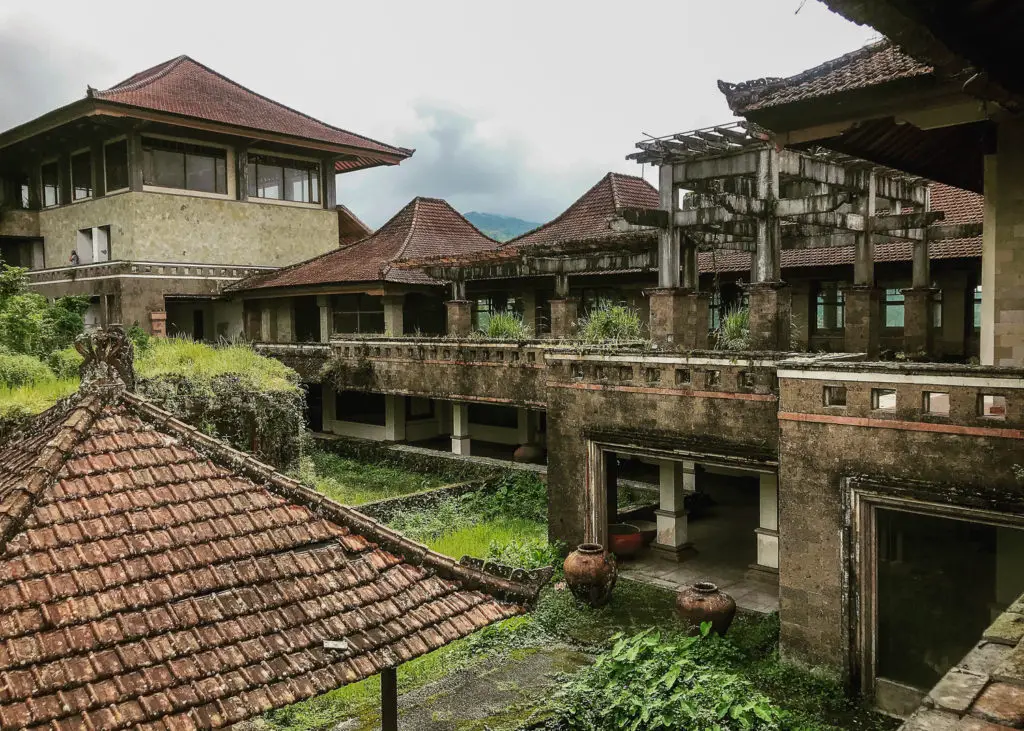
Another theory is that the hotel is haunted by the landlocked souls of labourers who were worked to death during its construction. The hotel, originally named Hotel Pondok Indah Bedugul, isn’t open for visitors but if you hand the guard 10,000 IDR, he’ll let you in to explore. I recommend seeing it as soon as possible because rumours indicate that visitors will no longer be permitted entrance (even with a bribe) because of how dangerous it is.
Contributed by Nat Wanderlust.
12. Auschwitz-Birkenau – Oświęcim, Poland
The “Final Solution to the Jewish Question” was the official code name for the murder of Jews during World War II. At least 1.3 million people were sent to Auschwitz by the Nazis and a shocking 1.1 million people were murdered by the SS, mainly in gas chambers.
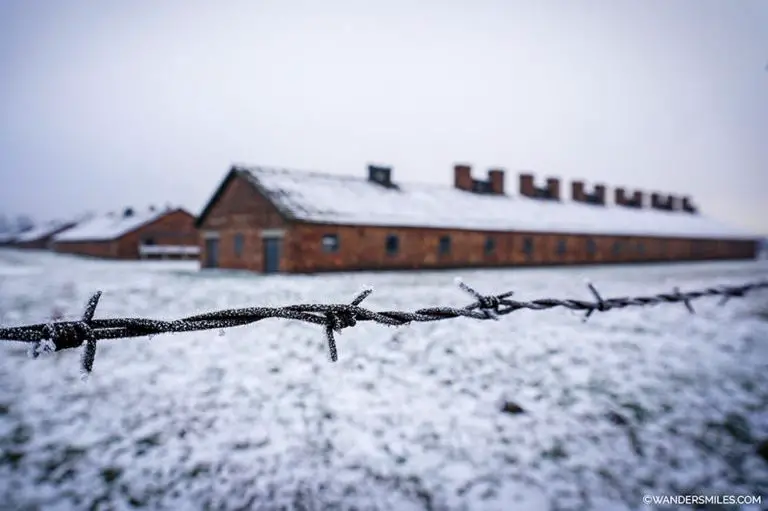
Auschwitz-Birkenau is located on two different sites. Auschwitz I comprises brick buildings and the Death Block where people were gassed. Auschwitz II, known as Birkenau, was opened as they could not cope with the scale of death at Auschwitz I.
On arrival, you’ll see the famous train tracks where people were transported in and either sent to the gas chambers or given labour duty. Once the latter were emaciated, they were gassed and replaced with new prisoners.
I cried in horror seeing the piles of shoes, suitcases and false legs that once belonged to people. Human hair was used to make felt for socks given to the forces in submarines – 293 sacks of hair were found on liberation. Words cannot describe the emotions you’ll have upon seeing this symbol of this horrific dark chapter in our history.
Contributed by Vanessa from Wanders Miles, follow her on Instagram !
13. Day of the Dead – Oaxaca, Mexico
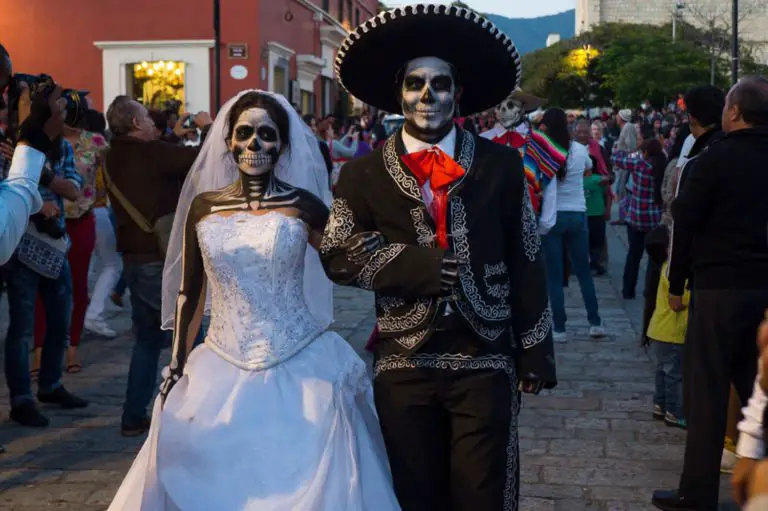
The Mexican Day of the Dead festival is a darkly uplifting event that occurs each year between October 31st and November 2nd. On these days, family and friends celebrate the lives of loved ones passed. It is widely believed that for three days each year, the veil between this world and the next is especially thin.
During the Day of the Dead festival, the spirits of the departed return to provide counsel to their living family members and friends. Much of the reunion is celebrated within the cemetery, where graves are cleaned and decorated for the occasion. On certain dates, families spend the whole night in the cemetery eating sugar skull sweets, drinking alcohol and playing music.
UNESCO recognises ‘Dia de Los Muertos’ as being ‘ Intangible Cultural Heritage of Humanity ’. Experiencing the Day of the Dead is a once-in-a-lifetime opportunity; especially in Oaxaca where visiting graves is commonplace. Prepare for everything you have ever thought about death to be challenged.
Contributed by Castaway With Crystal. Follow her on Instagram!
14. Red Terror Martyrs’ Museum – Addis Ababa, Ethiopia
The military junta who took power after Ethiopia’s Emperor Haile Selassie was ousted were known as the Derg. After prolonged internal wranglings, Mengistu, a soldier from the ranks, emerged as their leader and the dictator of Ethiopia.
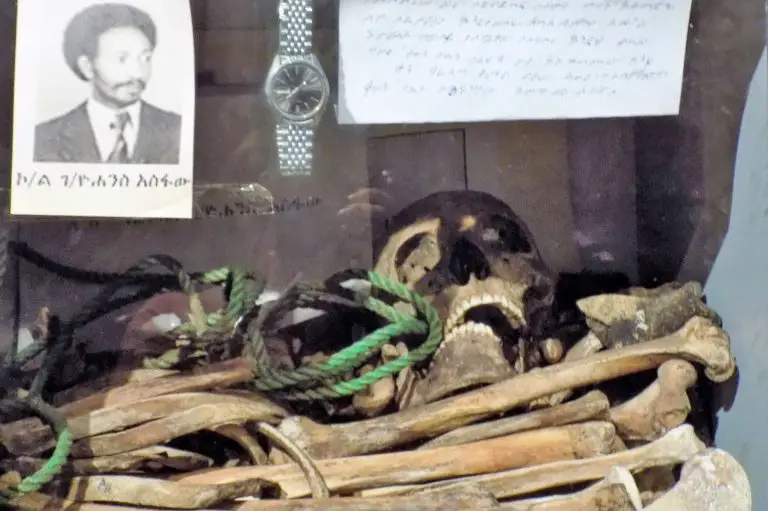
Within a couple of years, the Derg had created terror among ordinary Ethiopians, tens of thousands of whom had been imprisoned without trial and tortured, or worse, executed. The term ‘Red Terror’ comes from Mengistu’s famous speech when he smashed a bottle of blood to illustrate the killings to come. His regime is estimated to be responsible for the deaths of between 1.2 and 2 million Ethiopians.
Today, the horrors of Mengistu’s regime are remembered in the Red Terror Martyrs’ Museum in Addis Ababa . Opened in 2010, this small museum teaches about the atrocities of the regime. Photos of victims cover the walls alongside displays of human remains recovered from mass graves. We came away from the Martyrs’ Museum appalled by man’s inhumanity to man.
Contributed by Andrea of Happy Days Travel Blog. Follow her on Facebook !
15. Constitution Hill – Johannesburg, South Africa
Constitution Hill is now a living museum which tells the story of South Africa’s journey to democracy. It’s hard to comprehend that people like Nelson Mandela and Mahatma Gandhi served time here in the 1960s and that the prison was still operational until 1982.
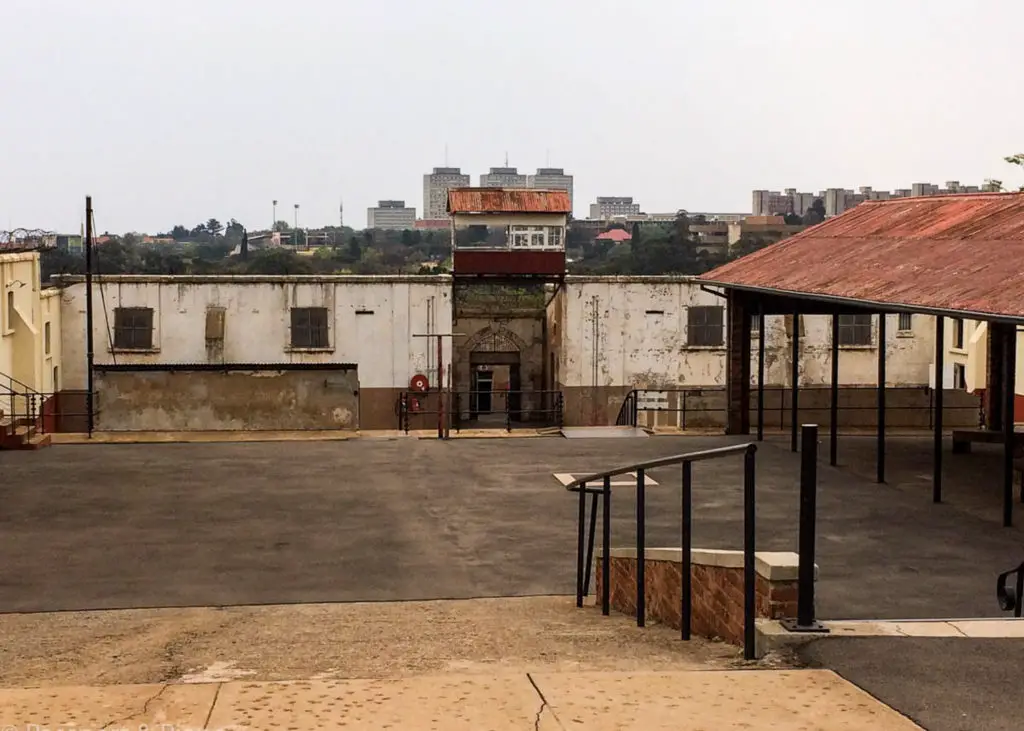
There are several sites that you can visit at Constitution Hill. The Old Fort is where white male prisoners were housed. Although the cells were overcrowded and unhygienic, the rooms are larger than those of the black prisoners. They were held in Block number 4. There was very little daylight and as I stepped inside, I was terrified that someone would shut the cell door behind me.
There’s also the Awaiting Trial Block. The block was demolished and the bricks were used to build South Africa’s new Constitutional Court. Thankfully this court serves to uphold the rights of all South Africans, regardless of colour, but the bricks are a poignant reminder of its troubled past.
Contributed by Fiona of Passport and Piano . Follow her on Facebook !
16. Shanghai Tunnels – Portland, USA
In a city known for the slogan ‘ Keep Portland Weird ,’ the Shanghai Tunnels fit right in. It’s believed that from 1850 until 1941, men in Portland, Oregon, were regularly kidnapped and sold to ship captains as labourers. During this period, there was a shortage of labour available for the city’s booming shipping industry and this created a black market.
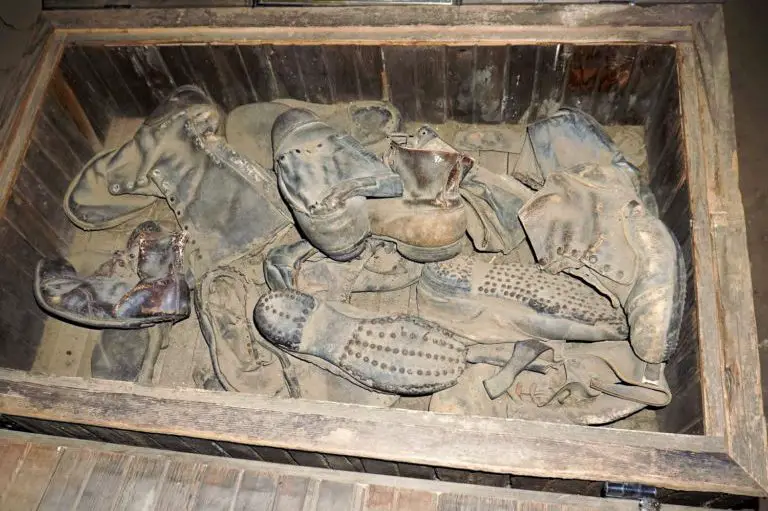
To capture these men, underground tunnels originally built to move inventory between businesses were repurposed for illicit use. Trapdoors were even installed in some of the local bars so that drunk men would drop into the tunnel below.
Today, tours of these tunnels are offered daily by a non-profit organisation, Shanghai Tunnels/Portland Underground. All tour participants are advised to be prepared for spending an hour in a confined space. While the nature of the tour is sad and tragic, it’s an important part of Portland’s history.
Contributed by Wendy of Empty Nesters Hit the Road. Follow her on Facebook !
17. Brno Ossuary – Brno, Czech Republic
Of the attractions in Brno , several of them could be classed as dark tourism attractions. The one that moved me the most, though, was the ossuary underneath the St. James Church.
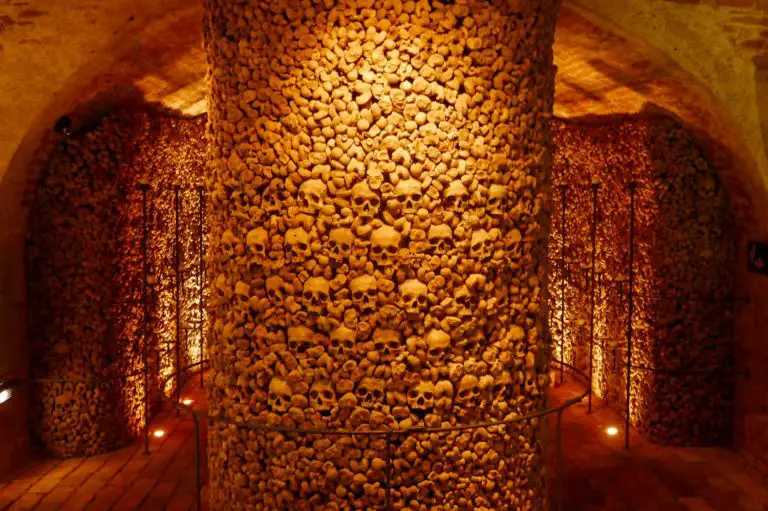
Surrounding this church, which is known as the ‘Kostnice u sv. Jakuba’ in Czech, was one of the main churchyard cemeteries in Brno. Eventually, as the city grew, there was no room left for new burials so a grave rotation system was adopted.
When a burial took place, the body was left in the grave for between 10 to 12 years. After that, the bones were taken out to make room for the next burial. The displaced remains were then relocated to the ossuary, where bones from thousands of graves were piled up.
It’s estimated that Brno Ossuary holds the bones of more than 50,000 people, which makes it the second-largest ossuary in Europe; only second to the Paris catacombs. The mortal remains laid to rest here include victims of the Swedish siege of Brno and the Thirty Years’ War, as well as many victims of plague and cholera epidemics.
Contributed by Wendy of The Nomadic Vegan. Follow her on Instagram !
Do you have any dark tourism examples to share? Let us know in the comments!
9 thoughts on “17 Must-Visit Dark Tourism Destinations Around the World”
Comuna 13 is spellt with only 1 -m-.
I wonder why choose the cemetery in Sucre, when so many others are more characteristic (eg. Père Lachaise in Paris) or even ‘livelier’ (eg. in Santiago de Chile).
Interesting & important topic though. I’m in the process of rewriting an article about the mines of Potosi. That is one dark tourism destination I strongly oppose, for one simple reason; people are still dying in there.
Thanks for the heads up Anthony! 🙂
I chose the cemetery in Sucre because it was a little bit off the beaten track – I like visiting the lesser known places as well as the more famous ones.
I can understand your point about the mines of Potosí and can see why you disagree with it. I must say though, from my own personal experience, I found my visit to be hugely enlightening. I was initially very torn about the idea of visiting an active mine but in the end, we chose a company run by an ex-miner who took us into the mine personally. In my opinion, our visit never felt voyeuristic at all and the miners seemed very grateful for the tourists visiting. A percentage of the tour cost went directly into the funding the healthcare of the miners when needed and also towards maintenance of the mine.
Such a great and informative post, Sheree! There were so many sites here that I was not even aware of – that is why sharing posts about dark tourist sites is so important! It really helps educate the world and helps us honour the past and the lives that were lost at some of these sites.
Like you, I am a huge fan of cemeteries. It is so wonderful that some countries treat death as a natural normal part of life (unlike some of our countries!). It really helps people remember happy memories of their loved ones they recently lost.
Thanks so much for being a part of it Crystal! I also learnt about loads of new dark tourism sites – it has definitely been an eduction as there was plenty of these I had never even heard of. It is definitely important to make sure the stories behind these places get told.
Thank you for including us in this fantastic collab!
I love how varied these sites are, and that you’ve included a lot of lesser know dark tourism destinations mixed in with some of the big ones. Even as professional dark tourists (that’s a thing, right?), we hadn’t heard of all of these places. The Shanghai Tunnels were completely new to me, but definitely want to head to Portland now.
I’m also a little embarrassed to admit that despite being to Hamburg MANY times, I was not aware of the St. Nicholas’ Church. I blame that on the fact that I was visiting a friend and not really touristing…
Awesome post everyone! I think it is really important for people to visit at least one of these in their lifetime. I think we are jaded from the major events that happened to our world and it’s people when we are told the stories. To see the places in real life, it puts life into perspective and how crazy life can be if we don’t fight for what is right.
I couldn’t agree more. Even though visiting these kinds of places is hard, I still think it is really important to help us realise the human effect of what we see on the television. As you said, it is only once you truly understand the devastation that you realise the importance of fighting for the right things.
Great article . I’ve been to a lot of places around the world and haven’t even heard of some of these .
Thanks Jennifer! I’ve certainly added a lot of places to my future visit list!
Leave a comment Cancel reply

Opleidingen
- Samenwerken
Over Inholland
- Ontdek onze interessegebieden
- Bekijk onze hbo-opleidingen
- Werken en leren - deeltijd
- Hulp bij je studiekeuze
- Wij doen onderzoek naar
- Onze lectoraten
- Bekijk de projecten
- Maak kennis met onze lectoren
- Wie zijn wij
- Neem contact met ons op
- Werken bij Inholland
- Bekijk onze vacatures
- International students

De toeristische aantrekkingskracht van donkere bestemmingen en rituelen
Wereldwijd tonen toeristen buitengewone interesse voor begraafplaatsen, spookhotels, slagvelden, oorlogsmonumenten en andere donkere bestemmingen en rituelen. De duistere kant van het toerisme stond vorige week centraal tijdens het eerste internationale Dark Tourism Congres bij de opleiding Tourism Management (HTRO) in Diemen.
Dark tourism is de verzamelnaam voor het reizen naar bijzondere plekken die op de een of andere manier in verband kunnen worden gebracht met de dood, lijden of het schijnbaar macabere. Voorbeelden zijn onder andere slagvelden, begraafplaatsen, gevangenissen en ook de zogeheten ‘Torture-musea’.
Om kennis uit te wisselen en op de hoogte te zijn van de laatste ontwikkelingen kwamen meer dan tachtig deelnemers naar Diemen. Ze vertegenwoordigden universiteiten uit Engeland, Japan, de Arabische Emiraten, Turkije, Ierland, de Verenigde Staten, Slovenië, Mexico, Duitsland, Malta, België en Litouwen. Ook de belangstelling vanuit Nederland was groot.
Keynotes en presentaties Professor Philip Stone van de University of Central Lancashire en directeur van het Institute for Dark Tourism Research (IDTR) gaf als keynote zijn visie op het omgaan met de dood in het dagelijks leven en binnen het toerisme in het algemeen. Doctor Rami Isaac van het NHTV Centre for Sustainability, Tourism and Transport ging dieper in op de plaats van het fenomeen in het Midden-Oosten en in het bijzonder in Palestina. Vanuit de opleiding Tourism Management in Diemen en Rotterdam gaven negen studenten en alumni een presentatie over hun gedane of nog lopende dark tourism-onderzoek.
De fascinatie voor de dood is alleen donker, als je het zelf zo ervaart en beleeft.

Deelnemers konden verder meedoen aan tientallen workshops over verschillende thema’s gerelateerd aan dark tourism. Zoals het bijwonen van de presentatie van onderzoeksresultaten naar motivatie van bezoekers van sloppenwijken in Zuid-Amerika en India (slum tourism), of bijvoorbeeld een workshop over de balans tussen herdenken en commercialisatie. Na het formele deel op de tweede dag van het congres gingen bezoekers ‘s middags op excursie en bezochten niet alleen de ‘duistere kanten’ van Amsterdam, maar ook de Amsterdam Dungeon.
Inhoudelijk uitdagend De reacties op en tijdens het congres waren zeer enthousiast. Zo vond uitwisselingsstudent Lauren van de Erasmus Universiteit Rotterdam de bijeenkomst “zeer nuttig voor onderzoeksdoeleinden met goede inhoudelijke gesprekken”. Nijad, die zelf een presentatie verzorgde over zijn onderzoek naar toerisme op begraafplaatsen in Londen sprak van “een uitdagend evenement die me motiveerde het onderste uit de kan te halen”. Docenten Wendy en Bianca stelden dat “de fascinatie voor de dood alleen donker is, als je het zelf zo ervaart en beleeft”.

Een van de organisatoren van het congres is toerismedocent Karel Werdler (zie foto). Enkele jaren geleden publiceerde hij, in aanloop naar zijn promotie, het naslagwerk ‘Dark Tourism, De dood achterna’, vol min of meer macabere, maar fascinerende trekpleisters. Lees het interview met Karel over zijn fascinatie voor de donkere vormen van toerisme.
Het Dark Tourism Congres werd georganiseerd in samenwerking met het Institute for Dark Tourism Research (IDTR) en Atlas ( Association for Tourism & Leisure Education & Research).

Gezellig op reis naar duistere plekken
Wat maakt donker toerisme zo aantrekkelijk?

Ben jij wel eens naar de slagvelden bij Waterloo geweest? Of zou je graag de plek bezoeken waar eerst de Twin Towers stonden? Dan ben jij een zogeheten dark tourist . Deze vorm van toerisme is heel populair. Maar waarom bezoeken mensen plekken vol gruwelijkheden?
Op vakantie gaan naar concentratiekampen en begraafplaatsen spreekt vast niet iedereen aan. Toch bezoeken steeds meer mensen dit soort plaatsen. Volgens Philip Stone, de directeur van het Institute for Dark Tourism Research , omvat donker toerisme elk bezoek aan een plek dat met de dood, een ramp of andere gruwelijkheden heeft te maken. “Het is de commercialisering van het morbide”, zei hij in een interview met de Engelse krant The Guardian . “Vaak begint het met rondleidingen door locals en eindigt het met een officieel herdenkpunt voor de tragische gebeurtenis in kwestie dat toeristen kunnen bezoeken.”
Ook Nederland kent populaire, donkere attracties. Zo brak het Anne Frank Huis in Amsterdam in 2015 voor het zesde jaar op rij het bezoekersrecord met 1,2 miljoen bezoekers. Debbie Listle, docent internationale relaties aan Queen’s University Belfast , denkt dat de intensivering van globalisering en mediaberichtgeving een rol spelen in de toegenomen belangstelling voor ‘donkere plaatsen’. Zo zijn we dankzij het nieuws en het internet steeds beter op de hoogte van, en meer betrokken bij, wat er elders speelt.

De rij voor het Anne Frank Huis reikt tot ver buiten de deur.
Daarnaast zijn we meer en makkelijker gaan reizen. “En wat je dan ziet is dat toerisme versnippert in allerlei kleinere niches, zoals donker toerisme”, zegt Ben de Pater, associate professor in sociale geografie aan de Universiteit van Utrecht.
Gruwelijke geschiedenis
Waarom zijn mensen überhaupt geneigd om plekken te bezoeken waar de meest vreselijke dingen plaatsvonden? Volgens toerisme-marketingexpert Tony Seaton van de University of Bedfordshire , worden we bij dergelijke trips gedreven door een verlangen de dood in de ogen te kijken. Dat kan op een directe manier, door bijvoorbeeld schedels te bekijken, ofwel symbolisch, door herdenkingstekens te bezoeken. Het gaat daarbij vooral, maar niet uitsluitend, om een gewelddadige dood, zo zegt hij.
Volgens Peter Tarlow, rabbijn en hoogleraar toerisme aan de Universiteit van Texas, zijn mensen daarnaast vaak verwonderd over en gefascineerd door gruwelijke zaken uit het verleden waarover ze veel gehoord hebben. Ze willen de plek des onheils graag met eigen ogen zien en er meer over leren. Concentratiekamp Auschwitz-Birkenau is een voorbeeld en, sinds 2001, Ground Zero in New York. Omdat bezoekers vaak ook komen om de slachtoffers te herdenken en aangeven geraakt te worden door hun lijden wordt dit ook wel rouwtoerisme genoemd. Het overgrote deel van dergelijke toeristen gedraagt zich doorgaans belangstellend en respectvol.
Ramptoerist
Maar er zijn ook andere soorten toeristen: de sensatiezoekers. Zij bezoeken plaatsen waar een tragedie plaatsvond vooral voor hun plezier, als entertainment zonder veel binding met de slachtoffers te voelen. Dergelijke ramptoeristen maken bijvoorbeeld graag een selfie voor een ingestort gebouw. Het liefst arriveren ze zo snel mogelijk nadat een plek getroffen is om er ‘echt bij te zijn’.
In Pescara del Tronto kunnen ze er over meepraten. Daags nadat dit Italiaanse dorpje dit jaar getroffen werd door een hevige aardbeving, werd het een toeristische attractie. De politie en andere hulpverleners hadden hun handen vol aan het wegsturen van bezoekers die foto’s maakten van kapotte gebouwen en de wegen blokkeerden. Overheden hebben gewoonlijk dan ook weinig op met deze versie van donker toerisme, die overigens vaak weer net zo snel verdwijnt als het opkomt.
Dat ramptoeristen soms een echte eh… ramp kunnen zijn moge duidelijk zijn. Maar wat zijn eigenlijk de gevolgen van toerisme naar donkere hotspots , die wel gedoogd of zelfs gesteund worden door (lokale) overheden?
Net als bij gewoon toerisme is een positief kenmerk van toerismestromen naar donkere plaatsen dat het geld oplevert. Juist in een gebied waar een ramp heeft plaatsgevonden kan dat heel belangrijk zijn. Neem New Orleans. Nadat orkaan Katrina in 2005 de stad grotendeels verwoestte, brachten Katrina Tours , rondleidingen die bezoekers in staat stelden de schade zelf te zien, geld in het laatje. Ook nu bestaan ze nog.
Daarnaast kan een toestroom van geïnteresseerden ervoor zorgen dat een bepaalde tragische gebeurtenis niet in de vergetelheid raakt. Door de vele bezoeken van toeristen blijven de slachtoffers en hun leed op de kaart staan. Soms houdt donker toerisme een plek ook letterlijk overeind, doordat de beheerders de inkomsten aanwenden om renovaties van grafstenen of andere overblijfselen te betalen. Als een donkere plek van historisch of culturele waarde druk bezocht wordt, kan die bovendien eerder een Werelderfgoedstatus van de Verenigde Naties krijgen, wat weer financiële voordelen met zich meebrengt.
Aan de andere kant kunnen diezelfde toeristen juist ook schade toebrengen, zeker als ze met heel veel zijn. Nu geldt dat voor de meeste populaire bestemmingen. Donkere attracties zijn echter extra in het nadeel, omdat ze vaak niet gepland waren. Meestal ontstaan ze ineens, zoals de tunnel waar prinses Diana is overleden. Met name de donkerste plekken (zie kader) zijn nooit ingericht op massatoerisme en beschadigen daardoor.
Om donkere attracties die entertainen te onderscheiden van plekken waar herdenken voorop staat, maakte donker toerisme-expert Philip Stone een ranglijst. Die loopt van grijs naar zwart. De lichtste plekken representeren donkere trekpleisters die vooral amusement bieden, zoals kerkers: toeristische plekken in de donkere gangen onder een stad waar auteurs over heksenverbrandingen en andere gruwelijkheden uit het verleden vertellen om deelnemers te laten lachen en griezelen .
Musea en educatieve centra die gaan over dood en lijden zijn donkergrijs. Begraafplaatsen zijn weer wat donkerder. Pikzwart zijn plekken waar massaal mensen werden gedood, zoals slagvelden en concentratiekampen.
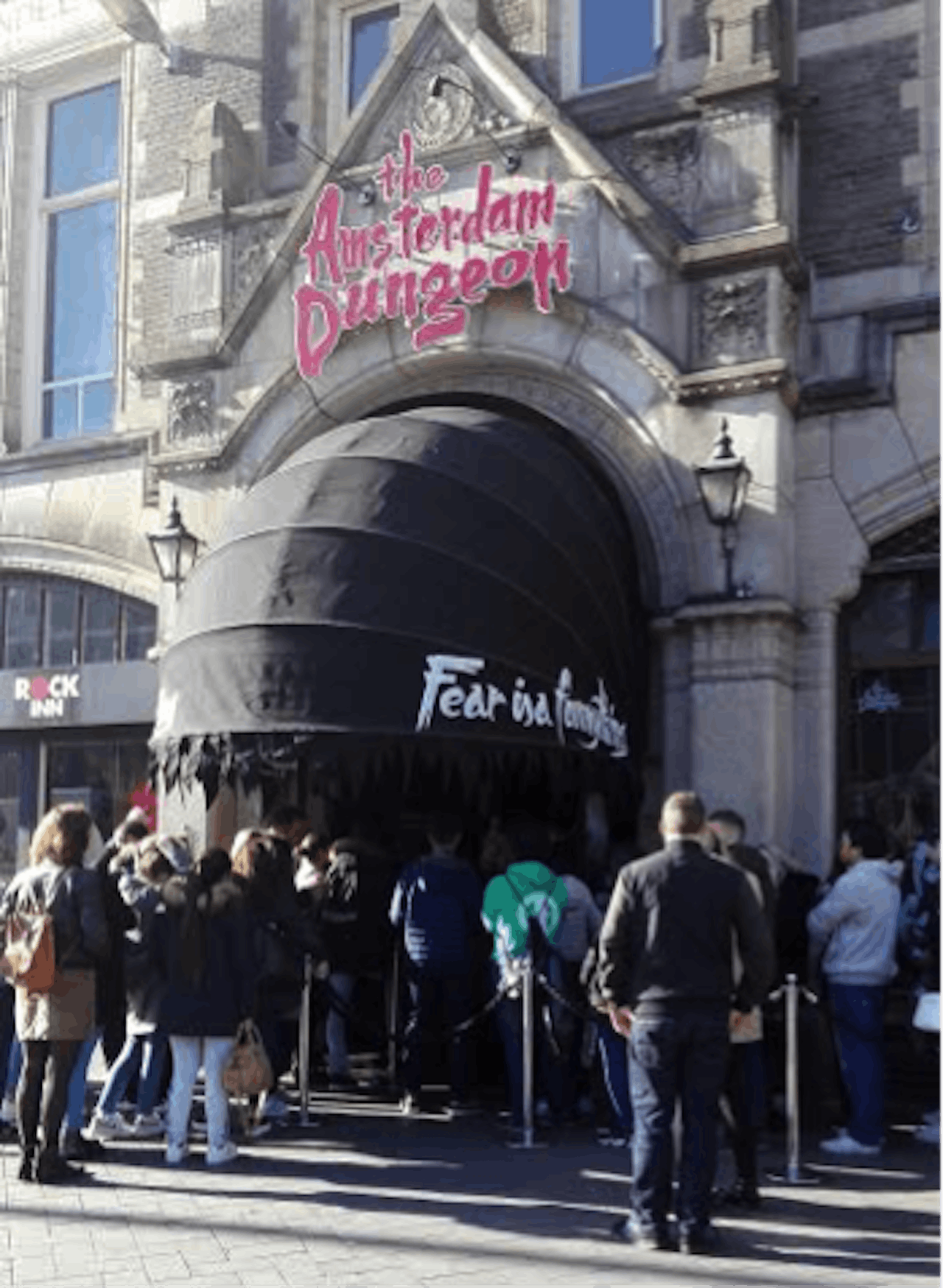
Ook Auschwitz-Birkenau kent dit probleem. Vorig jaar bezochten 1,2 miljoen toeristen het voormalige concentratiekamp in Polen, het hoogste aantal ooit. “Die enorme toeloop en de soms letterlijke druk die ermee gepaard gaat, zorgt ervoor dat de barakken en andere gebouwen sneller verzakken of anderszins aangetast worden”, vertelde Jolanta Banas, directeur van de afdeling conservatie, aan de Smithsonian.com, een Amerikaanse populair-wetenschappelijke website. Bovendien staan sponsors vaak niet in de rij om donkere bestemmingen te ondersteunen, met name de erg donkere (zie kader). “Die verbinden zich liever niet aan een ‘museum van haat’”, vertelde Auschwitz woordvoerder Jarek Mensfelt aan NRC Handelsblad.
Moet kunnen?
Naast het feit dat grote toeristenaantallen een plek waar veel slachtoffers vielen kunnen beschadigen, roept donker toerisme nog meer vragen op. Mag je geld verdienen aan slachtoffers en bezoekers met hun leed vermaken? En wat als de partij die er financieel van profiteert verantwoordelijk was voor hun ellende?
De grens is vaag, vindt cultureel geograaf Bouke van Gorp van de Universiteit van Utrecht. “Want welk slagveld mag je dan wel gaan bekijken? Of welk erfgoed mag je dan nog wel bezoeken? Je kunt ook bij een VOC -gebouw in Indonesië denken: mooie façade, maar daarachter zat een heel systeem dat de lokale bevolking onderdrukte.”
Die kritische houding is ook aan te bevelen gezien het proces waarmee donkere plekken na verloop van tijd officieel opengesteld worden voor toeristen. “In de eerste jaren, zoals bij Auschwitz-Birkenau, werd veel gepleit voor vernietiging. Na een aantal jaren gaan er dan toch wat mensen naar toe. In eerste instantie om te herdenken en later komt er nog eens nieuwsgierigheid bij.” De afstand is nu zo groot dat meer mensen het wel willen bezoeken en daar wordt het dan ook op ingericht aan de hand van bijvoorbeeld musea. Het gevolg van de historische afstand is dat na verloop van tijd verhalen worden vergeten. Ook moeten de donkere attracties belevenissen selecteren, waardoor niet alles getoond kan worden. “Het verleden wordt daardoor anders gerepresenteerd en geïnterpreteerd.”
Ook Nathan Austin, een specialist in Business Administration aan de universiteit van Baltimore, meent dat donker toerisme niet per definitie goed of fout is – veel hangt af van hoe de marketing van de plek in elkaar steekt. Als die bijvoorbeeld rekening houdt met lokale gevoelens en met respect spreekt over de slachtoffers kan toerisme naar dergelijke plekken bijdragen aan bewustwording. Maar hij is kritisch over plekken waar de uitbaters het gruwelijke nog meer aandikken ter amusement.
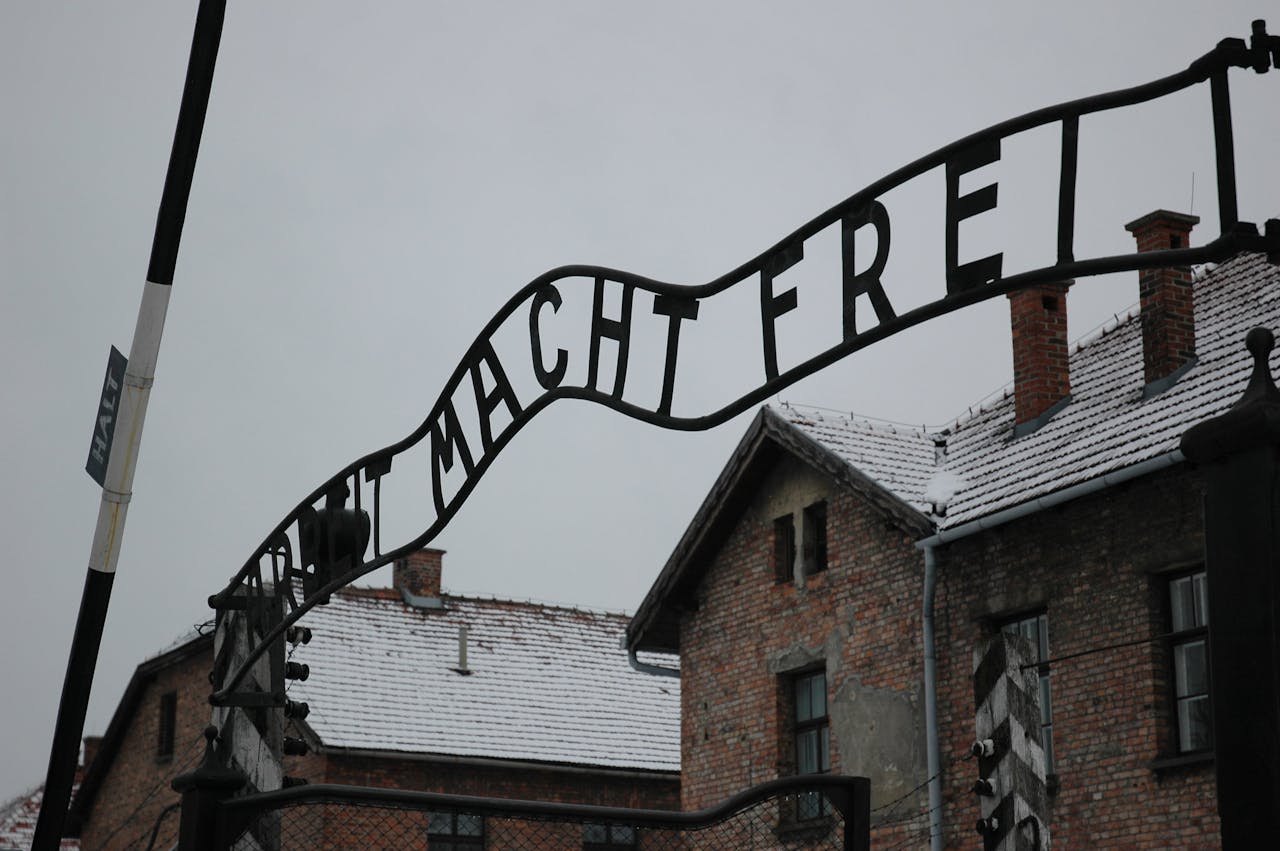
Uit respect voor de overledenen mag je Auschwitz alleen in stilte betreden.
Als de lokale bevolking nog erg worstelt met de tragische gebeurtenis in kwestie, kan donker toerisme in elk geval extra gevoelig liggen. Zeker als het overgrote deel van de betrokken burgers er niet van profiteert. Zo werden in 2012 bustours in de Lower Ninth Ward , de meest getroffen wijk in New Orleans, stopgezet. Bewoners waren het zat als aapjes aangestaard te worden, terwijl het busverkeer de renovatiewerkzaamheden vertraagde. Omwonenden verdienden nauwelijks aan de toeristen. Ook vonden sommigen het vervelend dat ze door de tours steeds weer met de ramp geconfronteerd werden. “Zo kun je het nooit achter je laten”, vertelde tourleader Tom Nagelin bijvoorbeeld aan de Amerikaanse krant The New York Times . Zelf organiseert hij dan ook uitsluitend culturele en culinaire tours.
Wat vind jij? Mag donker toerisme?
Dit artikel is geschreven door student Eveline Braat voor een workshop populair-wetenschappelijk schrijven, verzorgd door NEMO Kennislinkredacteur Marloes van Amerom, bij de masteropleiding geocommunicatie van de Universiteit Utrecht.
Austin, N. K. (2002). ‘Managing Heritage Attractions: Marketing Challenges at Sensitive Historical Sites’. International Journal of Tourism Research 4(6), pp. 441-457.
Brown, R., 2012, New Orleans Limits Hurricane-Themed Excursions New York Times . 11 oktober
Burns, P. & Novelli, M. (2006) Tourism and politics: Global frameworks and local realities . Elsevier.
Coldwell, W. (2013). Dark tourism: why murder sites and disaster zones are proving popular disaster-zones 31 oktober
Cremers, R. & Alonso, S. (2008). Museum van de haat 27 september
Curry, A., Can Auschwitz be saved? , Smithsonian.com
Slachtoffers aardbeving boos op ramptoeristen: stop met selfies maken! (2016). Nieuwsblad.be. 30 augustus
Stone, P.R. (2006). ‘A dark tourism spectrum: Towards a typology of death and macabre related tourist sites, attractions and exhibitions’. Tourism: An Interdisciplinary International Journal 54(2).
Tarlow, P.E. (2005). ‘Dark tourism: The appealing ‘dark side’ of tourism and more’. In: M. Novelli ed., Niche tourism: Contemporary issues, trends and cases .
Werdler, K. en N. Geuskens, 2012, Dark Tourism in Nederland? Een casestudy naar bezoekersprofielen en motivatie in Nationaal Monument Kamp Amersfoort
Onze leestips
Met deze selectie van publicaties, begrijp jij de wereld om je heen beter. Dit is wat je nu moet weten.
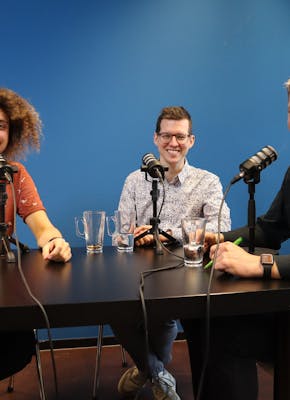
Oppositie in de Kamer

Langer thuis in eigen huis
Zorg voor morgen: zelfredzaamheid stimuleren.
De druk op de gezondheidszorg neemt de komende jaren enorm toe. In de serie Zorg voor morgen onderzoeken we hoe we de zorg werkbaar kunnen houden. Deze aflevering: langer zelfstandig blijven.

Alsnog hooikoorts
Lezersvraag: allergisch op latere leeftijd.
‘Kun je op latere leeftijd - na je 40ste - nog hooikoorts ontwikkelen?’ vroeg een NEMO Kennislink-lezer ons. We legden de vraag voor aan een deskundige.
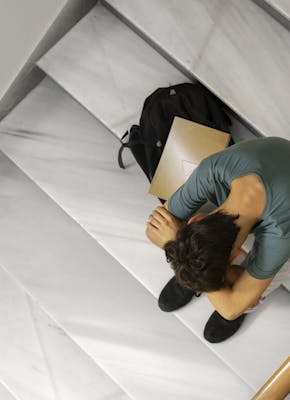
Cyberpesten gaat altijd en overal door
Cyberpesten kan altijd door blijven gaan en eeuwige sporen achterlaten op het internet. Net als bij offline pesten kunnen de gevolgen voor het slachtoffer verstrekkend zijn.
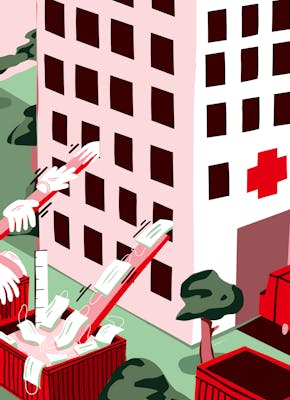
De afvalberg van de intensive care
Operatie groene zorg: minder materiaalgebruik.
Hoeveel materialen gaan er eigenlijk precies doorheen op de intensive care van een ziekenhuis? Het Erasmus Medisch Centrum in Rotterdam bracht dat voor het eerst in kaart.

Alles over AI
Recensie boek ‘de ai-revolutie’.
Wie meer wil weten over kunstmatige intelligentie en de impact daarvan op de maatschappij, leest ‘De AI-revolutie’ van Maarten Sukel.

A Traveler's Guide to Dark Tourism
Exploring the world's dark & unusual travel destinations.

Spac Prison: Albania’s Dark Tourism Destination Reveals a Haunting History
Nestled within the picturesque mountains of Albania, SPAÇ Prison stands as a chilling reminder of the country’s tumultuous past. Once a site of political imprisonment and human suffering, this haunting location has become a dark tourism destination, attracting visitors prepared … Read More

Visiting Hartheim Castle Memorial Site (Austria)
As far as dark tourist destinations are concerned, there’s few more harrowing than Hartheim Castle. During WWII it was a Euthanasia Centre, a secret Nazi killing facility, and part of the Aktion T4 program. Here, German citizens tagged as mentally … Read More

Tsitsernakaberd Genocide Memorial & Museum (Yerevan)
For dark tourists in Yerevan, a trip to Tsitsernakaberd is a must. The Memorial and Armenian Genocide Museum provide a powerful insight into the country and its culture and of the darkest period in the nations’ relatively recent history. The … Read More

Visiting Cellular Jail, Port Blair – All You Need to Know
Cellular Jail in the Andaman Islands has a dark and significant history. During the many years of British rule, prisoners were forced into exile in this remote location. Known as the Kala Pani (Black Water in Hindi), Indian freedom fighters … Read More

Masada, Israel – 1st Century Fortress and Site of a Mass Jewish Suicide
“Masada shall not fall again.” The oath that soldiers take when inducted into the Israeli Defence Forces ends with this line. It is connected to a siege that took place almost 2000 years ago. The 1st-century fortress at Masada was … Read More

KGB Cells Museum – Tartu, Estonia
In the center of the Estonian city of Tartu stands an unassuming building that once held a dark secret. During the first Soviet occupation of the country between 1940 and 1954, the basement was home to the KGB. Operating covertly … Read More

North Brother Island – Abandoned Quarantine Facility in New York
North Brother Island, located on the East River between the Bronx and Riker’s Island in New York, is a place with a dark history. Not only is the island home to the worst loss of life in New York’s history … Read More

Ruddock, Louisiana – Entire Town Destroyed by Hurricane
At the turn of the 20th century, Ruddock in Louisiana was a bustling community, located on an isthmus between Lake Maurepas and Lake Pontchartrain, the town was connected by the railroads with a train coming through daily. At the height … Read More

Vorkuta – Russia’s Dying City Above the Arctic Circle
Just over 90 miles north of the Arctic Circle and 40 hours by train from Moscow, sits the once-bustling coal-mining city of Vorkuta, Russia. Built by gulag inmates during Stalin’s big purge in the 1930s, this desolate region on the … Read More

Fleury-devant-douaumont – A Village that Died for France
During World War One, Fleury-devant-douaumont became known as one of the villages that died for France. Caught in the midst of The Battle of Verdun, (one of the longest and fiercest artillery battles of the Great War), French and German … Read More

Reggane and In Ekker – French Nuclear Test Sites, Algeria
Reggane and In Ekker were once nuclear test sites in Algeria. It was here that the French experimented with their atomic arsenal in the 1960s. Thirteen underground nuclear detonations were carried out at the In Ekker site. The reckless nature … Read More

Kadykchan – Abandoned Soviet Mining Town
Kadykchan is located at the eastern extremity of Russia in the Kolyma region of Siberia, an area renowned for the harshness of the climate. This part of Siberia is known for something else too, the devastating brutality of its Gulags. … Read More

Inside Saint Elmo, Colorado’s Best Preserved Ghost Town
St. Elmo, is currently the best-preserved ghost town in Colorado. This former gold mining camp in Chaffee County lies in the heart of the Sawatch Range. The entire district was placed on the National Register of Historic Places in 1979, … Read More

A Trip to Tinian Island – WWII Relics in the Pacific
Despite its remote location in the Pacific, Tinian is slowly becoming more popular with tourists, especially dark ones that are interested in Pacific WWII History. There are a number of reasons why. Not only did the island become one of … Read More

The Ruins of Villa Epecuén, Argentina – A Resort Town Submerged
Villa Epecuén was once a bustling tourist town along the shore of Lago Epecuen. The salt lake, some 600 kilometers away from Buenos Aires was a popular holiday spot for many decades in the 20th century. People would flock from … Read More

Visiting Nauru – An Island From Boom To Bust
Nauru has had a troubled history, passed from one empire to the next. As one of the three big “phosphate rocks” of the Pacific, (Banaba in Kiribati and Makatea in French Polynesia being the other two), the island was a … Read More

The Buried Village of Te Wairoa – Dark Tourism in New Zealand
On June 10, 1889, New Zealand’s deadliest volcanic eruption devastated the surrounding landscape and killed over 120 people. The villagers around Mount Tarawera on the on North Island did not stand a chance as boiling mud and hot springs tore … Read More

Port Royal – Sunken Pirate City, Jamaica
Port Royal, Jamaica was once known as “the most wicked and sinful city in the world”. Founded in 1494 by the Spanish, the enclave positioned on the mouth of what is now called Kingston Harbour, was the center of shipping … Read More

Bunker Valentin, Bremen – Nazi U-Boat Facility
Bunker Valentin was the largest fortified U-boat facility in Germany during WWII. Built to produce submarines on a grand scale for the Nazi war effort, more than 10,000 forced laborers were used in the construction of this gigantic bunker, support … Read More

Chagan Nuclear Tests, Crater Lake & Ghost Town – Kazakhstan
During the Cold War, the Soviets couldn’t get enough of blowing up nuclear weapons in northeastern Kazakhstan. The tests were not always with the intent to one day nuke the USA, however. Conducted by the military under the banner of … Read More
Privacy Overview
Privacy Policy - Contact - Terms and Conditions
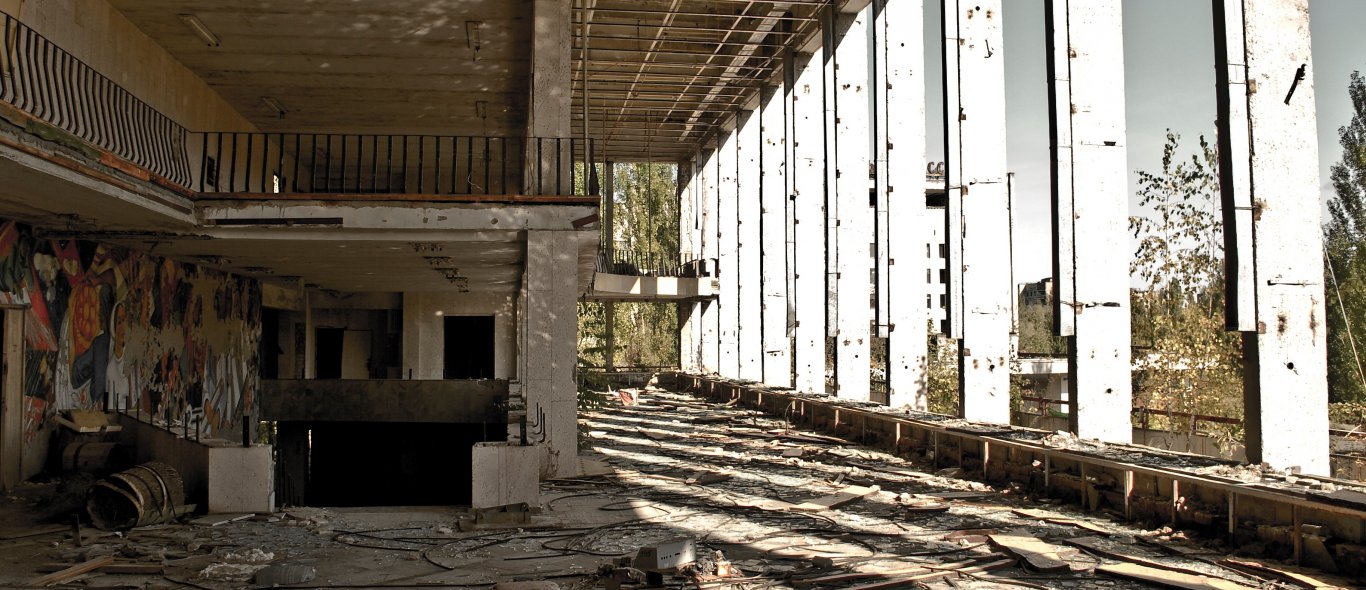
Dark tourism is een vorm van toerisme waarbij je bezienswaardigheden bezoekt die gerelateerd zijn aan tragische gebeurtenissen. Wij zetten acht ‘duistere’ reiservaringen op een rij. Zou jij ze willen ervaren?
1. vlucht vanuit mexico de amerikaanse grens over .
Dit bericht bekijken op Instagram THF Service trip/Day 1: Crossing border It was 2 weeks ago when I got an opportunity to join 24 Co-workers to the very 1st USANA employees Service trip to Mexico. @brianpaul was the leader of this trip. We were worry-free, just do what he said. ? Lesson#1 Follow the leader! เมื่อ 2 สัปดาห์ก่อน ได้มีโอกาสเดินทางไปเม็กซิโกกับเพื่อนร่วมงานอีก 24 ท่าน ตอนแรกก็กังวลเล็กน้อยเพราะไม่เคยมาประเทศนี้เลย แต่ก็มั่นใจในคุณไบรอัน ซึ่งเป็นผู้นำกลุ่ม ก็เลยสบายใจ ไม่รู้จะกังวลไปทำไม เค้าบอกให้ทำอะไรก็ทำ ? ข้อคิดที่ 1 เชื่อมั่นและทำตามผู้นำ . . . ทริปนี้ได้ข้อคิด ข้อเตือนใจและแนวทางในการดำเนินชีวิตหลายอย่าง จึงนำมาบันทึกไว้และเล่าสู่กันฟัง ลองติดตามอ่านดูนะคะ #myfirsttriptomexico #usanalifestyle #thewalls #usmexicoborder Een bericht gedeeld door Kulawee (@kulawee.watanabe) op 9 Nov 2019 om 7:03 (PST)
Ervaar hoe het is om een migrant te zijn vanuit Mexico. (Foto: Instagram) De grens tussen de Verenigde Staten en Mexico : een wereldberoemde grens tussen arm en rijk. Elk jaar proberen miljoenen migranten de oversteek te maken met de hoop op een beter leven. Het klinkt wellicht omslachtig, maar je kunt nu zelf ook ervaren hoe het is om als migrant Amerika binnen te komen. In het Mexicaanse themapark Parque EcoAlberto is het mogelijk om in de huid van een Mexicaanse vluchteling te kruipen. Je gaat samen met een ‘gids’ door droog bosgebied en ondertussen hoor je dreigende schoten om je heen. Je wordt zelfs overvallen door een bende; situaties die stuk voor stuk echt zouden kunnen gebeuren. Wereldwijd zijn kritische geluiden te horen over de tour, want waarom zou je van zo’n vreselijke ervaring entertainment maken? De tour geeft je echter een serieus en respectvol beeld van de ervaring.
2. Meet de radioactiviteit in Fukushima, Japan
Dit bericht bekijken op Instagram A stone’s throw from the Fukushima power plant, a woman fleeing the tsunami by car is stopped in her tracks by an earthquake tearing open the road in front of her. She jumps out of her car, kicks off her heels and makes it to a hill in the distance just before the wave hits. - - - #fukushima #fukushimagram #fukushimacity #fukushimaprefecture #fukushimanucleardisaster #nuclear #disaster #earthquake #tsunami #fukushimatsunami #nucleardisaster #abandoned #abandonedcar #landscape #torn #destroyed #deadplaces Een bericht gedeeld door Claire Durrant (@claire.durrant88) op 12 Aug 2019 om 12:25 (PDT)
Verlaten huizen, wegen en gebieden tref je aan in het gebied rondom de kerncentrale van Fukushima. (Foto: Instagram)
De kernramp van Fukushima in 2011 was het gevolg van een zeebeving en de daaropvolgende tsunami. Sinds de Tsjernobyl-ramp is het het zwaarste kernongeval ooit. Er vielen niet meteen doden, maar er is wel een grote hoeveelheid kernenergie vrijgekomen waardoor de omgeving zwaar vervuild is en de inwoners te maken kregen met levensbedreigende gezondheidsproblemen. Real Fukushima biedt tours aan in het zwaarst getroffen gebied. Je trekt tijdens de tour rond met een busje en bezoekt verschillende plekken waarbij je de gigantische impact van de ramp goed terugziet. Ook heb je gedurende de tour een apparaatje bij de hand waarop je constant de radioactiviteit in de gaten houdt. Je zult zien dat dit erg hoog is …
3. Bezoek het eiland van de poppen, Mexico
Dit bericht bekijken op Instagram This is the siren’s view from the water #laisladelasmuñecas #xochimilco #doll #creepy #siren #sirenas #dolls #dollsisland #gaytravel #gaytraveler #instagay #gaystagramer #instagramers #instadaily #picoftheday #photo #photography #sunday #sundaymood Een bericht gedeeld door leonkhuvo (@leonkhuvo) op 24 Mrt 2019 om 5:24 (PDT)
Wat denk jij: zouden deze poppen inderdaad met elkaar praten? (Foto: Instagram)
La Isla de las Muñecas , ook wel het eiland van de poppen, is een klein eiland ten zuiden van Mexico-Stad met een spooky verleden. Het eiland heeft één bewoner gekend: een man genaamd Don Julian Santana Barrera. Het verhaal gaat dat vlakbij het eiland een meisje verdronk in 1951. Haar lichaam, en even later haar pop, spoelde aan op het eiland. Barrera begon vervolgens ter nagedachtenis allerlei weggegooide poppen te sparen. Hij hing ze over het hele eiland op en beweerde dat de poppen bezeten waren door de ziel van het meisje. Ook zouden de poppen tegen elkaar fluisteren en met hun ogen bewegen. In 2001 stierf Barrera op precies dezelfde plek als waar het lichaam van het meisje vijftig jaar eerder aanspoelde. Vandaag de dag is La Isla de las Muñecas een toeristische attractie met een duister randje. Tegen betaling kun je met een bootje op het poppeneiland worden afgezet.
4. Bezoek de verlaten strandwijk Varosha, Noord-Cyprus

De strandwijk Varosha in de stad Famagusta in Noord-Cyprus, was veertig jaar geleden een populaire strandbestemming. Toeristen genoten er van het strand, turquoise zee en driehonderd dagen zon per jaar. Ook het historische centrum en uitgaansleven waren aantrekkelijk. In 1974 bezetten de Turken Varosha wat resulteerde in het wegtrekken van bewoners. Veertig jaar later is Varosha nog steeds onbewoond en wordt het bewaakt door het Turkse leger. De badplaats is dus een echte spookstad geworden. De voormalige hotels staan op instorten en overal kun je borden zien waarop staat dat het verboden is foto’s te maken. De sfeer is er beladen en mysterieus. Je kunt Varosha alleen maar zien liggen van achter hekken. Hiervoor kun je het beste naar hotel Palm Beach gaan en vanuit daar het strand oplopen.
5. Dwaal rond in het droevige Oradour-Sur-Glane, Frankrijk
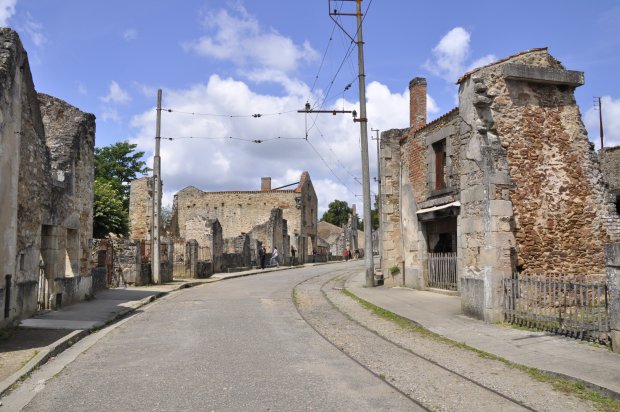
Op 10 juni 1944 vond in het dorpje Oradour-Sur-Glane in de regio Nouvelle-Aquitaine in het midden van Frankrijk een van de heftigste massamoorden uit de Franse geschiedenis plaats. Het was vermoedelijk een wraakactie van de Nazi’s. Er werden tijdens de massamoord maar liefst 642 mensen vermoord en hun huizen werden verbrand. Slechts een handjevol mensen wist te ontsnappen door voor dood te spelen of het bos in te vluchten. Na de Tweede Wereldoorlog werd een nieuw Oradour-sur-Glane gebouwd. De toenmalige Franse president Charles de Gaulle opperde om de huizen onbewoond te laten, als eerbetoon aan de slachtoffers van deze vreselijke gebeurtenis. Een plek dus die een dubbel gevoel oproept. Vanaf de stad Limoges ben je met de auto binnen twintig minuten in Oradour-Sur-Glane.
6. Schiet erop los bij de Killing Fields, Cambodja
Dit bericht bekijken op Instagram ?KillingFieldsPartOne•. possibly one of the most heart breaking places I’ve been to ?! #cambodia #killingfields #phnompenh #backpacking #southeastasia #femalesolotraveler #asianhistory #femaletravel #travelgram #roamingwomen #roamingrue #zimqueensnotsorry Een bericht gedeeld door R H Sinyoro (@squeezymilk) op 13 Nov 2019 om 10:20 (PST)
De Killing Fields; waarschijnlijk een van de meest hartverscheurende plekken in Cambodja. (Foto: Instagram)
Choeung Ek, waarschijnlijk beter bekend als de Killing Fields in Cambodja , is een agrarisch gebied vlak bij de Cambodjaanse hoofdstad Phnom Penh . Tussen 1975 en 1979 werden hier vermoedelijk twintigduizend mensen naartoe gebracht én vermoord door de Rode Khmer onder leiding van Pol Pot. Dit werd op lugubere wijze gedaan, om kogels te besparen werden mensen doodgeslagen door kindersoldaten. Deze kinderen werden vervolgens ook vermoord zodat ze geen informatie konden lekken. Een deel van de Killing Fields kun je bezoeken. Het is aan te raden samen met een gids te gaan, die jou op de hoogte kan brengen van alle belangrijke details. De meeste toeristen zullen hier komen om te leren over deze verschrikkelijke gebeurtenissen. Maar er is ook nog een tweede optie: op speciale shooting ranges nabij de Killing Fields kun je als toerist ‘stoom afblazen.’ Je kunt een raketwerper of AK-47 huren en vervolgens op een koe of kip schieten. Wij zijn geen fan …
7. Maak een boswandeling in duister Aokigahara, Japan
Dit bericht bekijken op Instagram Aokigahara es un bosque del monte Fuji, Japón, que cuenta con historias de fantasmas que acechan a los visitantes. Es uno de los lugares con la tasa de suicidio más alta del mundo. En su camino hay cintas de color que dejan los visitantes, para que puedan identificar el camino si se arrepienten de su decisión, porque las brújulas, GPS y celulares no funcionan en el bosque, haciendo que sea muy fácil perderse. #DiscoveryFacts #Destinos #Japon #Aokigahara Een bericht gedeeld door Discovery Channel (@tudiscovery) op 2 Okt 2019 om 12:00 (PDT)
In het mooie maar lugubere Aokigahara-bos is de begroeiing erg dicht. (Foto: Instagram)
Het Aokigahara-bos ligt op twee uur rijden van de Japanse hoofdstad Tokio . Aokigahara wordt ook wel het ‘zelfmoordbos’ genoemd, omdat dit de ‘populairste’ plek is om zelfmoord te plegen. Het bos is ongeveer 35 vierkante kilometer groot en de bomen staan dicht op elkaar, wat het bos een beklemmend karakter geeft. Tevens is de grond heel rotsachtig, waardoor er geen duidelijke wandelpaden zijn en je makkelijk kunt verdwalen. Zelfmoord is in Japan een groot maatschappelijk probleem en komt vaak voor. Oorzaken die worden genoemd zijn de individuele cultuur en hoge prestatiedruk op het werk. Het bos is populair geworden door verschillende boeken waarin uitgebreid wordt beschreven hoe je het beste zelfmoord kunt plegen. Het komt regelmatig voor dat ramptoeristen naar het bos gaan om lijken te zoeken. Een voorbeeld hiervan is de Amerikaanse YouTuber Logan Paul die eind 2017 een video uploadde waarin hij het lijk van een man filmde en hier grappen over maakte. Ook dit zou je een vorm van dark tourism kunnen noemen.
8. Maak een nucleaire tour in Tsjernobyl, Oekraïne

De term dark tourism lijkt afkomstig van de Netflix-serie the Dark Tourist . De term bestaat echter al jaren en is ontstaan in 1980 onder de term 'thanatourism', en daarna verder ontwikkeld onder andere noemers, waaronder dark tourism . Het is niet alleen een term, maar ook een academisch onderzoeksveld. Hieronder bekijk je de trailer van de Netflix-serie the Dark Tourist:
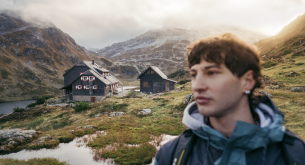
Travel tips & tricks
Ervaar het Lebensgefühl in Oostenrijk met deze 13 tips

Bergen, gletsjers en alpenweiden: de Oostenrijkse natuur is voor levensgenieters

(Alpen)cultuur voor levensgenieters: ontdek de culturele hotspots van Oostenrijk

Gezinsactiviteiten in Oostenrijk met de hele familie

Wellness in Oostenrijk: puur ontspannen voor levensgenieters

De mooiste fietstochten door Oostenrijk voor levensgenieters
Ga naar hoofdinhoud
Luister Live
Programma's
Alles begint bij luisteren
ontbreekwoordenboek
Radio 1 Sessies
album van de week
classic album van de week
De Wereld van Sofie
Dark tourism: waarom reizen we naar plekken waar rampen of gruwelijkheden plaatsvonden?
ma 21 sep. - 7:37

Wat is ramptoerisme?
Dat is een heel breed concept , zegt toerismegeograaf Arie Stoffelen (Rijksuniversiteit Groningen) in 'De Wereld van Sofie'. Aan de ene kant staan we elkaar te verdringen als de politie de straat afzet na een schietpartij. Da’s ramptoerisme op microniveau. Kijkfiles vallen daar ook onder. Aan de andere kant heb je ‘echt’ ramptoerisme. Dan gaan mensen op vakantie naar plekken waar rampen of gruwelijkheden hebben plaatsgevonden. Zoals Ground Zero in NY, Auschwitz, The Killing Fields in Cambodja, Chernobyl. Ramptoerisme wordt ook wel ‘dark tourism’ genoemd. Omdat het meestal bestemmingen zijn waar ‘donkere’ gebeurtenissen hebben plaatsgevonden.
Waarom trekken plaatsen waar rampen of gruwelijke dingen gebeurd zijn ons zo aan?
We zijn gefascineerd door de dood. We zijn er tegelijk bang van en er door gefascineerd. Er zijn verschillende soorten ramptoeristen. Veel mensen bezoeken Auschwitz om er iets van te leren. Het komt zo veel meer binnen dan als je er over leest of naar een documentaire kijkt. Maar iemand kan Auschwitz ook gewoon op zijn bucketlist hebben staan. Er geweest zijn, is al meer dan genoeg. Dark tourism als bucketlist toerisme heet dat dan. Er kan ook een persoonlijke drijfveer achter zitten. Een Brit bijvoorbeeld die de plek bezoekt waar zijn overgrootvader sneuvelde in de Westhoek. Een reis naar Chernobyl is erg populair dankzij de gelijknamige HBO serie. Chernobyl heeft verschillende lagen. Het gunt je een blik achter het vroegere Ijzeren Gordijn. Die donkere betonnen centrale. Met daar bovenop de verrassing dat de natuur weer de overhand neemt.
Is dark tourism een recent fenomeen?
Nee, al bij de Romeinen kwam men van heinde en verre kijken naar de gladiatorenspelen. Of denk aan publieke terechtstellingen doorheen de geschiedenis. Naar de Westhoek kwam er meteen na WOI ook al ramptoerisme op gang. Dark tourism staat wel meer in de spotlights de laatste jaren. Dat heeft verschillende oorzaken. Het toerisme in het algemeen is de voorbije jaren exponentieel gegroeid. Van 1 miljard toeristische bewegingen 7 jaar geleden naar anderhalf miljard vorig jaar. Er wordt voortdurend naar nieuw aanbod gezocht. Meer hypergespecialiseerd aanbod. Mensen willen nieuwe dingen, bijzondere ervaringen. En dan is dark tourism een gat in de markt.
Groeit onze interesse voor ramp-en gruwelplekken ook omdat we meer rampen en terreur zien in het nieuws?
Ja, er blijft die fascinatie voor de dood. De wereld is heel complex, er is veel onzekerheid en onduidelijkheid, we willen snappen wat er rondom ons gebeurd. We willen terreur als 9/11 snappen, daarom trekken we naar Ground Zero.
Waar ligt de grens van het aanvaardbare van dark tourism?
Reisbureau’s zien er natuurlijk brood in. Ground Zero heeft ook een politieke component. Het is een instrument van de overheid om het nationaal bewustzijn op te poetsen. Auschwitz is heel bewust in de markt gezet om er voor te zorgen dat we de Holocaust nooit vergeten. Maar het vermarkten van een plek als Ground Zero kan stuitend zijn voor mensen die er een dierbare verloren. Het is heel lastig om de juiste balans te vinden tussen ‘zinvol en sensatie’. Kan je er iets van leren, wat is de invloed op de samenleving? Op de lokale bevolking? Het kan snel omslaan naar sensatie. In Amsterdam kan je een ‘liquidatietour’ boeken. Een tour langs locaties waar onderwereldfiguren zijn omgelegd. Dat kan je sensatie noemen maar dat is niet persé slecht zolang je er niemand schade mee berokkent. Maar als de grenzen van het morele worden overschreden, als het als beledigend wordt ervaren, dan is er een probleem.
Blijf op de hoogte
Ontdek de beste podcasttips, beluister het meest recente nieuws en doe mee aan exclusieve acties.
Volg ons op
Schrijf je in voor onze nieuwsbrief.
Schrijf je in
Gebruiksvoorwaarden
Heb je een vraag?
Wedstrijdreglement
2024 - Radio 1
Bezoek de VRT
Responsible Disclosure Policy
- Search Menu
- Browse content in Arts and Humanities
- Browse content in Archaeology
- Anglo-Saxon and Medieval Archaeology
- Archaeological Methodology and Techniques
- Archaeology by Region
- Archaeology of Religion
- Archaeology of Trade and Exchange
- Biblical Archaeology
- Contemporary and Public Archaeology
- Environmental Archaeology
- Historical Archaeology
- History and Theory of Archaeology
- Industrial Archaeology
- Landscape Archaeology
- Mortuary Archaeology
- Prehistoric Archaeology
- Underwater Archaeology
- Urban Archaeology
- Zooarchaeology
- Browse content in Architecture
- Architectural Structure and Design
- History of Architecture
- Residential and Domestic Buildings
- Theory of Architecture
- Browse content in Art
- Art Subjects and Themes
- History of Art
- Industrial and Commercial Art
- Theory of Art
- Biographical Studies
- Byzantine Studies
- Browse content in Classical Studies
- Classical Literature
- Classical Reception
- Classical History
- Classical Philosophy
- Classical Mythology
- Classical Art and Architecture
- Classical Oratory and Rhetoric
- Greek and Roman Papyrology
- Greek and Roman Archaeology
- Greek and Roman Epigraphy
- Greek and Roman Law
- Late Antiquity
- Religion in the Ancient World
- Digital Humanities
- Browse content in History
- Colonialism and Imperialism
- Diplomatic History
- Environmental History
- Genealogy, Heraldry, Names, and Honours
- Genocide and Ethnic Cleansing
- Historical Geography
- History by Period
- History of Emotions
- History of Agriculture
- History of Education
- History of Gender and Sexuality
- Industrial History
- Intellectual History
- International History
- Labour History
- Legal and Constitutional History
- Local and Family History
- Maritime History
- Military History
- National Liberation and Post-Colonialism
- Oral History
- Political History
- Public History
- Regional and National History
- Revolutions and Rebellions
- Slavery and Abolition of Slavery
- Social and Cultural History
- Theory, Methods, and Historiography
- Urban History
- World History
- Browse content in Language Teaching and Learning
- Language Learning (Specific Skills)
- Language Teaching Theory and Methods
- Browse content in Linguistics
- Applied Linguistics
- Cognitive Linguistics
- Computational Linguistics
- Forensic Linguistics
- Grammar, Syntax and Morphology
- Historical and Diachronic Linguistics
- History of English
- Language Evolution
- Language Reference
- Language Variation
- Language Families
- Language Acquisition
- Lexicography
- Linguistic Anthropology
- Linguistic Theories
- Linguistic Typology
- Phonetics and Phonology
- Psycholinguistics
- Sociolinguistics
- Translation and Interpretation
- Writing Systems
- Browse content in Literature
- Bibliography
- Children's Literature Studies
- Literary Studies (Romanticism)
- Literary Studies (American)
- Literary Studies (Modernism)
- Literary Studies (Asian)
- Literary Studies (European)
- Literary Studies (Eco-criticism)
- Literary Studies - World
- Literary Studies (1500 to 1800)
- Literary Studies (19th Century)
- Literary Studies (20th Century onwards)
- Literary Studies (African American Literature)
- Literary Studies (British and Irish)
- Literary Studies (Early and Medieval)
- Literary Studies (Fiction, Novelists, and Prose Writers)
- Literary Studies (Gender Studies)
- Literary Studies (Graphic Novels)
- Literary Studies (History of the Book)
- Literary Studies (Plays and Playwrights)
- Literary Studies (Poetry and Poets)
- Literary Studies (Postcolonial Literature)
- Literary Studies (Queer Studies)
- Literary Studies (Science Fiction)
- Literary Studies (Travel Literature)
- Literary Studies (War Literature)
- Literary Studies (Women's Writing)
- Literary Theory and Cultural Studies
- Mythology and Folklore
- Shakespeare Studies and Criticism
- Browse content in Media Studies
- Browse content in Music
- Applied Music
- Dance and Music
- Ethics in Music
- Ethnomusicology
- Gender and Sexuality in Music
- Medicine and Music
- Music Cultures
- Music and Media
- Music and Culture
- Music and Religion
- Music Education and Pedagogy
- Music Theory and Analysis
- Musical Scores, Lyrics, and Libretti
- Musical Structures, Styles, and Techniques
- Musicology and Music History
- Performance Practice and Studies
- Race and Ethnicity in Music
- Sound Studies
- Browse content in Performing Arts
- Browse content in Philosophy
- Aesthetics and Philosophy of Art
- Epistemology
- Feminist Philosophy
- History of Western Philosophy
- Metaphysics
- Moral Philosophy
- Non-Western Philosophy
- Philosophy of Language
- Philosophy of Mind
- Philosophy of Perception
- Philosophy of Action
- Philosophy of Law
- Philosophy of Religion
- Philosophy of Science
- Philosophy of Mathematics and Logic
- Practical Ethics
- Social and Political Philosophy
- Browse content in Religion
- Biblical Studies
- Christianity
- East Asian Religions
- History of Religion
- Judaism and Jewish Studies
- Qumran Studies
- Religion and Education
- Religion and Health
- Religion and Politics
- Religion and Science
- Religion and Law
- Religion and Art, Literature, and Music
- Religious Studies
- Browse content in Society and Culture
- Cookery, Food, and Drink
- Cultural Studies
- Customs and Traditions
- Ethical Issues and Debates
- Hobbies, Games, Arts and Crafts
- Lifestyle, Home, and Garden
- Natural world, Country Life, and Pets
- Popular Beliefs and Controversial Knowledge
- Sports and Outdoor Recreation
- Technology and Society
- Travel and Holiday
- Visual Culture
- Browse content in Law
- Arbitration
- Browse content in Company and Commercial Law
- Commercial Law
- Company Law
- Browse content in Comparative Law
- Systems of Law
- Competition Law
- Browse content in Constitutional and Administrative Law
- Government Powers
- Judicial Review
- Local Government Law
- Military and Defence Law
- Parliamentary and Legislative Practice
- Construction Law
- Contract Law
- Browse content in Criminal Law
- Criminal Procedure
- Criminal Evidence Law
- Sentencing and Punishment
- Employment and Labour Law
- Environment and Energy Law
- Browse content in Financial Law
- Banking Law
- Insolvency Law
- History of Law
- Human Rights and Immigration
- Intellectual Property Law
- Browse content in International Law
- Private International Law and Conflict of Laws
- Public International Law
- IT and Communications Law
- Jurisprudence and Philosophy of Law
- Law and Society
- Law and Politics
- Browse content in Legal System and Practice
- Courts and Procedure
- Legal Skills and Practice
- Primary Sources of Law
- Regulation of Legal Profession
- Medical and Healthcare Law
- Browse content in Policing
- Criminal Investigation and Detection
- Police and Security Services
- Police Procedure and Law
- Police Regional Planning
- Browse content in Property Law
- Personal Property Law
- Study and Revision
- Terrorism and National Security Law
- Browse content in Trusts Law
- Wills and Probate or Succession
- Browse content in Medicine and Health
- Browse content in Allied Health Professions
- Arts Therapies
- Clinical Science
- Dietetics and Nutrition
- Occupational Therapy
- Operating Department Practice
- Physiotherapy
- Radiography
- Speech and Language Therapy
- Browse content in Anaesthetics
- General Anaesthesia
- Neuroanaesthesia
- Clinical Neuroscience
- Browse content in Clinical Medicine
- Acute Medicine
- Cardiovascular Medicine
- Clinical Genetics
- Clinical Pharmacology and Therapeutics
- Dermatology
- Endocrinology and Diabetes
- Gastroenterology
- Genito-urinary Medicine
- Geriatric Medicine
- Infectious Diseases
- Medical Toxicology
- Medical Oncology
- Pain Medicine
- Palliative Medicine
- Rehabilitation Medicine
- Respiratory Medicine and Pulmonology
- Rheumatology
- Sleep Medicine
- Sports and Exercise Medicine
- Community Medical Services
- Critical Care
- Emergency Medicine
- Forensic Medicine
- Haematology
- History of Medicine
- Browse content in Medical Skills
- Clinical Skills
- Communication Skills
- Nursing Skills
- Surgical Skills
- Medical Ethics
- Browse content in Medical Dentistry
- Oral and Maxillofacial Surgery
- Paediatric Dentistry
- Restorative Dentistry and Orthodontics
- Surgical Dentistry
- Medical Statistics and Methodology
- Browse content in Neurology
- Clinical Neurophysiology
- Neuropathology
- Nursing Studies
- Browse content in Obstetrics and Gynaecology
- Gynaecology
- Occupational Medicine
- Ophthalmology
- Otolaryngology (ENT)
- Browse content in Paediatrics
- Neonatology
- Browse content in Pathology
- Chemical Pathology
- Clinical Cytogenetics and Molecular Genetics
- Histopathology
- Medical Microbiology and Virology
- Patient Education and Information
- Browse content in Pharmacology
- Psychopharmacology
- Browse content in Popular Health
- Caring for Others
- Complementary and Alternative Medicine
- Self-help and Personal Development
- Browse content in Preclinical Medicine
- Cell Biology
- Molecular Biology and Genetics
- Reproduction, Growth and Development
- Primary Care
- Professional Development in Medicine
- Browse content in Psychiatry
- Addiction Medicine
- Child and Adolescent Psychiatry
- Forensic Psychiatry
- Learning Disabilities
- Old Age Psychiatry
- Psychotherapy
- Browse content in Public Health and Epidemiology
- Epidemiology
- Public Health
- Browse content in Radiology
- Clinical Radiology
- Interventional Radiology
- Nuclear Medicine
- Radiation Oncology
- Reproductive Medicine
- Browse content in Surgery
- Cardiothoracic Surgery
- Gastro-intestinal and Colorectal Surgery
- General Surgery
- Neurosurgery
- Paediatric Surgery
- Peri-operative Care
- Plastic and Reconstructive Surgery
- Surgical Oncology
- Transplant Surgery
- Trauma and Orthopaedic Surgery
- Vascular Surgery
- Browse content in Science and Mathematics
- Browse content in Biological Sciences
- Aquatic Biology
- Biochemistry
- Bioinformatics and Computational Biology
- Developmental Biology
- Ecology and Conservation
- Evolutionary Biology
- Genetics and Genomics
- Microbiology
- Molecular and Cell Biology
- Natural History
- Plant Sciences and Forestry
- Research Methods in Life Sciences
- Structural Biology
- Systems Biology
- Zoology and Animal Sciences
- Browse content in Chemistry
- Analytical Chemistry
- Computational Chemistry
- Crystallography
- Environmental Chemistry
- Industrial Chemistry
- Inorganic Chemistry
- Materials Chemistry
- Medicinal Chemistry
- Mineralogy and Gems
- Organic Chemistry
- Physical Chemistry
- Polymer Chemistry
- Study and Communication Skills in Chemistry
- Theoretical Chemistry
- Browse content in Computer Science
- Artificial Intelligence
- Computer Architecture and Logic Design
- Game Studies
- Human-Computer Interaction
- Mathematical Theory of Computation
- Programming Languages
- Software Engineering
- Systems Analysis and Design
- Virtual Reality
- Browse content in Computing
- Business Applications
- Computer Games
- Computer Security
- Computer Networking and Communications
- Digital Lifestyle
- Graphical and Digital Media Applications
- Operating Systems
- Browse content in Earth Sciences and Geography
- Atmospheric Sciences
- Environmental Geography
- Geology and the Lithosphere
- Maps and Map-making
- Meteorology and Climatology
- Oceanography and Hydrology
- Palaeontology
- Physical Geography and Topography
- Regional Geography
- Soil Science
- Urban Geography
- Browse content in Engineering and Technology
- Agriculture and Farming
- Biological Engineering
- Civil Engineering, Surveying, and Building
- Electronics and Communications Engineering
- Energy Technology
- Engineering (General)
- Environmental Science, Engineering, and Technology
- History of Engineering and Technology
- Mechanical Engineering and Materials
- Technology of Industrial Chemistry
- Transport Technology and Trades
- Browse content in Environmental Science
- Applied Ecology (Environmental Science)
- Conservation of the Environment (Environmental Science)
- Environmental Sustainability
- Environmentalist Thought and Ideology (Environmental Science)
- Management of Land and Natural Resources (Environmental Science)
- Natural Disasters (Environmental Science)
- Nuclear Issues (Environmental Science)
- Pollution and Threats to the Environment (Environmental Science)
- Social Impact of Environmental Issues (Environmental Science)
- History of Science and Technology
- Browse content in Materials Science
- Ceramics and Glasses
- Composite Materials
- Metals, Alloying, and Corrosion
- Nanotechnology
- Browse content in Mathematics
- Applied Mathematics
- Biomathematics and Statistics
- History of Mathematics
- Mathematical Education
- Mathematical Finance
- Mathematical Analysis
- Numerical and Computational Mathematics
- Probability and Statistics
- Pure Mathematics
- Browse content in Neuroscience
- Cognition and Behavioural Neuroscience
- Development of the Nervous System
- Disorders of the Nervous System
- History of Neuroscience
- Invertebrate Neurobiology
- Molecular and Cellular Systems
- Neuroendocrinology and Autonomic Nervous System
- Neuroscientific Techniques
- Sensory and Motor Systems
- Browse content in Physics
- Astronomy and Astrophysics
- Atomic, Molecular, and Optical Physics
- Biological and Medical Physics
- Classical Mechanics
- Computational Physics
- Condensed Matter Physics
- Electromagnetism, Optics, and Acoustics
- History of Physics
- Mathematical and Statistical Physics
- Measurement Science
- Nuclear Physics
- Particles and Fields
- Plasma Physics
- Quantum Physics
- Relativity and Gravitation
- Semiconductor and Mesoscopic Physics
- Browse content in Psychology
- Affective Sciences
- Clinical Psychology
- Cognitive Psychology
- Cognitive Neuroscience
- Criminal and Forensic Psychology
- Developmental Psychology
- Educational Psychology
- Evolutionary Psychology
- Health Psychology
- History and Systems in Psychology
- Music Psychology
- Neuropsychology
- Organizational Psychology
- Psychological Assessment and Testing
- Psychology of Human-Technology Interaction
- Psychology Professional Development and Training
- Research Methods in Psychology
- Social Psychology
- Browse content in Social Sciences
- Browse content in Anthropology
- Anthropology of Religion
- Human Evolution
- Medical Anthropology
- Physical Anthropology
- Regional Anthropology
- Social and Cultural Anthropology
- Theory and Practice of Anthropology
- Browse content in Business and Management
- Business Ethics
- Business History
- Business Strategy
- Business and Technology
- Business and Government
- Business and the Environment
- Comparative Management
- Corporate Governance
- Corporate Social Responsibility
- Entrepreneurship
- Health Management
- Human Resource Management
- Industrial and Employment Relations
- Industry Studies
- Information and Communication Technologies
- International Business
- Knowledge Management
- Management and Management Techniques
- Operations Management
- Organizational Theory and Behaviour
- Pensions and Pension Management
- Public and Nonprofit Management
- Strategic Management
- Supply Chain Management
- Browse content in Criminology and Criminal Justice
- Criminal Justice
- Criminology
- Forms of Crime
- International and Comparative Criminology
- Youth Violence and Juvenile Justice
- Development Studies
- Browse content in Economics
- Agricultural, Environmental, and Natural Resource Economics
- Asian Economics
- Behavioural Finance
- Behavioural Economics and Neuroeconomics
- Econometrics and Mathematical Economics
- Economic History
- Economic Methodology
- Economic Systems
- Economic Development and Growth
- Financial Markets
- Financial Institutions and Services
- General Economics and Teaching
- Health, Education, and Welfare
- History of Economic Thought
- International Economics
- Labour and Demographic Economics
- Law and Economics
- Macroeconomics and Monetary Economics
- Microeconomics
- Public Economics
- Urban, Rural, and Regional Economics
- Welfare Economics
- Browse content in Education
- Adult Education and Continuous Learning
- Care and Counselling of Students
- Early Childhood and Elementary Education
- Educational Equipment and Technology
- Educational Strategies and Policy
- Higher and Further Education
- Organization and Management of Education
- Philosophy and Theory of Education
- Schools Studies
- Secondary Education
- Teaching of a Specific Subject
- Teaching of Specific Groups and Special Educational Needs
- Teaching Skills and Techniques
- Browse content in Environment
- Applied Ecology (Social Science)
- Climate Change
- Conservation of the Environment (Social Science)
- Environmentalist Thought and Ideology (Social Science)
- Natural Disasters (Environment)
- Social Impact of Environmental Issues (Social Science)
- Browse content in Human Geography
- Cultural Geography
- Economic Geography
- Political Geography
- Browse content in Interdisciplinary Studies
- Communication Studies
- Museums, Libraries, and Information Sciences
- Browse content in Politics
- African Politics
- Asian Politics
- Chinese Politics
- Comparative Politics
- Conflict Politics
- Elections and Electoral Studies
- Environmental Politics
- European Union
- Foreign Policy
- Gender and Politics
- Human Rights and Politics
- Indian Politics
- International Relations
- International Organization (Politics)
- International Political Economy
- Irish Politics
- Latin American Politics
- Middle Eastern Politics
- Political Behaviour
- Political Economy
- Political Institutions
- Political Theory
- Political Methodology
- Political Communication
- Political Philosophy
- Political Sociology
- Politics and Law
- Public Policy
- Public Administration
- Quantitative Political Methodology
- Regional Political Studies
- Russian Politics
- Security Studies
- State and Local Government
- UK Politics
- US Politics
- Browse content in Regional and Area Studies
- African Studies
- Asian Studies
- East Asian Studies
- Japanese Studies
- Latin American Studies
- Middle Eastern Studies
- Native American Studies
- Scottish Studies
- Browse content in Research and Information
- Research Methods
- Browse content in Social Work
- Addictions and Substance Misuse
- Adoption and Fostering
- Care of the Elderly
- Child and Adolescent Social Work
- Couple and Family Social Work
- Developmental and Physical Disabilities Social Work
- Direct Practice and Clinical Social Work
- Emergency Services
- Human Behaviour and the Social Environment
- International and Global Issues in Social Work
- Mental and Behavioural Health
- Social Justice and Human Rights
- Social Policy and Advocacy
- Social Work and Crime and Justice
- Social Work Macro Practice
- Social Work Practice Settings
- Social Work Research and Evidence-based Practice
- Welfare and Benefit Systems
- Browse content in Sociology
- Childhood Studies
- Community Development
- Comparative and Historical Sociology
- Economic Sociology
- Gender and Sexuality
- Gerontology and Ageing
- Health, Illness, and Medicine
- Marriage and the Family
- Migration Studies
- Occupations, Professions, and Work
- Organizations
- Population and Demography
- Race and Ethnicity
- Social Theory
- Social Movements and Social Change
- Social Research and Statistics
- Social Stratification, Inequality, and Mobility
- Sociology of Religion
- Sociology of Education
- Sport and Leisure
- Urban and Rural Studies
- Browse content in Warfare and Defence
- Defence Strategy, Planning, and Research
- Land Forces and Warfare
- Military Administration
- Military Life and Institutions
- Naval Forces and Warfare
- Other Warfare and Defence Issues
- Peace Studies and Conflict Resolution
- Weapons and Equipment

- < Previous chapter
- Next chapter >
Dark Tourism as History: Dark Tourism in History
MacAnally Professor of Tourism Behaviour and Travel History, University of Limerick
- Published: 19 December 2022
- Cite Icon Cite
- Permissions Icon Permissions
Dark tourism or, thanatourism, a term used as an encyclopaedic alternative (Jafari 1996, 578) 1 , only emerged as a collective area of named study in the last decade of the twentieth century. Both terms had their origins in the recognition of the long history and widespread occurrence of traveling encounters with different kinds of engineered and orchestrated remembrance of the dead. Many may have originally been an accidental or incidental by-product of travel, but increasingly they became deliberate goals of different kinds of pilgrimage, the most important being religious, but others being more secular (e.g. visiting the graves of writers, historic battlefields). In the eighteenth and nineteenth centuries these occasional, sepulchral encounters were increasingly transformed into purposeful, mass tourism practices, induced by new ideologies of an evolving, European modernity, among them: antiquarianism, Romanticism, the gothic and patriotic displays of national pageantry and imperial display. Dark tourism’s identifying activity, visitation to commemorative sites, inherently makes it a travel form likely to feature more frequently in debates around “the politics of remembrance,” an expanding multi-cultural domain about the continuing status of historical events and figures. The chapter finishes with an illustrative, case history exemplifying some of the main issues in remembrance and remembrancing, in the context of a recent addition to dark tourism repertoires—the visitation of flooded villages as industrial disaster sites.
Dark Tourism is a concept relatively new to the world of tourism studied by social scientists, and even more so in the “real world” of travel and tourism experienced by many millions of global travelers. Yet “dark” encounters are among the oldest of travel encounters, and ones that can be widely recognized in contemporary life once the ideas behind what may seem an odd linguistic conjunction (“dark” plus “tourism”) are recognized.
This chapter is in two parts and addresses two main, historical questions, one of which is academic; the other one of praxis . The first is about the origins of dark tourism as a named entity in the academic study of recreational choice. The second is about its main experiential features in historical travel patterns. The two parts are inextricably linked since academic discussion about what dark tourism is affects what past practices are recognized as its history, and even the extent to which it has a history. The inquiry appraises dark tourism’s defining forms, the similarities and dissimilarities within them, and their significance in social and societal terms.
The chapter ends with a case study of an environmental and community disaster, the flooding and submersion of a village, induced 150 years ago as collateral damage in industrial development that was to be widely repeated around the world later. It has emerged as a new kind of dark tourism attraction. Its trajectory from disaster site to visitor attraction marks a central theme in this chapter about the nature of dark tourism, as remembrance of fatality and mortality that is inherently susceptible to revision, as ways of remembering people, and to remember as events change in society. The case also demonstrates the impact of visual images, particularly photography and film, in effecting and affecting remembrance.
The Academic Discovery of Dark Tourism
Dark tourism first entered academic inquiry in 1996 in a collection of articles in a special issue of the International Journal of Heritage ( IJHS ), edited by John Lennon, and later in a book cowritten with Malcolm Foley. 2 The name suggested a striking paradox: that tourism, the recreational form often satirized as the “have-a-nice-day” industry, might not always be the pursuit of light, life, and happiness, but a taste for commercial encounters with death exemplified, for example, in visiting celebrity memorials, genocide sites, and war cemeteries. The notion was one that was to provoke modest, moral panic in the media about commercialization of death, 3 reminiscent of public anxieties about “resurrection men” who sold corpses—murdered or snatched from city graveyards—to medical institutions in the 1830s. 4 In fact, “resurrection men” would not fit Lennon and Foley’s vision of what dark tourism was. They argued that it was a postmodern eruption, “an interest in recent death, disaster and atrocity … in the late twentieth and early twenty-first centuries … a product of circumstances of the late modern world and a significant influence upon these circumstances.” 5 Though recognizing that earlier kinds of travel encounters with death might resemble dark tourism, they were excluded because there was no evidence of intentional visitation, and they had not happened “within living memory.” The view bore similarities to the hypothesis of postmodern “black spots” by the sociologist Chris Rojek for sites where traumatic events had taken place that were visited as touristic “escape attempts” from the world of everyday life. 6 There was the suggestion that the new tourism was suspect in consumer terms (“a fascination with assassination” was the title of one article on the Kennedy assassination), a commodification of death as spectacle for paying visitors. 7 Since all three hailed dark tourism as postmodern, it logically had no significant history. It was the unprecedented shape of things coming and to come. Research case studies in Lennon and Foley’s book Dark Tourism exemplified this neophiliac premise with the inclusion of four chapters on the Jewish Holocaust, and individual ones on the John F. Kennedy assassination, the war sites of the two world wars, and tourism developments in partitioned North Cyprus. An alternative approach to dark tourism appeared in the same issue of IJHS and a later one. 8 It treated the subject under a different name, thanatourism, defined as: “travel to a location wholly, or partially, motivated by the desire for actual or symbolic encounters with death, particularly, but not exclusively, violent death.” 9 This perspective extended the history of dark tourism and the travel experiences within it from a few major atrocity sites in the present to many more going back into the distant past. Thanatourism, it was argued, was not just travel to view atrocities and disasters that had “happened in living memory.” It derived from older, Judeo-Christian traditions of pilgrimage and thanatopsis, prescribing reflection on mortality to their followers. Such thoughts were induced and aided by devotional texts and artifacts which carried memento mori –messages to the living that one day they must die, and ars moriendi counseling on how to do it well. 10 Thanatourism could thus be seen as travel that brought death to the mind, and pilgrimage a way of paying homage to others who had gone before. “Thanatourism” was a more neutral term than “dark tourism” because it lessened the transgressive associations of the word “dark” in recognition that not all traveling encounters with death held sinister undertones. Though Holocaust and genocide memorials evoked unspeakable crimes, paying homage to fallen soldiers and visiting graves of poets and other revered groups and individuals did not. Moreover, the name thanatourism located it more explicitly as a subset of thanatology. 11 The paper offered a constitutive typology of five thanatouristic and dark tourism travel categories:
travel to witness public enactments of death, a form largely proscribed in modern Western societies, though once common in gladiatorial contests in ancient Rome, and in public executions in Britain until 1868;
travel to see the sites of multiple fatality (e.g. Holocaust sites, the battlefield of Waterloo, the town of Lockerbie, Scotland, where a Pan-Am jet was brought down by a terrorist bomb in 1988), and sites of individual deaths ranging from roadside memorials for accident victims, to “blue plaque” domestic sites where cultural celebrities had died;
travel to internment sites and memorials to the dead in graveyards, catacombs, and war cemeteries;
travel to view material evidence or symbolic representations of death, in locations unconnected with their occurrence including, police and military museums, and many kinds of exhibition, including the “Chamber of Horrors” in Madame Tussaud’s which displayed artifacts of murder (weapons, victims’ clothing) alongside wax effigies of the serial killers responsible; and
travel for reenactments of historic carnage, particularly battlefield simulations, staged by members of societies dedicated to particular wars, e.g., Civil War Societies in Britain and America, and Napoleonic battle societies in Europe.
A Historiography of Dark Tourism
Whatever the differences in periodizing and characterizing it, the notion of tourism as “dark” acted as a “refresh” button for researchers who had previously never made a link between the two. For students it was, and has remained, a popular option for undergraduate and postgraduate studies in leisure and tourism. Whether called “dark tourism” or “thanatourism,” the effect was to detonate a developing literature of journal articles, book chapters and conference papers over the next two decades, as well as journalistic attention. 12
The first decade (1996 to 2005) was dominated by ad hoc case studies of individual sites and events that fell into three of the five, dark tourism categories: travel to death sites; travel to internment sites; and travel to view exhibited evidence and symbolic representations. Research subjects included Holocaust sites, 13 historic battlefields, 14 slavery sites in the United Kingdom and the United States, 15 criminal museums and prisons, 16 cemeteries as visitor attractions, 17 and celebrity death sites. 18
The first phase of dark tourism research also included alternative conceptual typologies to the five-attribute category initially proposed. The late Graham Dann produced a site typology of four alliterative thanatourism categories: “houses of horror, “fields of fatality,” “tours of torment,” and “themed thanatos.” Within each were subsumed eleven constitutive subcategories, also alliteratively named (“Morbid museums,” “the Hell of Holocaust,” “Cemeteries for Celebrities,” etc.), followed by a discussion of eight motivations that included “fear of phantoms,” “chasing change,” and “yearning for yesteryear.” 19 Other typologies included those of Richard Sharpley and Philip R. Stone, 20 who adapted a spectrum model of dark tourism, as originally suggested by Tony Seaton, 21 but using different and more numerous criteria for grading sites and experiences that scored them on a darkest/lightest scale, a line of development later pursued by Rachael Raine. 22
Case study work also included investigations into key questions of motivation for dark travel, and that of whether dark tourists were an identifiable segment whose behavior varied sui generis from that of other kinds of tourist (e.g. cultural tourists, golf tourists etc.), or whether the notion of dark tourism was a concept that concealed several kinds of distinctive behavior, each with its own clients and motivations (e.g., Holocaust visitors, battlefield walkers, churchyard, and graveyard visitors). One attempt to identify an overarching motivation behind all dark tourism was the sequestration thesis, first put by Geoffrey Gorer in 1964, 23 revisited briefly by Seaton, 24 and more extensively by Stone. 25 The thesis proposed that death was a taboo subject, suppressed or, in Stone’s terms, made “absent” in modern living, thus depriving people of opportunities for thanatopsis which had been normal in the past. Dark tourism, it was claimed, restored mediated links between the living and the dead, by allowing tourists an existential space to reflect, through gazing on the death sites of “significant others,” on their own mortality. Problems with the thesis later focused on the meaning of “sequestration” and “death … made absent,” since the notion was capable of three different meanings and interpretations: the silencing of thanatopsis (i.e., social suppression of reflection and discussion of death); the exclusion of cultural representations of death (e.g., in art, literature, and the mass media); and the ways in which modern funerary practices removed custody of the body from home and family, and consigned its storage, treatment, and disposal to industry professionals. Gorer had most in mind the latter effect, one which dark tourism could hardly address since, unlike bodysnatching, 26 it was never an intervention in the physical treatment and disposal of bodies by the funeral industry or anyone else. There were also problems with accepting assertions that modern society sequesters or makes “absent” representations of death, given the volume of coverage of war, violence, and murder which routinely colonize media news and entertainment, in print, broadcasting, and increasingly in the privately supplied and leaked photo exposures of social media. It is only if “absence” is treated as the normative silencing of reflection and discussion of death in society, that dark tourism could appear as a restorative experience, precipitating discussions of mortality which would not otherwise take place. Stone, in his work on responses to a body parts exhibition mounted internationally by Gunter Von Hagen, found it did provoke some ontological discussions of life and death among visitors. 27 Similarly, an exhibition of skeletons from different periods, recovered during building excavations in London, generated involvement and reflections on death among secondary school children, when exhibited at the Welcome Library in the capital in 2008. They were, however, primarily in response to questions asked in a self-completion survey administered as part of the visit. 28
No common, general motivation emerged from any of the many, separate surveys of specific “dark” activities. Indeed, some research respondents, when asked, denied interest in, “encounters with death” as a reason for visits, and named different ones, including, interests in history, heritage, education, and, for Australian and New Zealand tourists traveling to Gallipoli, national pride in viewing the site of Anzac, military coming-of-age during World War I. 29 Except in the case of Holocaust visits and battlefield tours, dark encounters were not always discrete, premeditated choices, but made as part of a multistop, package tour schedules. Thus, after a decade or more, research was no nearer to isolating generic motivations for dark travel, or producing a plausible profile of those who could be definitively hailed as, “the real Dark Tourists revealed.” 30 Dark tourism, it seemed, could not be segmentally profiled like other kinds of niche tourism. Moreover, some suppliers of dark tourism, including battlefield tour operators and cemetery managers, did not accept that the business they were in should be characterized as “dark.” Dark tourism thus appeared to be a transaction involving two groups of missing persons: the consumers and the suppliers. This was a problem that had never existed historically when dark encounters were incidental, and had yet to be viewed and named as a transactional market between consumers and suppliers.
Another problem in dark tourism’s discursive evolution was one from within its own academic ranks. This was about its “theoretical fragility,” a phrase that briefly became something of a mantra. 31 Was it anything but a magpie, a hybrid of ideas derived from other disciplinary areas and applied to an endless case of samples? Questions of disciplinary coherence and overlap were most directed at dark tourism’s relations to heritage studies, and its subaltern forms, “dissonant heritage” and “contested heritage,” first explored by John E. Tunbridge and Gregory J. Ashworth. 32 Tazim Jamal and Linda Lelo commented on its crossover features; “a dark tourist,” they noted, might equally be called a “heritage tourist” or a “secular pilgrim.” 33 Duncan Light appraised dark tourism’s relationship with heritage, calling it a “troubled” field. 34 A year later, a reference text, the Handbook of Dark Tourism Studies made explicit the links between the two in an edited section called, “Tourism and Heritage Landscapes” with coverage of atrocity sites, memorial sites, battlefields, and museums as common areas of interest. 35 In the same year, Glenn Hooper explored the dark tourism/heritage interface in an edited collection of international cases with an introductory chapter by heritage veterans Tunbridge and Ashworth. 36
There was no resolution to these internal debates. In retrospect they look like “turf wars” among academics arguing over disciplinary ownership and proprietary rights to comment on issues raised in dark tourism debate. The most pertinent observation, perhaps, about its existence as a distinct and legitimate field of inquiry was that within a decade work in the new field problematized issues and generated inquiries about the relationship between tourism, travel, and death that had never previously been recognized or addressed in any discipline.
And it went on doing so. Work in dark tourism expanded in the second decade of the twenty-first century in conferences, journals, and books which included four edited collections. 37 The subject also expanded in undergraduate and postgraduate programs internationally. Holocaust studies, the best funded in research terms, dominated the field in number of outputs in disciplinary publications. Other disasters and atrocities appeared in research agendas: the Chernobyl nuclear accident, 38 Rwanda genocide, 39 and Dallen Timothy produced a wide-ranging overview of dark tourism in the USA. 40 The novelty of its name and the focus on modern, mega-instances implicitly made dark tourism seem an ultracontemporary phenomenon; it is difficult to open any guidebook or travel memoir of the last two centuries that does not include the “dark” practices of grave visiting, memorial trips, battlefield tourism, and so forth.
Dark Tourism and the Politics of Remembrance
In the new millennium a number of geopolitical events and trends began to affect the status of dark tourism. The events included continuing conflicts following the break-up of Eastern Europe, particularly in the Crimea and the Ukraine; conflicts and instability in the Middle East; a second, Western invasion of Iraq; the aftermath of the “9/11 attacks” in America and the growth of world terrorism; and unprecedented movements of people as political refugees and economic migrants. The decade also coincided with several historical anniversaries: the start and finish of World War I and II and specific phases within them (the Battle of Britain, Stalingrad, Pearl Harbor, D-Day landings, etc.); the Russian Revolutions of 1905 and 1917 ; and the 1916 uprising in Ireland. All of them were issues that came with historical baggage that stirred up feelings about the past, and triggered public debate, among groups inside and outside the countries involved, on what past events had been and how they should be commemorated, if at all. Conflicting versions of historical blame and praise multiplied and, owing to the growth of social media, minority views gained currency that might have gone unheard in predigital times.
The results were rising protests against narratives that were once unchallenged, and direct action at sites where they were commemorated. Monuments, statues, and memorials were vandalized or removed. In Iraq the pulling down of Saddam Hussein’s statue was orchestrated and filmed for international TV news to valorize the triumphant closure of a Western invasion that later created anarchy. Statues of former communist leaders were removed from public spaces in ex-Soviet bloc countries, but provoked protests in Lithuania, when bought by an entrepreneur to exhibit as theme park attractions. At Corpus Christi College, Oxford, students demanded the removal of a statue commemorating Cecil Rhodes, which for nearly a century had celebrated a British imperialist whose legacies funded scholarships at Oxford. In 2019 a Sino-Western war of words broke out at the removal and standardization of Muslim graves in Uyghur cemeteries in Xinjiang Province of China, criticized by Western observers as cultural erasure, and even genocide of a religious minority, which had inhabited the area for centuries.
In academia historians and social scientists had, for a decade, become increasingly interested in forms of ethnic, national, and sectional narratives of the past. The 1990s saw a spate of book-length studies on remembrance and the writing of history, 41 including a Companion to Historiography of almost 1,000 pages. 42 In the social sciences there was exponential growth, following Edward Said’s work on “Orientalism,” of postcolonial studies into the ways Western cultures had historically represented non-Western cultures as inferior, and not infrequently as transgressive kinds of “other.” 43 These developments, which have since become known issues in “the politics of identity and remembrance,” had direct implications for those working in heritage and dark tourism. Heritage discourse and management had previously been a rather genteel world where specialist curators in museums or galleries made aesthetic choices and professional judgments about what was installed and remembered. It increasingly became one fraught with political perils, which were increasingly discussed. 44 Remembrance had traditionally been a semisacred concept, meaning a state of private reflection on loss and bereavement; or, as metonymy for memorials and rituals commemorating national tragedies, as in, “Ceremonies of Remembrance” and “Gardens of Remembrance.” In the 2000s remembrance became a more contentious notion, weaponized by critics for interrogating the legitimacy of some commemorative displays, and the power structures authorizing them.
For dark tourism the questions provoked were fundamental. The protests and direct action at sites of remembrance called into question what dark tourism was or, to borrow Wittgenstein’s interrogative phrase, what “state of affairs” it represented; 45 and particularly whether it was about encounters with death. None of the protests at commemorative sites were encounters with death—which has and always will be an unknown abstraction—but physical tilts directed at physical installations: headstones, statues, monuments, memorial tablets, and ritual ceremonies. Was this not also true of dark tourism encounters? The praxis in dark tourism had, it transpired, never been encounters with death but with visits to sites created or marked as remembrance. Bringing it more in line with what was the real “state of affairs” surely meant abandoning “death” as the focal encounter, and accommodating material remembrance as the experiential goal. A revised definition, aimed to reflect these realities, was proposed that frames dark tourism as “encounters with the engineering and orchestration of remembrance of mortality or fatality” (where mortality was death from natural causes, while fatality was premature decease, in violent, nefarious, or spectacular circumstances). 46 The revised focus revealed a number of “states of affairs” that had not previously been obvious. There were four principal ones: First, that it is the living , not the dead , who have both the first and the last word in remembrance in the control they exert over the engineered choice, siting and orchestration of commemorative measures; and second, they also retain the power to change the nature of remembrance in the future. This power may be limited for family memorials with restricted audiences which are typically extant for only a few generations. Where commemoration is targeted at mass audiences for longer, indefinite periods by national bodies and great public or private corporations, it becomes significant social engineering. In democracies this is likely to involve the active or passive consent of several, or many, stakeholders likely to be exposed to, or affected by, what commemoration is being engineered, and how the orchestration is accomplished. Engineers of public remembrance may thus be called to account before, during, and after commemorative measures are put in place. Third, that the remembrance perspective affects the way the history of dark tourism is viewed. It makes it difficult to imagine it as a latter-day innovation concerned only with atrocity and disasters in modern times. It makes it coeval with the history of human communities on earth, since most known societies have engineered and orchestrated remembrance of the dead in big and small ways. The Assyrians, Egyptians, Persians, Greeks, and Romans all erected public monuments and left inscriptions for remembering and honoring religious figures, and inculcating homage to emperors, kings, and other potentates. They were installed in public places for exposure to local and regional populations as they went about their business and, to a lesser extent, to impress foreign visitors. Many people would have had encounters with them, but they would have mainly been incidental and unplanned, except in special circumstances where the memorial itself became the message, rather than the subject it celebrated, and attracted curious visitors in its own right. This was the case, according to enduring myth, with the Seven Wonders of the World. 47 Fourth, crucially, in academic terms, conceptualizing dark tourism as travel encounters with engineered remembrance, makes it a quintessential study area in the wider study of the “politics of remembrance.”
Dark Tourism as Praxis in History
Dark tourism, as travel tastes for visiting sites and spaces commemorating different kinds and intensities of mortality and fatality, only grew to be a generic tourism preoccupation in Britain and Europe in the late-eighteenth century and early nineteenth centuries. Before that for around 200 years, the dominant tourism form had been the Grand Tour, which accorded no particular importance to representations of death sui generis (see Verhoeven , this volume). 48 It was a European ritual tour, routed mainly through France, Switzerland, Germany, and Holland for young aristocrats and the gentry. Lasting up to three years, its manifest purpose was as a crash course in classical antiquity, Christian history, and art viewed in galleries, churches, cathedrals and other public buildings. It was also often a form of social bonding and hedonistic indulgence among European elites ( Seaton 2019 ) 49
Representations of mortality and fatality were, in fact, abundant among Christian paintings, sculptures, and buildings viewed by Grand Tourists, but were viewed primarily as religious and artistic exhibits, rather than with any of the cultural relativism that underpins inspection through the prism of the “politics of remembrance.” The default stance of grand tourists was to regard their own cultural assumptions, religious and nationalistic, as normative and universalistic ones. The only sepulchral encounters they had with sites that were coded with less prescriptive cultural meanings were campo santo sites in Rome, Naples, and Pisa, which were mass burial sites for the poor, and ossuaries where the bones of the dead were displayed in catacomb as curiosities rather than homilies. 50 In Rome even catacombs could be viewed as religious shrines rather than macabre spectacles, since they had been early Christian meeting places, and some of their walls bore graffiti that could pass as sacred art. By contrast, dark tourism, as a widespread travel preoccupation with representations of death, was a product of changing material and ideological factors at work in the late-eighteenth and early-nineteenth centuries. Some involved reinvention and repurposing. Some were new.
Pilgrimage Renewed and Reinvented
Pilgrimage had been a long-standing tradition in Christendom of visiting sites at home and abroad associated with sacred figures (see Craig , this volume). Abroad meant Palestine, Jerusalem and the Holy Land, and for Catholics, it included Rome. There was also a network of British shrines to lesser Christian saints and martyrs, the most important being that of Thomas Becket (1120–1170) at Canterbury. During the Reformation, Protestant countries abolished pilgrimage as a Catholic superstition that was denounced by religious leaders and humanists, the most notable being Erasmus. It made a “dark” comeback in several ways. The first was during and after the Napoleonic Wars, when English visitors to France began to make excursions to Catholic churches and monasteries—previously seen as the devil’s abodes—to witness the mob destruction or vandalism of ecclesiastical property during the French Revolution. The prime site was Saint Denis, the Cathedral where French kings and queens had been buried. There artifacts and monuments, torn from churches and monasteries were put on display for visitors as a makeshift “museum.” The result appalled English tourists so that after nearly 300 years of demonization, Catholic clergy came to be seen as Christian comrades-in-arms, and victims of an anti-Christ who was no longer the Pope, but Napoleon. My enemy’s enemy had become my friend. Thomas Cook and Son revived pilgrimage to pre-Reformation destinations with tours to Rome, the Vatican, Palestine, and the Holy Land (see Barton , this volume). 51
In addition to these revivals, a new kind of secular pilgrimage grew up during the nineteenth century to places commemorating celebrities of nation and empire. In Britain the graves, memorial monuments and death sites of literary and artistic figures, particularly poets, 52 became shrines that coexisted alongside those for more official figures. In Westminster Abbey and St Paul’s, poets and novelists shared monuments and memorials with royal and ecclesiastical notables. Elsewhere in Britain, the last whereabouts and resting places of celebrities formed a growing dark tourism circuit which were widely publicized in travel memoirs, illustrated guidebooks, and magazine features by writers, some of whom specialized as paparazzi of the posthumous. One was William Howitt whose “Homes and Haunts of the British Poets” comprised essays on the geographical origins and deaths of thirty-six writers. 53 A dozen editions were sold over the next sixty years. He had previously published another much-reprinted book of dark tours in the North that included: celebrity memorials and burial places (St. Bede and Thomas Bewick, the celebrated wood engraver), battlefields (Culloden and Flodden), mining disasters, murders, executions, and apparitions. 54 A work that drew more explicit analogies between “pilgrimage” and dark tourism was by Mrs. Samuel Carter Hall, wife of the editor of the Art Journal who in 1850 published “Pilgrimages to English Shrines.” It was successful enough for her to bring out a sequel two years later which included an authorial aside, hinting at the pleasurable schadenfreude that lurks in certain kinds of dark tourism encounter: “Pilgrimages! what is life but a pilgrimage over graves! The older we grow, the better we comprehend the force of this sad truth; life is indeed a ‘pilgrimage over graves;’ but how different are the ideas and emotions they suggest or excite.” 55 The two volumes included chapters on tombs, death sites and memorials to writers and artists, among them: Christopher Wren, Thomas Flaxman, Thomas Gray, and William Hogarth, with additional chapters on the execution of Lady Jane Grey, and the plague village of Eyam whose residents quarantined themselves to likely death in order not to spread the disease.
A related influence on dark tourism was antiquarianism. Like pilgrimage, this was nothing new. It was a legacy of the Renaissance revival of interest in classical antiquity among educated European elites in the sixteenth and seventeenth centuries, in part politically and patriotically generated by the growth of new nation-states and dynasties such as the Tudors, when rulers and ruled joined forces in discovering evidence of ancient, cultural traditions. This involved enthusiastic searches for written texts, artifacts, and sites of architectural and archaeological significance involving quests to libraries, burial grounds, ruins, and ancient ecclesiastical foundations where they pored over old documents, memorial tablets, tomb inscriptions, and other sepulchral survivals.
Antiquarians increased throughout the seventeenth century, leading to the foundation of the Society of Antiquaries in 1717–1718. 56 Its members were periodically satirized as eccentric old men, shut off from real life by their fixation with musty books, moldering remains, and fragments of broken artifacts. Nonetheless, the antiquarian mindset increased among educated travelers across Europe, particularly after the discovery of Pompeii and Herculaneum in the 1740s, where excavations captivated generations of tourists in Italy. 57 In Britain, antiquarianism became a gentlemanly hobby, often among clerics discovering local history in their parish travels. It resulted in the publication of substantial town and county histories, as well as briefer guidebook information for visitors to individual churches. Antiquarianism, in conjunction with archaeology, led to a desire for take-home mementos, which tempted visitors to chip off fragments from sites at home and abroad. 58
The Dark Appeals of Romanticism
More powerful than pilgrimage or antiquarianism in its impact on dark tourism was that of romanticism, a complex cultural phenomenon characterized as, “a heterogeneous mixture of philosophic, aesthetic, religious and emotional concepts.” 59 It colonized middle-class aesthetic tastes throughout the nineteenth century, providing escapes from the prosaic or oppressive realities of industrialization and urbanization at home, to the imagined worlds of other places and other times in literature, music, and art. Tourism gave physical reality to some of these longed-for romantic contrasts: in landscape tastes (picturesque scenery in Italy, the Lake District, and Wales); among traditional, rural populations (peasant communities in regional dress in Brittany and Scotland); through exposure to traditional myths and folklore in books with titles such as Legends of the Rhine and Border Ballads of Scotland; 60 in attending regional festivals of song and dance; and in brief retreats from the modernity of railway conveyance to retro-travel forms (jaunting-carts in Ireland, camel rides during Holy Land tours, and pony trekking through Iceland, a land with few roads and no railways). 61
Dark tourism offered two of the most powerful forms of escape into romantic otherness. The first was the world of the past and the second was vicarious experience of death, the most feared and mysterious of all “others.” The past was where the dead had lived and died, and there were special places where their presence lingered. Reflections on death, once devotional practices at home, became recreational trips further afield: in visiting celebrity memorials, battle fields, and in enjoying the more frivolous pleasures of ghost trains, haunted houses, and other fairground attractions.
These dark tastes and recreations were critically affected by sociological factors arising from population change and revolutionary developments in the production and consumption of printed words and images from the late-eighteenth century onwards. Printing moved from being a hand-powered craft that had hardly changed in the 300 years since Caxton, to a modern, machine production technology, capable of producing thousands, rather than hundreds, of copies per day of newspapers, magazines, and cheap books. Costs fell, allowing more people to buy them, and literacy grew. The result was an expanding audience for reading of all kinds. It was most potent among the middle classes, but it was also observable among sections of laboring populations where the growing take-up of cheap reading was satirized in the 1830s as the “March of Intellect.” 62 The net effect was that new ideas circulated more quickly than ever before. Without the printed word the concepts and activities, later recognized as romantic, including those that primed dark tourism, would never have taken hold.
Two key ideas that permeated the landscapes and dreamscapes of romanticism were the Gothic and sublime. The Gothic was an aesthetic categorization, variously applied in judgments of architecture, ecclesiastical decoration, and literature from c. 1740 and throughout the nineteenth century, that implicitly drew a binary contrast between the rule-governed styles of classical cultures and the more unruly, plenitude of vernacular ones. In architecture and art the Gothic Revival meant a crusading preference for indigenous Anglo-Saxon styles found, it was claimed, in medieval, Christian church buildings of England, France, and Germany, with their soaring heights, pointed arches, and abundant decorative effects, in opposition to the geometric restraint and laws of classical and Palladian styles from Greece and Italy. Its proponents included Augustus Pugin, John Ruskin, Walter Scott, and less well-known, but important opinion-formers in publishing and graphic reproduction. One was the prolific engraver, John Britton, who published many, finely illustrated viewbooks depicting Gothic buildings at home and abroad; and John Parker, the Oxford religious publisher who specialized in gothic ecclesiastical design. 63 All extended the province of dark tourism.
Of equal impact to dark tourism was Gothic literature, which first emerged in the mid-eighteenth century in the sepulchral travelogues of a literary group who became known as “graveyard” writers. Three of the most successful were Edward Young, with his poem “Night Thoughts” (1749); Robert Blair with his poem, “The Grave” (1743); and in 1746, James Hervey, with a prose work called “Meditations among the Tombs.” The themes they explored—the brevity of life, the inevitability of death, the need to reflect and prepare for eternity—were conventional, thanatoptic ones, common in memento mori and ars moriendi texts going back to the Middle Ages. The difference was that previously “the grave” had been symbolic shorthand for death; in the work of Young, Blair, and Hervey it was also physical location, described at length or imagined in visceral detail as a visitor attraction. Hervey’s book had been inspired by a tour of Cornwall when he had stopped off at a village church in Kilkhampton, Devon, to read epitaphs in the churchyard and memorial tablets within the church. None of these works, however, came close to the crowning achievement of graveyard travelogues by Thomas Gray with his Elegy Written in a Country Church Yard. 64 Published in the 1750, it remains the best-known poem of the eighteenth century and one which has given country churchyards an iconic place in English culture and dark tourism. 65 The precincts of Stoke Poges Church in Buckinghamshire, which is believed to have inspired it, has a large, stone memorial to Gray and his work, and his grave is close to the church entrance. All four works were forerunners of what has been described as, “the therapeutically melancholic side of Romanticism.” 66 William Blake, the most Gothic of all English artists, later illustrated editions of all three works, and William Wordsworth took time off from poetry for writing prose essays on epitaphs and memorials. 67
An even more influential form than graveyard travelogues in dark tourism creation was the Gothic novel. It was a genre of horror and sensation that has been called “literary terrorism,” which was first introduced in Horace Walpole’s The Castle of Otranto (1764) and followed by Anna Radcliffe’s The Mysteries of Udolpho (1794) , and then by a torrent of works that were to fill a bibliography by Montague Summers that was over five hundred pages long. 68 Their plots were characteristically set abroad in Catholic countries, especially Italy, where superstition and transgression reigned in castles, monasteries, and haunted houses, freely equipped with locked rooms, secret cabinets, dungeons, and supernatural apparitions. The villains were evil monks, depraved noblemen and wicked guardians, who preyed on innocent orphans and helpless women relatives. Gothic novels enjoyed a runaway success between 1760 and the 1830s, particularly among women readers, a trend satirized in Jane Austen’s novel, Northanger Abbey published in 1818. It then declined, but morphed into mystery novels with more domestic, contemporary settings by Sheridan Le Fanu, Edgar Alan Poe, and Wilkie Collins. The Gothic played an important part in influencing the perceptions of place that tourists took with them on their travels at home and abroad. It can be found in the attraction of visiting ancient castles, ruined monasteries, haunted houses, and locations with pronounced—which means “promoted”—atmospherics of gloom, decay, and the uncanny. 69 Historians too affected Gothic travel perceptions in offering a Lapsarian view of the world which emphasized the destructive effects of time and change on places and people. In England Edward Gibbon’s work, The Decline and Fall of the Roman Empire (1776–1787), became a bestselling sensation. Inspiration for it came when he wandered as a tourist among the ruins of ancient Rome, and then spent more than ten years writing a six-volume work trying to account for how they were all that was left of an empire that had ruled Europe for 600 years. In France, almost coincidentally, Constantin Volney published The Ruins of Empire , 70 a philosophical work which also made the ravages of time, change, and death an underlying leitmotif. Both works were translated and inculcated a mindset among educated, European tourists who made it de rigeur to view landscapes that evoked melancholic reflections on death and oblivion, while enjoying the pleasant, recreational Schadenfreude of knowing that they had not yet become victims, and would soon be returning safe from their excursions to hotel or pensione for a well-earned meal. The poet Percy Bysshe Shelley encapsulated this dark tourism mindset in his sonnet, “Ozymandias,” which describes the metaphorical tears he shed in stumbling upon the bust and remains of a once-great monarch of all that he surveyed, abandoned and half-hidden in the sand. 71
Romanticism and the Gothic incorporated a related ideology that became inscribed in dark tourism praxis. It was that of the sublime, a classical concept given new life by Edmund Burke in a slim volume first printed in 1757. 72 It was a treatise on aesthetics that proposed a simple idea—that aesthetic pleasure was not necessarily tranquil contemplation of beauty in art or life; it could also be found in disturbing natural or man-made phenomena that provoked fear, particularly if they were indistinct or partly obscured (e.g., in mist, semidarkness, or storm clouds). Sublime thrills became desiderata of the dark tourist gaze, in which delight competed with shock and awe in exposure to violence in nature (volcanoes, great waterfalls, storms at sea, etc.); displays of massed human power (scenes of destruction, and orchestrated, military parades); and supernatural narratives. All these ideas account for a long-standing paradox: that what is apparently “seen” with the eye is actually the preconditioned mind encountering and recognizing the cultural coding invested in sights and sites. It is antecedent conditioning which turns spaces into places, and “stuff happening” into significant form and occasion.
Cemeteries and the Transformations of Internment
Dark tourism tastes were not just down to new ideas processed by imagination. There were more visceral factors which affected the repertoires of dark tourism which resonated physically in Britain and Europe. A macabre one in rapidly growing cities was how and where to bury the dead—and keep them buried. Until the mid-eighteenth-century graveyards were plain affairs with burial sites marked, if at all, with a simple, wooden memorial board, featuring a name and, occasionally, an emblematic sign: a cross or a death’s head carving. Only the gentry had more durable memorials, on brass or marble tablets inside churches on walls or floors, and in full body effigies and head-and-shoulder busts arranged around the sides. Church yards and public burial grounds were less sacrosanct and more plebeian and were sometimes used for mundane, or even profane, activities. Booksellers and market stalls flourished round St Paul’s Cathedral in London. Hogarth depicted gambling taking place in a London church yard; and the artist, Thomas Rowlandson, drew burlesque cartoons of sexual activity on “table-top” tombs.
As populations in towns and cities increased, the situation changed. Spaces for burying the dead began to run out. To cope public authorities stacked bodies closer and higher together, in multiplying tiers, under thinner and thinner coverings of soil, so that burials per acre increased exponentially. The result was that in populous areas graveyards became a health hazard for those living near, as the earth gave up its dead and bodies decomposed near the surface of graves, or actually floated free of them in wet weather. The dangers were revealed in a sensational book by a London surgeon in 1839, 73 and a government report which detailed the “dangerous and fatal results produced by the unwise and revolting custom of inhuming the dead in the midst of the living.” 74 It showed that in some parts of London, the density of corpse distribution was over a thousand per acre. It was followed by a supplementary Parliamentary Report, written by Edwin Chadwick, which statistically analyzed the scale of the health hazards between 1830 and 1840, and looked at practices in Europe for dealing with them. 75
The solution was the garden cemetery, located out-of-town, away from populations and, ideally, in elevated settings swept by fresh, clean air. First adopted in Sweden, they spread through other European countries, including Père Lachaise in Paris in 1804, and in Liverpool and Glasgow in the late 1820s and 1830s. 76 By the time Chadwick’s survey was published the cemetery movement was underway in London with cemeteries opening in Highgate, Nunhead, Brompton, West Norwood, Tower Hamlets, Kensal Green, and Abney Park. They followed functional and aesthetic features proposed by George Alfred Walker and Chadwick. They were also influenced J. C. Loudon’s pioneering work “On the Laying Out, Planting, and Managing of Cemeteries and on the Improvement of Churchyards,” which became a classic work on sepulchral design. 77
James Curl has written extensively on the architecture and aesthetics of cemeteries and internment nationally 78 and regionally in the United Kingdom (Curl 1977, 1980 , 1981 , 2001 ). 79 The look and character of cemeteries was also improved by the coming of the railways which made easier and cheaper the transportation of monumental stone, thus putting memorials and headstones within the reach and budgets of people previously restricted to local materials or none at all. Rail also shaped the most macabre of all cemeteries: Brookwood in Surrey, which was built to take the overflow of corpses from London and had its own station for receiving them on a single ticket running direct from Waterloo to their final destination. The aesthetics of internment brought about by the garden cemetery revolution was one of the unanticipated consequences of history. Conceived for health reasons as secure resting places for the dead, they evolved as recreational spaces for the living, designed to be within easy reach of visitors, offering picturesque layout and planting and, as time went on, by the architectural variety of their monuments. Guidebooks to all the main London cemeteries were produced that promoted their funerary functionality, but also their picturesque and elegiac effects for dark tourists. Today more than 400 cemeteries belong to the Association of Significant Cemeteries in Europe, founded two decades ago, to promote them as visitor attractions (Felicori and Zanotti 2004; Seaton 2015 ). 80
Another unintended consequence of the cemetery movement was to add a new pastime to the repertoire of middle-class touring, epitaph collecting. Monumental inscriptions had always been prized by antiquarians studying Greek and Roman culture during the Renaissance and later as primary sources of national and local history. On James Harvey’s grave was inscribed a commendation on the value of epitaphs as history and religious lessons in stone:
What biography is to history, an epitaph is to biography. It is a sketch which marks the great outlines of character and excites curiosity to view the portraits as painted on the pages of history. It is likewise an epitome which teaches us … that time is on the wing,—that every rank and age must fall prey to his depredations … (and) that religion is the only defence against the horrors of death, and the only guide to the joys of eternity. 81
This high-minded view was not always apparent in the epitaph literature that flourished in the nineteenth century. By the 1880s, a bibliography listed more than a hundred separate works with titles suggesting that entertainment as much as improvement was the main attraction. Viewing them promised lively titillation as they were named as: ludicrous, merry, queer, panegyrical, satirical, humorous, whimsical, curious, quaint, monkish, and not to be found in any other collection . 82 Epitaphs were also organized by geographic categories: by continents and subcontinents (America, India, Bengal, and Madras); by country (West Indies, France, and Scotland); by towns and cities (London, Westminster, Rome, Glasgow, Edinburgh, Canterbury, and Winchester); and there were compilations of those in single, country churchyards (Cockermouth, Charlton King, and Framlingham). Magazines and journals also featured epitaphs, suggesting their broad and diverse appeals. They appeared in specialist antiquarian and archaeological publications, in the transactions of local history societies, and in general interest magazines with a popular readership including Chambers’s Journal , Tait’s Edinburgh Magazine , Temple Bar, and Household Words (Charles Dickens’s monthly). There were also entries in encyclopedias, including the Encyclopaedia Britannica , and a society dedicated to sepulchral remembrance, The Society for Preserving Memorials of the Dead, published its own magazine between 1883 and 1885. 83
In the USA sepulchral travel and garden cemetery development more than kept pace with European fashions. Internment space was initially abundant and burials were not confined, as in Europe, to demarcated, walled-off, graveyards. This changed as the density of burials per acre increased in settler towns, along with the problems of maintaining graves that became neglected over time. Mount Auburn, the first garden cemetery, was consecrated in 1831 in Cambridge, Massachusetts and Green-Wood in Brooklyn, New York was opened in 1842. Both published illustrated, coffee table guidebooks, 84 and American cemeteries evolved as picturesque developments, competing for public attention by position, plantations, monumental variety, and history. In the 1880s two hundred copies of the first book-length, sepulchral bibliography in the world was published. 85
The cumulative impact of these developments was to foster a sepulchral mindset that particularly affected educated, middle-class touring behavior and generated guidebook recommendations for excursions that included: trips by candlelight round ruined monasteries and monk’s graveyards at Tintern Abbey and other locations in England; midnight descents into catacombs and ossuaries in Europe, accompanied by servants with burning torches; trips round royal and ecclesiastical memorials in Westminster Abbey, St Paul’s, and great religious sites in Europe; exploration of Campo Santos in Italy; visits to the Paris Morgue to gaze at corpses, found dead in the streets or fished up from the Seine; 86 and reverential reflection at the graveside of dead poets and writers wherever they could be found. 87 It also included taking in the fields of Waterloo, the first European battlefield to become a mass tourism site. This involved an all-day drive out from Brussels to view the immense “lion” monument, buy a guidebook written by Edward Cotton, an old soldier turned on-site gift shop and museum entrepreneur, and returning home with battle souvenirs (buttons, badges, and bullets from the battlefield, some of them manufactured, it was said, in Birmingham to meet demand); and folios of Gerard’s lithographs of the principal skirmishing points, memorials and mausolea, none of which featured the French. 88
Governance and Remembrance: The Urban Wallpaper of Mortality and Fatality
A new and less obvious influence on dark tourism generation in Britain during the later nineteenth century was the Victorian state, and the forms of engineered and orchestrated remembrance of mortality and fatality it promoted. These had been inscribed in Britain’s judicial system since medieval times, in the practice of publicly executing and punishing criminals in front of sightseeing crowds, and then distributing their body parts at crossroads, along highways, and on bridges as a warning of the long reach of the law for enemies of the state. 89 In Queen Victoria’s reign these brutal, outdoor displays were terminated by Parliament, but streets and public spaces were retained and progressively reconfigured as different aides memoires about the might and majesty of the Victorian empire. Three initiatives were to affect dark tourism exposure: the state funeral, the progressive expansion of memorial statuary, and blue plaque signage.
Royal funerals had always been ceremonial occasions of “pageants and power,” 90 but until the early nineteenth century they were conducted semi-privately with less overt street-level orchestration. The two earliest to approach the status of national occasions were Nelson’s funeral in 1805 and fifteen years later, that of George III, which drew large crowds on to the streets, with the tolling of church bells, and memorial sermons in London churches and across the provinces. 91
The number and scale of state funerals in Victorian England increased and were extended to nonroyal, national, and imperial celebrities. Their impact was first seen at the funeral of the Duke of Wellington in 1852. He had died on September 14, but agreement between the Crown, the Government, and Parliament on the details of the ceremony took two months, and the funeral did not take place until November 15. It was an unprecedented PR success and tourism bonanza, filling lodging houses and hotels in the metropolis before, during, and after the event. It started with a week during which Wellington’s body lay in state for visitors to pay their respects. A quarter of a million people filed past his coffin. The day itself brought more than a million sightseers on to the streets to watch a processional cortege that took two hours to pass by. They came from all over London. There were also invited VIPs from the provinces: mayors, provosts, and chairs of municipalities and county councils, representatives from religious groups, and from the universities. Also lining the route were thousands of day trippers from across England, who had bought cheap excursion tickets that the railways had refused to allow until the 1850s. It has been estimated that the funeral was watched by half of London and 5 percent of all the people of Great Britain. 92 In towns and cities across the country shops and businesses closed for the day, and people joined the party by proxy, as spectators or participants of memorial services held in provincial churches and cathedrals. The week after another 100,000 visited St Paul’s to see where the great event had taken place. State funerals for non-royal figures later included William Gladstone, David Livingstone, and Major General Charles Gordon of Khartoum. 93 The climactic one of the era was Queen Victoria’s own funeral in 1901, the epic scale of which, as imperial theater and civil religion, can still be witnessed in its processional, gun-carriaged, street-thronged splendor, as the first royal funeral to be filmed and widely photographed. Great royal funerals were necessarily in short supply, and even when royal marriages and jubilees were added to the roll call of national rejoicing, great open-air occasions were still infrequent. However, during the latter half of the century and into the next, two more ubiquitous kinds of street commemoration advanced in London and cities throughout the Empire. The first was the spread of public statues to political, cultural, and military heroes. In 1844 there were only 22 statues; by 1867 there were 41; by 1920, 215; by 1928, 350. In 1981 there were 370 on the outside of Parliament alone, and other government buildings had many more. 94
The second was the development of “blue plaque” signage on London houses and buildings of historic interest, recording, among other things, where national celebrities had lived and died. Until 1900 there were only thirty-four, but in 1901 the new Greater London Council took over responsibility for them, and by 1935 had published five volumes of additions to the stock. 95 Each building was inventoried: by original owner, private, or institutional; by address; and by sponsoring agency when not the Council. Blue plaque signage was official exploitation of the already established tourism fashion for visiting places where the famous had worked and died. The result was that in London, statues, blue plaque sites and memorials, all sited for maximum impact and exposure, surrounded native Londoners and still do so for the 20 million visitors who arrive annually in the metropolis, to wander the streets, or sit out in London’s parks and public gardens.
In addition to these Victorian initiatives, two world wars in the twentieth century have produced an international array of British war memorials, the most numerous being the 1,400 or more in France and Belgium as part of the Imperial, later the Commonwealth, War Graves Commission. 96 Others exist in churchyards, village greens, and on buildings and city walls, throughout Britain.
These official investments in historical remembrance, and other more tourist-oriented animations of Britain’s past, have provoked criticism. Robert Hewison viewed the British “heritage industry” as nostalgic excess, 97 and Patrick Wight saw the presented culture of Britain as fixation with, “living in an old country.” 98 But they miss the point. Irrespective of tourism generation, remembrance of national mortality and fatality have evolved as essential features of governance and state craft across the developed world. They mold historical identity of a country and its people by providing exemplary, or cautionary, role models, to follow or reject, as personification of national values. But no version of remembrance is ever final closure. Historical memory of individuals and events changes according to when they were written and, crucially, by those who control remembrance policies and the resources to implement them. The VE Day celebrations in Western Europe in 2020 provided a suggestive instance of the moving politics of commemoration. Russia was an ally of Britain and America in the victory over Germany, and the Red Army were mythologized at the time as iconic comrades, with a government-backed campaign in the United States and United Kingdom. Russia’s losses to the Nazis amounted to 27 million fatalities. Yet seventy-five years later Russia was written out of official VE celebration agendas in Europe, a “state of affairs” that supports the observations made earlier, that it is the living who engineer and orchestrate remembrance, or silence it.
Although governments and large corporate interests may shape the form and location of commemorative sites of mortality and fatality, their impact as dark tourism may be limited. In London few visitors come specially to view statues or houses, except in rare cases such as the Albert Memorial or Nelson’s Column. More commonly they may register with visitors, if at all, as fleeting, pass-by encounters, that some may stop briefly to read, and, in the case of a blue plaque house, visit when open to the public. This question of impact is crucial. Dark tourism involves a spectrum of different events and locations, ranging from individual street memorials to a few mega-events that dominate media and academic agendas (e.g., Holocaust and other disaster sites). All share a generic identity as engineered and orchestrated remembrance of fatality and mortality, but the volume and quality of the encounters they represent may vary profoundly. Is, for example, being briefly exposed to a blue plaque sign a dark tourism encounter? How long must site contact last “to count” as a significant encounter? How intentional must an encounter be to be authentic? These are difficult questions yet to be answered.
The case history that follows exemplifies some of these issues raised and the ways in which remembrance of fatality and mortality may evolve and change over time. Its subject is one that has received little attention in dark tourism research, that of occupational fatality and community displacement in industrial development. This has not just been about technological change in the production of goods, it also involved new transport networks accompanied by disruptive physical transformation. Canal and railway building required land appropriation, demolition of residential areas, mainly among the urban poor, and often human fatalities in the construction and operation of new transit forms. The case focuses on dam building and urban water supply, and the spectacular obliteration of communities accompanying them, seen on an epic scale in Wales in the 1880s and later internationally. It is the story of the flooding of community spaces and the creation of, perhaps, the most bizarre of all remembered dark tourism sites, the sunken village under the water.
Case Study: Dark Tourism and Remembrance: Vyrnwy, Llanwddyn, and Whalley Bridge 1888–2020
In the summer of 2019 a disaster threatened Whalley Bridge, a small town in Derbyshire, UK. After weeks of unprecedented rainfall, a nearby dam wall threatened to collapse and flood the town below. Residents were evacuated and the nation looked on as engineers fought to prevent the disaster. After six weeks they were successful and evacuees began to return to their homes, only to encounter a new inundation, not of water, but tourists, including “busloads of Chinese” arriving to view the disaster scene that never was. The press, hearing of the tourism revenues among local shopkeepers, hailed a unique situation with the headline: “Disaster tourism arrives in Whaley Bridge after dam incident.” 99 In fact, it was not such a tourism novelty. While Whalley’s fate hung in the balance a rarely seen photographic record had come to light of a dam flooding in rural Wales, more than 130 years before. Llanwddyn was a village of 450 inhabitants in the River Vyrnwy valley, sixty miles from Liverpool, an English industrial city with a population that had more than quadrupled in 50 years. The city’s growth had created recurrent crises in water supply and, after running out of suitable, local options, the Municipal Council identified Llanwddyn as the site for a new reservoir, and sought Parliamentary permission to build a dam, flood the village, and create a lake there. In 1881 an Act was passed allowing development.
Despite local opposition work began on the dam foundations in October 1882. For the next five years a work force of one thousand stone masons and laborers worked on the construction. Forty of them lost their lives in the process. Once the dam was completed the flooding began submerging a church, two chapels, four pubs and around 100 houses. In mitigation of the community catastrophe, the Liverpool Council re-housed residents in a new settlement near the created lake, built a new church on a hillside above it and, nearby a sloping burial ground to which they transferred the bodies and gravestones from the old churchyard. 100
A Council concern throughout the project was the management of public relations in engineering and orchestrating remembrance of the dam development for posterity. Official details of the choice of location, geographical features, costs and engineering features were recorded and publicized. The development was promoted as the first, all-masonry dam in Britain, and the artificial reservoir as the largest in Europe. These details made news in specialist publications and attracted technical sightseers to the Vyrnwy site, during and after the construction. 101
As the development progressed engineered remembrance of the construction was cast more durably in iron, memorial tablets, struck successively to mark three phases of the project: the laying of the foundation stone in 1881; the official Parliamentary conclusion, unveiled by the Prince of Wales in 1910; and changes made between 1933 and 1938. The tablets were sited and mounted at the entrance to the bridge across the dam top, so all visitors had to pass them in crossing on to, or off, the bridge. However, the most powerful form of engineered remembrance, and one that was to establish Vyrnwy’s tourism identity for a century or more, was not textual, but architectural. It was the building of a sporting lodge-cum-hotel above the dam with spectacular views down the lake, and a twelve-mile path around it planted with tree cover. For a century the area became a noted sporting resort for hunting, shooting, and fishing. In 1992 an illustrated hotel history was published. The first chapter described the creation of Vyrnwy as “one of the greatest feats of engineering in the Victorian era,” but the main content was of shooting and fishing records, grand social occasions, and fine dining. 102 The flooding and fatalities in construction received brief mention but the numbers of the dead, it was said, were about the norm for workers killed in comparable industrial projects at the time. There was no mention of resident feelings or opposition to displacement at the unprecedented sinking of a whole village which survive in the disparate evidence of oral tradition and regional news accounts to this day. 103 These can also be sensed in the unexpected reappearance after a century of a large, leather-bound, photographic album, produced by the Liverpool Council for their records, but never widely exhibited. It is in two parts and comprises 21 full-page, before-and-after photographs of the dam construction which lends weight to Lennon’s recent notes on the resonance of photographic imaging in dark tourism generation. 104 Part one depicts the titanic scale of the project: the cavernous excavations, the earth moving-machines (Figure 1 ) and the rise of the dam towering seventy-five feet above the disappeared village, and the pygmy figures of workers among it all (Figure 2 ).
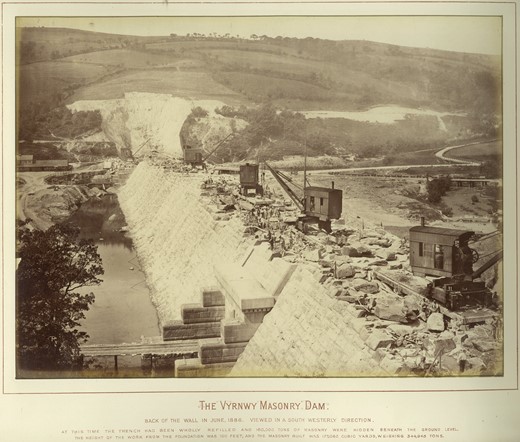
Dam Construction 1.
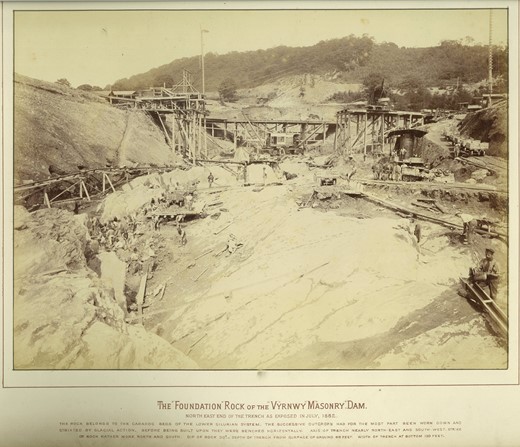
Dam Construction 2.
Part two offers an elegiac, slower movement to this percussive spectacle. It shows two images of Llanwddyn on a summer afternoon before the flood: a tiny village street, an ancient church, an old-fashioned general store, brothers and sisters holding the hand of little ones (Figure 3 ); and women gossiping at a garden gate, a hen pecking its way through dust, and villagers in working clothes staring, unsmiling, at the camera (Figure 4 ).
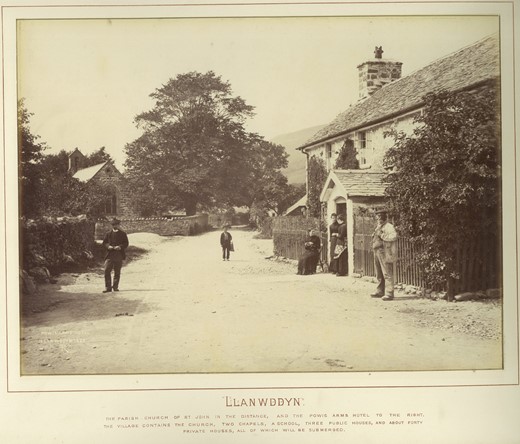
Llanwddyn before.
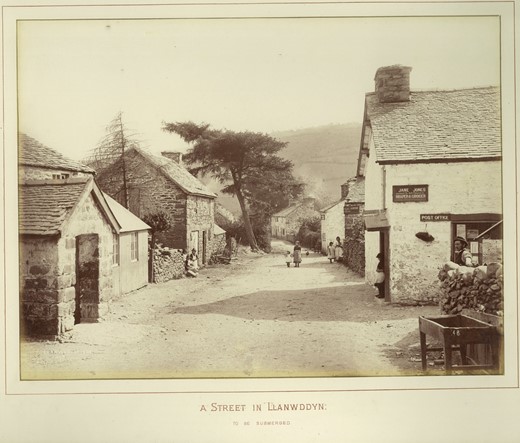
Llanwddyn to be submerged.
For the modern viewer the juxtaposed photographs act as allegorical emblems of a dark effacement, that of a traditional way-of-life buried under the juggernaut of industrial advance. It is remembrance that resonates with walkers who leave the path around Lake Vyrnwy and climb to the church and the memorials in the graveyard on the hill where a hundred exhumed bodies from the flooded churchyard were carried in carts, and reburied, by local people who had lived in the houses that were lost. Similar images exist of demolition during early Victorian railway building but, as lithographic prints, they cast a softer, more picturesque halo over devastation compared with the starker realism of photography that came later. 105
Vyrnwy and Whalley Bridge represent chapters in dark tourism created by flooding in dam and reservoir building that was to be repeated in Britain at: Mardale in Cumbria (1935), 106 Ashopton in Derbyshire (1943), 107 and in the 1960s at Capel Celyn in Wales, less than two hours away from Llanwddyn. 108 All became causes célèbres in which local communities clashed with governmental authorities invoking the primacy of the public good over claims of minority rights. Internationally sunken villages multiplied throughout the twentieth century, becoming collateral damage as mega-water projects proliferated across continents. In the new millennium they have begun to attract website coverage from bloggers, planners, and regional tourism promoters. In 2014 an urban heritage posting hailed the gothic appeal of, “Underwater Ghost Cities & Buildings.” 109 A year later they were identified as a network of generic tourism attractions under the headline, “10 Drowned Towns You Can Visit.” 110 The ten included Villa Epecuén in Argentina which had been an elite resort for the rich and famous since the 1920s, but was submerged when a dam broke in 1985; 111 Shi Cheng, flooded in 1959 to become “China’s ‘Atlantis in the East’” with monuments below the waves going back to 1777; 112 as well as Potosi in Venezuela; 113 and Port Royal in Jamaica. 114 In the United States there were more than sixty locations “flooded by the creation of dams, destroyed by the advancing sea, or washed away in floods and never rebuilt.” They stretched from California to Maryland and New York. 115 Canada became part of this network of nemesis by water with a posting of ten communities submerged in the construction of the Saint Lawrence Seaway. 116 The global spread is so great it has been suggested as an air tour opportunity. 117
The fascination of sunken villages as dark tourism sites—what Bess Lovejoy terms their “mental floss”—rests in their appeals to the mind and imagination. 118 At the outset this lies in their prospective power to obliterate and transform place and community by flood. Once constructed it is the nightmare possibility of technological failure causing dams to break, bridges to collapse, and in modern times, nuclear catastrophe to inundate power stations; all of them, visions of mega-death by water.
Death by water on a grand scale also holds unique, mythic terrors evoking memories of biblical and classical catastrophe of Noah’s Ark, Atlantis, Santorini, 119 and other flood myths in world religions, explored in the anthropology of Sir James Frazer. 120 Sunken villages also represent a variation of the aesthetic Rose Macaulay: once called “the pleasure of ruins,” 121 a gothic disposition that is turbo-charged under water as townscapes mutate into submerged wastelands of “mildewed crosses, lonely spires, barely-visible stone foundations, and rusting bed frames.” 122 More than any kind of dark tourism, sunken villages come closest to delivering encounters with the uncanny in its most quintessential guise, as haunted landscapes of spectral reappearance and the returning undead. This revenant fantasy seems close to reality during hot summers when the waters of lakes and reservoirs shrink and what once was, reappears as what is. Such special effects happen intermittently at a number of sunken villages. At Vilarinho Da Furnas, flooded by the Portuguese Electricity Company, part of the village reappears in autumn and winter, and there is a nearby museum to tell the story. 123 At Kalyazin, in Russia, church steeples rise above the waves and bells, lost below the water, are rumored to ring out again. 124 In St. Thomas, Nevada, certain buildings remained visible which now include houses, a square, and a cemetery. 125 In Flagstaff, Arizona, a historical society archives and exhibits memorials to the sinking in 1949. 126
Llandwddyn’s first reappearance was in 1933, the year the Loch Ness Monster made news. Today visitors to Lake Vyrnwy do not have to wait for hot summers for the revenant experience. It can be imagined in viewing the engine house at the edge of the lake, which was built to look like a medieval, Bavarian tower. It is there all the year round and on a grey day, seen through enveloping mist, it resembles the spectral castle in Grimm’s Norse Mythology that sank under the waters. A photograph of the view is on sale at the hotel.
Dark Tourism History: Making the Dead Work for the Living
Encounters with forms of “engineered and orchestrated remembrance”—seen here as the defining features of dark tourism—have existed throughout history, and are ones that everyone has incidentally engaged in from time to time. The sepulchral features they comprise only became a prime consideration set in traveling and recreational tastes and practices in the eighteenth and nineteenth centuries. This was because of social and ideological factors which included: the aftermath of pilgrimage, the growth of antiquarian tastes, and the many, revolutionary effects of Romanticism—particularly the discursive coding of landscape as travel spectacle with sublime and gothic, as well as picturesque, features. Romanticism and cemetery development also valorized the celebration and acting out of elegiac displays of sentiment at memorials and grave sides, encouraged in guidebooks, which became part of an aestheticized cult of “beautiful death” for which the Victorians became famous. 127 The recency of dark tourism as a named recreational form is why there have been, and continue to be, academic debates over its meaning, temporal origins (traditional, modern, or postmodern?), and its position in relation to other disciplines and travel concepts (heritage studies, human geography, the history of pilgrimage, etc.). A less-parochial issue is where its history is leading. In the past dark tourism has been mainly situated and studied as an agenda in the private sphere: the world of lifestyle, personal taste, and recreational choice. This may be changing. In the new millennium there are winds of ideological change, drawing it into a more public and controversial arena, that of “the politics of commemoration,” 128 a movement that began in academia in the 1990s as critical, postcolonial history, and has since gone viral in news agendas internationally. It has stimulated organized protests involving direct action at sites commemorating colonial figures and events through demonstrations, vandalism of memorials, and attempts to remove statues. Dark tourism has been, and will be, unavoidably affected, since its central activity is travel to view engineered and orchestrated remembrance that includes many such sites.” 129
The consequences may be two-fold. One is mounting threats to specific sites that may require protection, a contingency the English Parliament recognized in February 2021 in preparing a law making the taking down of monuments illegal without planning permission. The second may be the growth of a more informed, dark tourist, whose gaze is turned on those commemorated, but equally directed to the pragmatics of commemorative choices: who is commemorated and who might have been, but is not, and the features of their memorials (forms, events, number, siting, scale, etc.).
The sunken village material represents continuing research that dramatizes issues about the evolution of “engineered and orchestrated remembrance” as dark tourism’s “trademark” feature. Unlike death and the dead, previously assumed to be the visitor encounters in dark tourism, remembrance has no closure. It is always susceptible to change by the living. Over time remembrance of Llanwddyn went from being a traditional, rural village with a history published by the local vicar a decade before to obliteration and metamorphosis as a dam development. 130 It was then commemorated at different times as a necessity in regional water supply; a monument to British engineering; an elite sporting lodge and luxury hotel; and an intermittent, dark tourism phenomenon. The rediscovery of the photographic album offers a striking discursive text to add to those in circulation as supporting this emerging interest in sunken locations.
The case illustrates how what people and events are remembered at commemorative sites over time, reflect the interests, power, and resources of the living. It is they who metaphorically ventriloquize the form and content of memorial messages, through which the dead seem to speak. Sunken villages are new as collective, dark tourism locations. They may, however, be seen as a subset of a larger and neglected domain of spaces in the “politics of commemoration,” that of industrial devastation and fatality which for two centuries has included mining disasters, losses at sea, toxic factory conditions, transport accidents, and catastrophes of industrial pollution affecting human communities and natural habitats. These and associated effects of climate change, may in the future become more explicit agendas in dark tourism visits, not just as sights to see, but as lessons that stimulate reflection and engagement.
Further Reading
Curl, James Stevens. The Victorian Celebration of Death . Stroud: Sutton Publishing, 1980 .
Google Scholar
Google Preview
Curl, James Stevens. A Celebration of Death . London: Batsford, 1981 .
Dann, Graham. M. S. , and Seaton, A. V. ( 2001 ): Slavery, Contested Heritage and Thanatourism . New York: Haworth Hospitality Press.
Hooper, G. , and J. J. Lennon . Dark Tourism: Practice and Interpretation . Aldershot: Ashgate, 2018 .
Lennon, J. J. , and M. Foley . Dark Tourism: The Attraction of Death and Disaster . London: Continuum, 2000 .
Lloyd, D. Battlefield Tourism: Pilgrimage and the Commemoration of the Great War in Britain, Australia, 1919–1939 . Oxford: Berg, 1998 .
Macaulay, Rose. The Pleasure of Ruins , 2nd ed. Thames and Hudson, 1964 .
Seaton, A. V. “ Guided by the Dark: From Thanatopsis to Thanatourism. ” International Journal of Heritage Studies 2, no. 4 ( 1996 ): 234–244.
Seaton A. V. “ Thanatourism at Waterloo. ” Annals of Tourism Research 26, no. 1 ( 1997 ): 130–158.
Seaton, Tony. “Cultivated Pursuits: Cultural tourism as Metempsychosis and Metensomatosis,” in Routledge Handbook of Cultural Tourism , ed. Melanie Smith and Greg Richards . London: Routledge, 2013 , 19–27.
Sharpley, R. and P. R. Stone (eds.), The Darker Side of Travel: The Theory and Practice of Dark Tourism . Bristol: Channel View, 2009 , 23–38.
Stone, P. P. , Hartmann, R. , Seaton, A.V. , Sharpley, R. and L. White (eds.), The Palgrave Handbook of Dark Tourism Studies . London: MacMillan, 2018 , 377–507
Wolffe, John. Great Deaths Grieving, Religion, and Nationhood in Victorian and Edwardian Britain . London: The British Academy, 2000 .
1 Jafar Jafari Encyclopaedia of Tourism : 578. (London and New York: Routledge, 2000)
2 International Journal of Heritage Studies 2, no. 4 (1996): 578. This is the issue that introduced dark tourism and proposed the two the main approaches; J. J. Lennon , and M. Foley , Dark Tourism: The Attraction of Death and Disaster (London: Continuum, 2000).
3 A. V. Seaton , and J. Lennon , “Thanatourism in the Early 21st Century: Moral Panics, Ulterior Motives and Alterior Desires,” in New Horizons in Tourism: Strange Experiences and Stranger Practices , ed. T. V. Singh (Oxford: CABI Publishing, 2004), 64–68.
4 James Moores Ball , The Sack-Em’Up Men: An Account of the Rise and Fall of the Modern Resurrectionists (Edinburgh: Oliver and Boyd, 1928).
Lennon, Foley, Dark Tourism , 3.
6 Chris Rojek , Ways of Escape (Basingstoke: Macmillan, 1993).
7 M. Foley , and J.J. Lennon “JFK and Dark Tourism: A Fascination with Assassination,” International Journal of Heritage Studies 2, no. 4 (1996): 198–211.
8 A. V. Seaton , “Guided by the Dark: From Thanatopsis to Thanatourism,” International Journal of Heritage Studies 2, no. 4 (1996): 234–244 ; A. V. Seaton , “Thanatourism and Its discontents: An Appraisal of a Decade’s Work with Some Future Directions,” in The Sage Handbook of Tourism Studies , eds. Tazim Jamal , and Mike Robinson (London: Sage, 2009), 521–542.
Seaton, “Guided by the Dark,” 234–244.
10 M emento mori aids comprised a variety of literary and artistic texts, and artifacts that were read, worn, kept at hand, and studied including death’s head rings, desk-top skulls and other emblems of death. A major literary and artistic convention promoting memento mori reflections was the “Dance of Death,” a parade of people from all walks of life being led away to their doom by Death, a skeletal figure dancing ahead of them which was featured in books, drama, and dances. Ars Moriendi were Catholic texts on how to face and endure dying. The classic study of the genre is by Mary Catharine O’Connor , The Art of Dying Well: The Development of the Ars Moriendi (New York: Columbia University Press, 1942). An account of the Ars Moriendi in England is by Nancy Lee Beaty , The Craft of Dying The Tradition of the Ars Moriendi in England (New Haven, CT: Yale University Press, 1970).
11 Tony Seaton , “Thanatourism and Its Discontents,” in The Sage Handbook of Tourism Studies , eds. Tazim Jamal and Mike Robinson (Los Angeles and London: Sage, 2009), 534–536.
12 D. Joly , The Dark Tourist: Sightseeing in the World’s Most Unlikely Destinations (London: Simon and Schuster, 2010).
13 G. Ashworth “Holocaust Tourism and Jewish Culture: The Lessons of Krakow-Kazimierz,” in Tourism and Cultural Change , eds. M. Robinson , M., Evans , and N. Callaghan (Newcastle: University of Northumbria, 2002), 363–367 ; W. Miles , “Auschwitz: Interpretation and Darker Tourism,” Annals of Tourism Research 29, no. 4 (2002): 1175–1178 ; Lennon and Foley, Dark Tourism ; G. Ashworth , and R. Hartmann . Horror and Human Tragedy Revisited: The Management of Sites of Atrocity for Tourism (New York: Cognizant, 2005).
14 J. Henderson , “War as a Tourist Attraction: The Case of Vietnam,” International Journal of Tourism Research 6, no. 2 (2000): 97–117 ; D. Lloyd , Battlefield Tourism: Pilgrimage and the Commemoration of the Great War in Britain, Australia, 1919–1939 (Oxford: Berg, 1998) ; A. V. Seaton , “Thanatourism at Waterloo,” Annals of Tourism Research 26, no. 1 (1997): 130–158 ; A. V. Seaton , “Another Weekend Away Looking for Dead Bodies’: Battlefield Tourism on the Somme and in Flanders,” Journal of Tourism and Recreational Research 25, no. 3 (2000): 63–78 ; J. H. Iles , “Recalling the Ghosts of War: Performing Tourism on the Battlefields of the Western Front,” Text and Performance Quarterly 26 (2006): 162–180 ; J. H. Iles , “Consuming the Contested Heritage of War: Tourism, Territoriality and the Memorial Landscapes of the Western Front,” in Heritage at the Interface , ed. G. Hopper (Gainesville, FL: University Press of Florida, 2018).
15 G. M. S. Dann , and A. V. Seaton , Slavery, Contested Heritage and Thanatourism (New York: The Haworth Hospitality Press, 2001).
16 C. Strange , and M. Kempa ,“Shades of Dark Tourism: Alcatraz and Robben Island,” Annals of Tourism Research 30, no. 2 (2003): 386–403 ; S. Hodgkinson , and D. Urquhart , “Prison Tourism: Exploring the Spectacle of Punishment in the UK,” in Dark Tourism: Practice and Interpretation , eds. G. Hooper and J. J. Lennon (Abingdon: Routledge, 2017), 40–54.
17 A. V. Seaton , “Thanatourism’s Final frontiers? Internment Sites and Memorials as Sacred and Secular Pilgrimage,” Journal of Tourism Recreation Research 27, no. 2 (2002):73–82 ; Tony Seaton , M. North , and G. Gajda , “Last Resting Places? Recreational Spaces or Thanatourism Attractions—the Future of Historic Cemeteries and Churchyards in Europe,” in Landscapes of Leisure: Space, Place and Identities , eds. Sean Gammon , and Sam Elkington (Basingstoke: Palgrave Macmillan, 2015), 79.
18 Derek H. Alderman , “Writing on the Graceland Wall: On the Importance of Authorship in Pilgrimage Landscape,” Tourism Recreation Research 27, no. 2 (2002): 27–35 ; T. Blom , “Morbid Tourism: A Postmodern Market Niche with an Example from Althorpe,” Norwegian Journal of Geography 54 (2000): 29–36 ; Robert Ryan , “Standing Where Hitler fell,” Sunday Times , December 15, 2002, T3.
19 Graham M. S. Dann , “The Dark Side of Tourism,” in Studies and Reports, Serie L. Sociologie/Psychologies/Philosophie/Anthropology 14 (1998), Aix-en-Provence, France: Centre International de Recherches et d’Etudes Touristiques.
20 R. Sharpley , “Travels to the Edge of Darkness: Towards a Typology of ‘Dark Tourism’’, in Taking Tourism to the Limits: Issues, Concepts and Managerial Perspectives , eds. C. Ryan , S. J. Page , and M. Aicken (London: Elsevier Ltd., 2005), 215–226 ; P. R. Stone , “A Dark Tourism Spectrum: Towards a Typology of Death and Macabre Related Tourist Sites, Attractions and Exhibitions,” Tourism: An Interdisciplinary Journal 54, no. 2 (2006): 145–160 ; Rachel Raine , “A Dark Tourism Spectrum,” International Journal of Culture, Tourism and Hospitality Research 7, no. 3 (2006): 242–256.
Seaton, ”Guided by the Dark,” 240, 243.
Raine, “A Dark Tourism Spectrum.”
23 Geoffrey Gorer , Death, Grief and Mourning (New York: Doubleday, 1965).
Seaton, ”Guided by the Dark,” 243.
25 P. Stone , “Making Absent Death Present: Consuming Dark Tourism in Contemporary Society,” in The Darker Side of Travel: The Theory and Practice of Dark Tourism , eds. R. Sharpley and P. R. Stone (Bristol: Channel View, 2009), 23–38.
26 James Moore Ball , The Sack-‘Em-Up Men: An Account of the Rise and Fall of the Modern Resurrectionists (Edinburgh: Oliver and Boyd, 1928).
27 P. Stone , ‘Dark Tourism and Significant Other Death: Towards a Model of Mortality Mediation’, Annals of Tourism Research , 39(3): 1565–1587.
28 Tony Seaton , “Purposeful Otherness: Approaches to the Management of Thanatourism”, in The Darker Side of Travel , R. Sharpley and P. R. Stone , (Bristol: Channel, 2009), 75–108.
29 P. Slade , “Gallipoli Thanatourism: The Meaning of ANZAC,” Annals of Tourism Research 30, no. 4 (2003): 779–794.
Seaton and Lennon. “Thanatourism in the Early 21st Century.”
Stone, ”Making Absent Death.”
32 J.E. Tunbridge , J. E. and G.J. Ashworth , “Dissonant Heritage: The Management of the Past as a Resource in Conflict” (Chichester: Wiley, 1996).
33 Tazim Jamal , and Linda Lelo , “Exploring the Conceptual and Analytical Framing of Dark Tourism: From Darkness to Intentionality,” in Tourist Experience Contemporary Perspectives , R. Sharpley and B. Stone (Bristol: Channel View, 2011), 29–42.
34 D. Light , “Progress in Dark Tourism and Thanatourism Research: An Uneasy Relationship with Heritage Tourism,” Tourism Management 61 (2016): 275–301.
35 Philip. Stone , Rudi. Hartmann , Tony. Seaton , Richard. Sharpley , and Leanne. White , eds., The Palgrave Handbook of Dark Tourism Studies : 377–507 (London: MacMillan Publishers Ltd, 2018).
36 G. E. Tunbridge and G. J. Ashworth , “Is All Tourism Dark?” in Dark Tourism: Practice and Interpretation , eds. G. Hooper , and J.J. Lennon (Abingdon: Routledge, 2017), 12–25.
37 Sharpley and Stone , The Darker Side of Travel Dark Tourism and Place Identity: Managing and Interpreting Dark Places , eds. L. White , and E. Frew (Routledge, Oxford, 2013) ; G. Hooper, G. , and J.J. Lennon , eds., Dark Tourism: Practice and Interpretation (Abingdon: Routledge, 2017) ; Philip R. Stone , Rudi Hartmann , Tony Seaton , Richard Sharpley and Leanne White , The Palgrave Handbook of Dark Tourism Studies (London: Palgrave Macmillan, 2018).
38 G. Bird , M.Westcott , and N. Thiessen , “Marketing Dark Heritage: Building Brands, Myth-Making and Social Marketing,” in The Palgrave Handbook , P. Stone et al., 645–665 ; K. Hannam , and Ganna Yakovska , “Tourism, Mobilities, Spectralities, and the Hauntings of Chernobyl” in, P. Stone et al. The Palgrave Handbook , op. cit. 318–333.
39 R. Sharpley , and Mona Friederich , “Genocide Tourism in Rwanda: Contesting the Concept of “The Dark Tourist,” in Dark Tourism: Practice and Interpretation , eds. G. Hooper . and J. J. Lennon (Abingdon: Routledge, 2017), 134–136.
40 D. Timothy , “Sites of Suffering, Tourism, and the Heritage of Darkness: Illustrations from the United States,” in The Palgrave Handbook , ed. P. Stone et al. (2018) op. cit., 381–398.
41 M. T. Clanchy , From Memory to Written record. England 1066-1307 (Blackwell: Oxford and Cambridge, 1993) ; Mary Carruthers , The Book of Memory. A Study of Memory in |Medieval Culture (Cambridge: Cambridge University Press, 1990) ; Janet Coleman , Ancient and Medieval Memoirs: Studies in the Reconstruction of the Past (Cambridge: Cambridge University Press, 1992) ; Donald R. Kelley , ed, Versions of History from Antiquity to the Enlightenment (New Haven, CT: Yale University Press,, 1991) ; Gabrielle M. Spiegel , The Past as Text: The Theory and Practice of Medieval Historiography (Baltimore: The Johns Hopkins University Press, 1997).
42 Michael Bentley , Companion to Historiography (London: Routledge, 1997).
43 Edward Said , Orientalism (London: Penguin Books, 1978, 1995) ; Edward Said , Culture and Imperialism (London: Chatto and Windus, 1993) ; Homi Bhabha (ed.), Nation and Narration (London: Routledge, 1992) ; Homi Bhabba , The Location of Culture (London: Routledge, 1994).
44 Nataliya Danilova , The Politics of War Commemoration in the UK and Russia (London: Palgrave Macmillan Memory Studies, 2015) ; A. Erll, A. and A. Nunning (eds.), Cultural Memory Studies: An International and Interdisciplinary Handbook (Berlin: de Gruyter, 2008) ; B. Graham and P. Howard (eds.), The Ashgate Research Companion to Heritage and Identity (Aldergate: Ashgate, 2007) ; A. King , Memorials of the Great War in Britain: The Symbolism and Politics of Remembrance (London: Bloomsbury, 2014) ; D. Viejo-Rose , “Memorial Functions: Intent, Impact and the Right to Remember,” Memory Studies 4, no. 4 (2011): 465–480 ; Craig Wight “Contested National Tragedies: An Ethical Dimension,” in The Darker Side of Travel , eds. Sharpley and Stone , 129–144 ; C. A. Wight , and J. Lennon , “Selective Interpretation and Eclectic Human Heritage in Lithuania,” Tourism Management 28, no. 2 (2007): 234–254 ; Paul Williams , Memorial Museums: The Global Rush to Commemorate Atrocities (Oxford: Berg, 2007).
45 Ludwig Wittgenstein , Tractatus Logico-Philosophicus (London: Routledge, 1922). In this famous and formidable treatise on language, logic, and meaning, Wittgenstein started with disarmingly, simple phrases to engage the reader in pursuing a revolutionary track of complex, theoretical dissidence that was argued in several hundred axioms and assertions. The aim of the “Tractatus” was to demonstrate how the meaning of language was anchored in basic and underlying social contexts, not just a matter of formal, linguistic logic. “State of affairs” and, “that which is the case” were two of the phrases he used to contrast what he saw as the reality of language in actual use , compared to its status as grammatical and syntactical logic. The real “state of affairs” in dark tourism, it is here argued, is “remembrance” as the focal issue, not “death” as previously supposed. “Engineered remembrance” is the actual “state of affairs” confronting both dark tourism consumers and suppliers. “Remembrance” in material form, not “death,” is “that which is the case”—the de facto object of “the tourist gaze.”
46 Tony Seaton , “Patrimony, Engineered Remembrance and Ancestral Vampires: Appraising Thanatouristic Resources in Ireland and Italy,” in Hooper Lennon , Dark Tourism , 55–68 ; A. V. Seaton , “Encountering Engineered and Orchestrated Remembrance: A Situational Model of Dark Tourism and Its History,” in P. Stone et al., The Palgrave Handbook , 9–33.
47 John and Elizabeth Romer . The Seven Wonders of the World (London: Michael O’Mara Books Limited, 1995).
48 Jeremy Black , The British and the Grand Tour (London: Routledge, 1985) ; Edward Chaney , The Evolution of the Grand Tour: Anglo-Italian Cultural Relations since the Renaissance (London: Frank Cass, 1998) ; John Towner , An Historical Geography of Recreation and Tourism in the Western World 1540–1940 (Chichester: John Wiley and Sons, 1996) ; A. V. Seaton , in Keywords for Travel Writing Studies , eds. C. Fosdick , C. , Z. Kinsley , Z and K. Walchester (2019), 108–110.
49 A. V. Seaton , in Keywords for Travel Writing Studies , eds. C. Fosdick , C. , Z. Kinsley , Z and K. Walchester (2019), 108–110.
50 Paul Koudounaris , The Empire of Death. A Cultural History of Ossuaries and Charnel Houses (London: Thames and Hudson, 2011).
51 R. Fraser Rae , The Business of Travel: A Fifty Year’s Record of Progress (London: Thomas Cook and Son, 1891) ; John Pudney , The Thomas Cook Story (London: Michael Joseph, 1953) ; Piers Brendon , Thomas Cook’s 150 years of Popular Tourism (London: Martin Secker and Warburg, 1992).
52 Paul Westover , Necroromanticism: Travelling to Meet the Dead, 1750–1860 (London: Palgrave Macmillan, 2012).
53 William Howittt , Homes and Haunts of English Poets , 2 vols. (London: Richard Bentley, 1847).
54 William Howitt , Visits to Remarkable Places: Old Halls, Battlefields etc. , 2 vols. (London: Longman, Orme, Green Brown and Longmans, 1840).
55 S. Carter Hall , Pilgrimages to English Shrines , vol 2 (London: Arthur Hall, Virtue and Co., 1853), 154.
56 Joan Evans , A History of the Society of Antiquaries (Oxford: Oxford University Press, 1956), 1–60.
Jonathan Skinner “The Smoke of an Eruption and the Dust of an Earthquake: Dark Tourism, the Sublime, and the Reanimation of the Disaster Location,” in Stone et al., 125–150.
Two of the sites that suffered most from take-away memento seekers were Shakespeare’s Stratford, and the Catacombs at Rome.
59 John Howes Gleason , The Genesis of Russophobia in Great Britain 22 (Cambridge, MA: Harvard University Press, 1950), 22.
For Scottish lore and legend see, Walter Scott’s works which were intended to sell Caledonia to the world. His “Minstrelsy of the Scottish Border Consisting of Historical and Romantic Ballads,” first published in 1802 in 2 vols. in Kelso by James Ballantyne, was reprinted throughout the century. It abounds in battles, blood, and thunder.
Jaunting-cart in Ireland, camel rides during Holy Land tours, and pony trekking through Iceland, a land with few roads and no railways.
62 “The March of Intellect” was an ironical, journalistic name for the growth in popular reading in the 1830s brought about by technological advances in the speed and volume of printing, and reduced cost of publishing, Entrepreneurs like Charles Knight exploited these to democratize reading by publishing cheap editions of classic works, including Shakespeare’s works, and a “Penny Encyclopaedia” issued in weekly parts. The name was seized upon by graphic satirists like Robert Seymour and George Cruikshank who depicted dustmen reading books, cockneys discussing philosophy and politics. In London their caricatures were hung in shop windows, for the middle classes they were bought as single items or sets, but also hired in scrap books of caricatures lent out for dinner parties and chic weekend entertainment. Graphic satire offers the major artistic record of tourism taste in the 19th century; Tony Seaton , “The Tourist Experience in Graphic Satire 1796-1914”in Tijana Rakic , and Jo-Anne Lester , Travel, Tourism and Art: 13–34 .
63 There is abundant contemporary and modern literature on the Gothic. A classic, often revised, is Kenneth Clark , The Gothic Revival: Essays in the History of Taste (London: John Murray, 1928, rev. 1950 and 1962). Michael Charlesworth has edited a substantial compilation of extracts from Gothic texts: The Gothic revival 1720–1870 , 3 vols. (Robertsbridge, East SussexHelm Information, 2002). Britton’s life and career are described in his neglected, two-volume autobiography which includes a catalogue of his topographical works, as well as interesting contextual material relevant to dark tourism’s expansion on landscape, ecclesiastical illustration, and commercial engraving. John Britton , The Auto-Biography of John Britton , 2 vols. (London: Printed for the Author, 1850).
64 For Gray’s life, see Robert L. Mack , Thomas Gray: A Life (New Haven, CT: Yale University Press, 2000).
65 Ronald Fletcher , In a Country Churchyard (Batsford, London, 1976).
66 Ian Ousby , The Englishman’s England. Taste, Travel and the Rise of Tourism (Cambridge: Cambridge University Press, 1993), 387–388.
67 William Wordsworth , “Upon Epitaphs,” in The Prose Works of William Wordsworth , ed. Alexander Grosart , vol. 3 (London: Edward Moxon, 1876), 25–75.
68 Montague Summers , A Gothic Bibliography (London: Fortune Press, n.d. [1940]).
69 The gothic has attracted exhibitions and an enormous and continuing literature since its appearance in the late eighteenth century. It was one of the first cultural developments to be named as an influence in Dark Tourism/Thanatourism ( Seaton. op. cit. 1996 : 237–238). Its history may be pleasurably sampled in many, modern illustrated studies including: Richard Davenport-Hines , Gothic Four hundred years of excess, horror, evil and ruin (London: Fourth Estate 1998) ; and, Terror and Wonder. The Gothic Imagination which accompanied a major exhibition at the British Library in 2015 London: British Library 2014).
70 Constantin Volney , Les Ruines ou Meditations sur les Revolutions des Empires (Paris. Translated into English 1802. [publisher?]
Percy Bysshe Shelley wrote the sonnet “Ozymandias” in 1817. It was first included in volume 3 of his collected, poetical works, chosen and edited in four volumes in 1839 by his wife Mary, the author of Frankenstein .
72 Edmund Burke’s Philosophical Enquiry into the Origin of our Ideas of the Sublime and Beautiful was first published in an edition of 500 in 1757. It was quickly translated into other languages, achieving European influence. The best critical edition is by J. T. Boulton (London: Routledge and Kegan Paul, 1958). Earlier in the century the Sublime had attracted a book length study published anonymously in London with no publisher “A Treatise on the Sublime … Translated from the Greek of Longinus with Critical Reflections, Remarks and Observations, by M. Boileau, M. Dacier, and M. Boivin” (1712). Samuel H. Monk , The Sublime: A Study of Critical Theories in XVIII-Century England (Ann Arbor, MI: University of Michigan, 1935) ; Richard John Hipple , The Beautiful, the Sublime, and the Picturesque in Eighteenth-Century British Aesthetic Theory (Carbondale, IL: Southern Illinois University Press, 1957) ; Marjorie Hope Nicolson , Mountain Gloom and Mountain Glory. The Development of the Aesthetics of the Infinite (Ithaca, NY: Cornell University, 1959). A recent selection of short readings on aspects of the Sublime is by Cian Duffy and Peter Howell , Cultures of the Sublime: Selected Readings 1750–1830 (Basingstoke: Palgrave MacMillan, 2015).
73 G. A. Walker , Gatherings from Graveyards (London: Longman and Company, 1830).
74 Report from the Select Committee of Improvement of the Health of Towns … Effect of Internment of Bodies in Town (London: The House of Commons, 1842).
75 Edwin Chadwick , Report on the Sanitary Condition of the Labouring Population of Great Britain Supplementary Report on the Results of a Special Inquiry into the Practice of Internment in Towns (London: C. Clowes and Sons, 1843).
76 Pere La Chaise; Michel Dansel , Au Pere-Lachaise. Son histoires, ses secrets, ses promenades . (Nancy: Fayard, 1972) ; George Blair , Biographic and Descriptive Sketches of Glasgow Necropoli s (Glasgow: Ogle and Son,1857). For Sweden and Liverpool, see James Stevens Curl A Celebration of Death : 151–154 and 206–210 (London: Batsford, 1981).
77 J.C. Loudon ,. On the Laying Out, Planting and Managing of Cemeteries and on the Improvements of Churchyards (London: Printed for the author, and sold by Longmans, Brown, Green and Longmans, 1843, 1981).
78 Since the 1970s James Stevens Curl has been a notable and continuing campaigner on behalf of historic cemeteries. His two most important book-length, general studies have been A Celebration of Death (New York: Scribners, 1980). The Victorian Celebration of Death (Stroud: Sutton Publishing, 2000)
79 Curl’s works on specific cemeteries have included: “Nunhead Cemetery, London,” Transactions of the Ancient Monuments Society 1980: 14–22 , 1980; “Northern Cemetery under Threat: Jesmond, Newcastle on Tyne,” Country Life , June 12, 1981: 68–69 [pages]; Kensal Green Cemetery: The Origins and Development of the General Cemetery of All Souls, Kensal Green, London, 1824 – 2001 (London: Phillimore, 2001). An extensive bibliography of Curl’s pioneering studies on cemeteries and funerary culture can be found at, http://www.jamesstevenscurl.com/james-stevens-curl-complete-works , accessed 18.6.22
80 The Association of Significant Cemeteries in Europe was inaugurated in Bologna in 2001. It quickly attracted 59 members, which grew to 130 in 99 countries by 2015, and numbered over 200 in 2020. See Mauro Felicori and Annalisa Zanotti, “Cemeteries of Europe: A Historical Heritage to Appreciate and Restore”; Tony Seaton , “Last Resting Places? Recreational Spaces? or Thanatourism Attractions? The Future of Historic Cemeteries and Churchyards in Europe” in Landscapes of Leisure: Space, Place and Identities , eds. Sean Gammon and Sam Elkington (Basingstoke: Palgrave Macmillan, 2015), 71–95.
81 Anonymous, Herveiana (Scarborough: John Cole, 1823), 114–115.
82 William Andrews , Curious Epitaphs (London: Hamilton, Adams and Company, 1883).
The Society for Preserving Memorials of the Dead, published from 1883 to 1885.
84 James Smillie , Green-wood Illustrated … with Descriptive Notices by Nehemiah Cleaveland (New York: Robert Martin, 1847) ; Mount Auburn Illustrated …with Descriptive Notices by Cornelia W. Walter ” (New York: Martin and Johnson, (n.d. [c. 1850]).
85 John Townshend , Sepulchral Literature: A Catalogue of Some Books Relating to the Disposal of the Bodies and Perpetuating the Memories of the Dead (New York, 1887)
86 John Edmondson , Death and Tourist : Dark Encounters in Mid-Nineteenth Century London via the Paris Morgue , in,, Stone et al., 2018, op. cit., 77–102.
87 Paul Westover , Necromanticism Travelling to Meet the Dead, 1750–1860 (Basingstoke: Palgrave-Macmillan).
88 A.V. Seaton , “War and Thanatourism: Waterloo 1815–1914,” Annals of Tourism Research , 26, No 1 (1999): 130–158.
89 Stony Seaton and Graham M. S. “Dann, “Crime and Dark Tourism: The Carnivalesque Spectacles of the English Judicial System,” in, Stone 2018, op. cit. 33–76
90 John Wolffe , Great Deaths Grieving, Religion, and Nationhood in Victorian and Edwardian Britain (London: British Academy, 2000).
91 E. Pierce , A Concise Biographical Memoir of George III … also an Account of his Lying in State at Windsor; the Procession and other Solemnities observed at the Royal Funeral (London: Sherwood, Neely and Jones, 1820).
Wolffe, Great Deaths , 44–45.
Wolffe, Great Deaths .
94 Lord Edward Gleichan , London’s Open-Air Statuary (London: Longmans, Green and Co., 1928), xv ; Arthur Byron , London Statues: A Guide to London’s Outdoor Statues and Sculpture (London: Constable, 1928)
95 London County Council, Indications of Houses of Historical Interest in London , 6 vols. (London: London County Council, 1901–1930).
96 Memorials of the two World Wars have been well documented. They include Sydney Hurst, The Silent Cities: An Illustrated Guide to the War Cemeteries and memorials to the “Missing” in France and Flanders: 1914–1918 (London: Methuen, 1929, 1933) ; Philip Longworth , The Unending Vigil: A History of the Commonwealth War Graves Commission 1917–1967 (London: Constable, 1967) ; Trefor Jones , On Fame’s Eternal Camping Ground: A study of First World War Epitaphs in the British Cemeteries of the Western Front (Pinner: T. G. Jones, 2007) ; Gaynor Kavanagh , Museums and the First World War: A Social History (London: Leicester University Press, 1994) ; David Saunders , Britain’s Maritime Memorials and Mementoes (Sparkford: Haynes Publishing, 1996) ; David and Betty Beaty Light Perpetual: Aviators’ Memorial Windows (Shrewsbury: Airlife, 1995).
97 Robert Hewison , The Heritage Industry: Britain in a Climate of Decline (London: Methuen, 1987).
98 Patrick Wright , On Living in an Old Country: National Past in Contemporary Britain (London: Verso Books, 1986).
99 The Guardian (2019): “Disaster tourism arrives in Whaley Bridge after dam incident,” https://www.theguardian.com/uk-news/2019/sep/09/disaster-tourism-arrives-in-whaley-bridge-after-dam , accessed July 28, 2020.
100 Rowlands, D. W. L. , History and Description of Llanwyddn and Lake Vyrnwy (Llanwyddn Parochial Church Council: Llanwddyn Parochial Church Council: Welshpool Printing Company, 1974), 12–15.
101 The Council kept a record of the development in a large album of photographs from which the four illustrations here are taken. One of the technical site visitors was G.F. Deacon a leading authority on water supply engineering who later praised it, See, G. F. Deacon , “Vyrnwy,” Proceedings of the Institution of Civil Engineers , Vol cx1: 111–113, July; 1892. The dam was also described in a standard reference work on water supply which featured Vyrnwy as the photographic frontispiece, see W.K. Burton , (1898): “The Water Supply of Towns and the Construction of Waterworks” (London: Crosby Lockwood and Son, 1898): 76–78.
102 John Baynes , George Westropp George , and Simon Baynes , Lake Vyrnwy The Story of a Sporting Hotel (Shrewsbury: Quiller, 2019), 3–13.
Newspaper accounts and stories passed down to current residents have been identified, but the COVID crisis of 2020 and 2021 has delayed recording and analysis, planned for late 2021.
104 J. J. Lennon , “Dark Tourism Visualisation: Some Reflections on the Role of Photography,” in Stone et al, The Palgrave Handbook , 585–603.
105 The best-known graphic records of railway constructions are the lithographs of John Bourne , Drawings of the London and Birmingham Railway (London: Ackermann and Co. and C. Tilt, 1839) ; John Bourne , The History and description of the Great Western Railway (London: David Bogue, 1846).
108 Capel Celyn , “The Drowning of Capel Celyn,” Medium.com (1963), https://medium.com/datadriveninvestor/the-drowning-of-capel-celyn-109496dc611e ; and https://www.youtube.com/watch?v=5ui2rFSP6AM , both accessed March 11, 2020.
109 WebUrbanist, “Drowned Towns,” WebUrbanist (2014) https://weburbanist.com/2014/03/10/drowned-towns-10-underwater-ghost-cities-buildings/2/ , accessed May 12, 2022.
110 Bess Lovejoy , “Ten Drowned Cities You Can Visit,” Mental Floss , 2015, https://www.mentalfloss.com/article/66680/10-drowned-towns-you-can-visit , accessed December 30, 2020.
111 “The Ruins of Villa Epecuan,” The Atlantic , 2011, https://www.theatlantic.com/photo/2011/07/the-ruins-of-villa-epecuen/100110/ .
Si Cheng (2014): “China’s Atlantis of the East.” Si Cheng was flooded in 1959 to make way for Qiandao lake (also known as Thousand Island lake) for the Xin’an River Dam project. Nearly 300,000 people had to relocate, some of whom had families that had lived in the area for centuries; http://www.bbc.com/travel/story/20140711-chinas-atlantis-of-the-east , accessed June 8, 2022.
Potosi in Venezuela was flooded in 1985 but over the next thirty years the church spire has gradually emerged from beneath the waters; https://www.atlasobscura.com/places/drowned-church-potosi , accessed June 6, 2022.
Port Royal in Jamaica was a “sunken pirate city” that disappeared in the 1690s due to a natural disaster. Today most of the remains of the 17th century city lie under up to 40 feet of water. In 1969, Edwin Link discovered the most famous artifact: a pocket watch dated 1686, stopped at exactly 11:43; https://www.atlasobscura.com/places/sunken-pirate-stronghold-at-port-royal , accessed June 4, 2022.
115 “ “Flooded Towns of America,” Wikipedia, 2020, https://en.wikipedia.org/wiki/List_of_flooded_towns_in_the_United_States ; Pinterest https://www.pinterest.co.uk/pin/347621664966005596/ , accessed January 21, 2021.
116 “Lost Villages of the St. Lawrence River, Canada’s Atlantis,” Global News , 2018, https://globalnews.ca/news/4369620/lost-villages-of-the-st-lawrence-river-canadas-atlantis/ , accessed January 1, 2021.
117 “Airtours,” Ar-Tour.com , http://ar-tour.com/guides/stories-of-submerged-towns-1/the-lost-villages.aspx .
Santorini was an earthquake disaster site in the past that has produced floods and sunamis. See, Jonathan Skinner, “The Smoke of an Eruption and the Dust of an Earthquake. Dark Tourism, the Sublime, and the Reanimation of the Disaster Location” in, Stone et al., op. cit. 2018 : 125–150. In the present Santorini offers tourists the double appeal of earthquakes and inundations as day tours. https://www.viator.com/tours/Santorini/Volcano-and-Hot-Springs-Tour/d959-156401P1 , accessed June 3, 2022.
120 Floods received brief mentions in James Frazer’s twelve-volume study of myths and superstitions, The Golden Bough (1890–1915), and extended treatment later in, James Frazer , Folk-lore in the Old Testament. Studies in Comparative Religion Legend and Law, vol. 3 (London: Macmillan, 1919).
121 Rose Macaulay , The Pleasure of Ruins (London: Weidenfeld & Nicolson, 1953).
http://www.weburbanist.com/2014/03/10/ , accessed January 30, 2021.
Vilarinho Da Furnas Portugal had origins going back 2,000 years. It was flooded by the Portuguese Electricity Company in 1972. Parts reappear in Autumn and Winter. The Museum was opened in 1981; www.atlasobscura.com/places/vilarinho-da-fuma/ , accessed January 30, 2021.
Stalin ordered the flooding of Kalyazin in 1939 to build Uglich Reservoir. Submerged buildings have reappeared and Christian Services still take place inside the Tower; https://en.wikipedia.org/wiki/Uglich_Reservoir , accessed January 17, 2021.
St Thomas, Monument City, Nevada, was flooded in 1985 in creation of the Hoover Dam, leaving only the church steeple visible. In 2008 many houses, a square, and a cemetery reappeared; https://www.onlyinyourstate.com/indiana/underwater-ghost-town-in/ , accessed January 16, 2021.
Flagstaff was flooded in 1949 in the construction of the Long Falls Dam; https://www.onlyinyourstate.com/maine/underwater-city-me/ , accessed January 16, 2021. The Dead River Historical Society Museum includes a memorial exhibit to the “lost” towns of Flagstaff Village and Dead River Plantation; https://sites.google.com/site/deadriverareahistory/home/the-flooding-of-flagstaff/ , accessed January 16, 2021.
127 The sentimentalized aesthetics surrounding dying and funerary practices have been the subject of many studies, including those by James Curll, The Victorian Celebration of Death (Stroud: Sutton Publishing, 1980) and A Celebration of Death (London: Batsford, 1981) ; John Morley , Death, Heaven and the Victorians (London: Studio Vista, 1971) ; and in David Robinson , and Dean Koontz , Beautiful Death. Art of the Cemetery (London: Studio Vista, 1996).
128 “Politics of commemoration,” and the related areas of “Politics of History” and “Politics of Remembrance,” have been widely debated by historians and social scientists since the Millennium. See six national examples at “Politics of Memory,” Wikipedia , https://en.wikipedia.org/wiki/Politics_of_memory ; and Maria Bucur and Nancy M. Wingfield , Staging the Past: The Politics of Commemoration in Habsburg Central Europe, 1848 to the Present (West Lafayette, IN: Purdue University Press, 2001).
129 For discussion of modern dark tourism and the politics of remembrance see, Tony Seaton , “Remembrancing, Remembrance Gangs, and Co-opted Encounters: Loading and Reloading Dark Tourism Experiences,” in The Routledge Handbook of the Tourist Experience , ed. Richard Sharpley (Abingdon: Routledge, 2022).
130 Thomas Henry , “History of the Parish of Llanwddyn,” Montgomeryshire: Collections Historical and Archaeological (Vol 4, 1873): 391–406.
- About Oxford Academic
- Publish journals with us
- University press partners
- What we publish
- New features
- Open access
- Institutional account management
- Rights and permissions
- Get help with access
- Accessibility
- Advertising
- Media enquiries
- Oxford University Press
- Oxford Languages
- University of Oxford
Oxford University Press is a department of the University of Oxford. It furthers the University's objective of excellence in research, scholarship, and education by publishing worldwide
- Copyright © 2024 Oxford University Press
- Cookie settings
- Cookie policy
- Privacy policy
- Legal notice
This Feature Is Available To Subscribers Only
Sign In or Create an Account
This PDF is available to Subscribers Only
For full access to this pdf, sign in to an existing account, or purchase an annual subscription.
- Feel good news
- Touroperators
- In de lucht
- Themareizen
- De bestemmingsspecialist
- Reisreportages
- Midden-Amerika
- Noord-Amerika
- Zuid-Amerika
- Reisaccessoires
- Travel Express Benelux

Seabourn kiest traditionele Aboriginalstam als peetouders voor nieuwste schip

Dit zijn momenteel de drukste luchthavens ter wereld

Walt Disney Studio Park in Parijs transformeert in gloednieuw park met…

MSC Cruises introduceert unieke slingerattractie boven zee op nieuwste cruiseschip

Dagtoeristen betalen vandaag 5 Euro om Venetië te mogen bezoeken

Waar heb je recht op bij een staking in de luchtvaart?
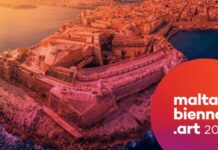
Malta profileert zich als culturele toeristische bestemming met 1e kunstbiënnale

Schiphol lanceert nieuwe locatie dichtbij terminal voor reiziger met taxi-app
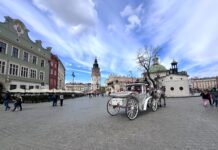
48 uren in Krakau: 6 absolute hoogtepunten in deze Poolse parel
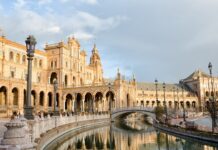
Sevilla wil toegang tot Plaza de España betalend maken voor toeristen

113.000 Belgen op reis met de autocar deze Paasvakantie

Steeds meer wintersportvakanties naar Scandinavië
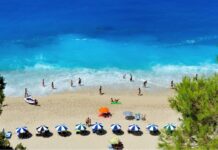
Vroegboeken wint weer duidelijk van last-minute vakantiereserveringen
Dark travel: reizen naar donkere kantjes & vergeten stukjes geschiedenis.
15/03/2023- “Er zijn zoveel plekken waar conflicten hebben gewoed, waar fascinerende verhalen te vertellen vallen en waar je ook naartoe kan reizen. Dat is onze ambitie met Darktravel.
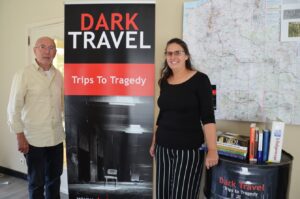
De voorbeelden zijn legio, stelt hij: de Eerste en Tweede Wereldoorlog, plekken waar de Holocaust of andere genocides tot uiting komen (van de Dossinkazerne tot Auschwitz of zelfs Rwanda), maar evengoed diverse conflictgebieden, van Vietnam of de Spaanse burgeroorlog.
Jean-Pierre Baeyens: “Dark Travel gaat over geschiedenis, herinneringsreizen met een educatief doel. We willen dus absoluut geen ramptoerisme verkopen of bijvoorbeeld nu naar Oekraïne of het aardbevingsgebied in Turkije of Syrië reizen. Nee, het gaat erom dat we verhalen en bestemmingen aankaarten die weinig of minder gekend zijn of die dreigen in de vergeethoek te belanden. Ik praat wel eens met jongeren en dan ben ik steevast verbaasd dat Tsjernobyl of zelfs zaken uit Wereldoorlog I of II hen niks meer zeggen. In die zin willen wij met onze reizen als eyeopener fungeren.”
Eindeloze lijst
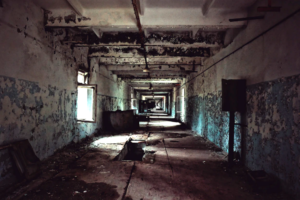
Uiteraard vormen oorlogen een bron van inspiratie. “We hebben nu een tocht, in de voetsporen van de SS-divisie naar Oradour-sur-Glane in Frankrijk, maar evenzeer een tocht door Telemark, in de voetsporen van het Noorse verzet. We gaan ook naar de Ligne rouge, de frontlijn in de Oise en Aisne, veel minder bekend dan de slagvelden langs de Somme. Idem dito: het verhaal van het oorlogsfront in de Dolomieten of Macedonië is ook amper bekend.”
Onder de noemer ‘ongewoon’ vallen een reeks minder evidente en avontuurlijke bestemmingen zoals Pakistan (“mijn persoonlijke favoriet”), Noord-Cyprus of zelfs eigen land.
Bijzondere zaken
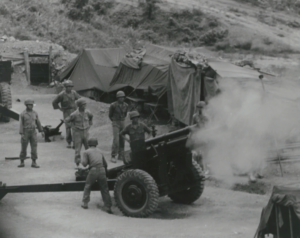
- Deel via Facebook
- Deel via LinkedIn
Meer artikels uit deze categorie

Nieuwe reisorganisatie Wonderways biedt groepsreizen voor 40’ers en 50’ers

De 7 meest vega-vriendelijke citytripbestemmingen in Europa

Eerste Belgische gespecialiseerde honeymooncoach Evi Poncelet begeleidt koppels naar hun droomreis

Travel2Sports: reizen naar sportwedstrijden/events wereldwijd
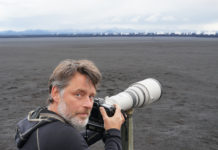
Johan Van Cutsem over steeds populairdere fotografiereizen

5X op reis met de camper

Op stap in Valencia met The Ladies, Female Travel Club

Treinreizen: Leslie De Nys over werelds mooiste treintrajecten
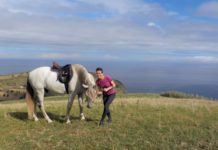
Vakantie te paard: Stephanie Sap over ruitervakanties wereldwijd

Nieuwe magische seizoenen kleuren Disneyland Paris in 2018
- Britta’s Blog

Influencers en dark tourism: alles voor de likes
Wie op sociale media nog een beetje wil opvallen, moet tegenwoordig wel heel erg zijn of haar best doen. Van een ordinair vakantiekiekje vanaf Bali kijkt niemand meer op. Een echte influencer of ramptoerist maakt enkel nog selfies op begrafenissen, op de rand van een klif of in concentratiekampen. Dark tourism lijkt niet meer te stoppen.
Auschwitz trekt jaarlijks miljoenen bezoekers die willen leren over de gruwelijkheden die zich voltrokken tijdens de Tweede Wereldoorlog. Maar niet iedere toerist komt hier voor een geschiedenislesje. In de laatste jaren ondervinden de beheerders van het voormalige concentratiekamp steeds meer last van asociale bezoekers met selfiesticks. Zodanig, dat de organisatie op X een waarschuwing plaatste: “Als je naar Auschwitz komt, onthoud dan dat je op de plek bent waar meer dan 1 miljoen mensen zijn vermoord. Respecteer hun nagedachtenis. Er zijn betere plekken om te leren lopen op een evenwichtsbalk dan de plek die symbool staat voor de deportatie van honderdduizenden mensen naar hun dood.” Erbij stonden vier afbeeldingen van ramptoeristen die grappend en grollend balanceren op de treinrails.
De #auschwitzselfie kent ook andere vormen: vrouwen in strakke spijkerbroeken die hun bips uitsteken, met op de achtergrond de poorten naar Auschwitz. Of vrolijke meisjes die lachend in hun camera kijken, zichzelf op Instagram plaatsen en daarbij optekenen: “Selfie in het Auschwitz-concentratiekamp!” met erachter een blije smiley. “We móéten hierop reageren,” gaf een woordvoerder van het complex vorig jaar te kennen. “Als wij bezoekers gek zien doen en gekke gezichten zien trekken terwijl ze foto’s maken, herinneren wij ze eraan waar ze zijn. De herinnering aan de slachtoffers van het voormalige naziconcentratiekamp dient te worden gerespecteerd.”
Ook het Berlijnse Holocaustmonument heeft last van ‘Holocaust-selfies’. Op de grote, grijze betonblokken die de Jodenvervolging symboliseren, vinden voornamelijk jongeren het geinig om ludieke selfies te maken of een nieuwe profielfoto te scoren voor hun dating-apps. De foto’s die daadwerkelijk op het internet belanden, kunnen rekenen op felle reacties.
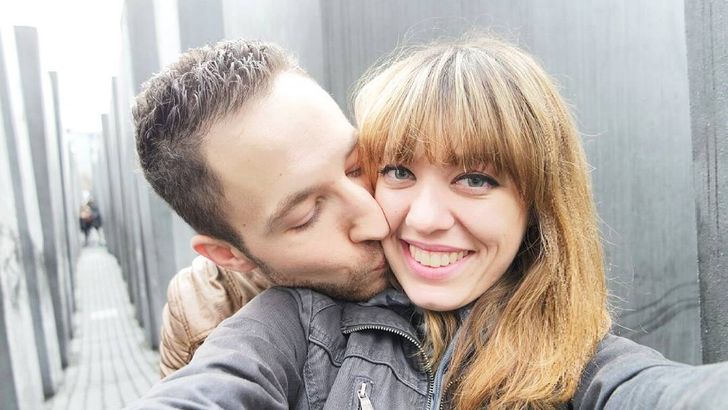
In 2017 bedacht de Duits-Israëlische kunstenaar en komiek Shahak Shapira een gepast antwoord op alle onpasselijkheden die hij zag gebeuren rondom Auschwitz en het Berlijnse Holocaustmonument. In zijn kunstproject genaamd Yolocaust plakt hij de selfies op oude Holocaustfoto’s. Zo transformeert hij een jonge kerel die over de blokken van het Holocaustmonument springt tot een jonge kerel die over opgestapelde lijken van Joodse krijgsgevangenen heen springt. Met daarbij de tekst: ‘Jumping on dead Jews @ Holocaust Memorial’. Door zijn provocerende foto’s hoopt Shapira dat mensen respectvoller omgaan met de werkelijke betekenis en draagwijdte van het monument, in plaats van het te gebruiken als achtergrond voor smakeloze selfies. Die aanpak heeft gewerkt. Van de twaalf selfies die in een foto van de Holocaust zijn gemonteerd, zijn alle makers inmiddels teruggevonden. En allemaal zagen zij in hoe stompzinnig hun acties waren.
#radioactief
Tsjernobyl ligt aan de Pripjat-rivier en kent een rijke geschiedenis van kleurrijke bewoners, maar zal vooral de geschiedenis ingaan als ‘de grootste nucleaire ramp ooit’. Maar elk nadeel heb z’n voordeel, zoals een groot filosoof ooit zei. Want vóór die zwarte dag – 26 april 1986 – hadden ze in Tsjernobyl nog nooit van toeristen gehoord. Door de nucleaire ramp kelderde het bewonersaantal van 14.000 naar nog geen 1000, maar kreeg de toerismesector van het getroffen gebied juist een flinke boost.
Dertig jaar na de ramp stelde de overheid van Oekraïne het gebied rond de centrale weer open voor bezoekers. Inmiddels is daar ook de directe omgeving van de reactors, die lange tijd als te gevaarlijk en radioactief werden beschouwd, bijgekomen. De relatief hoge straling die hier nog in de grond zit, zal de constante stroom van ramptoeristen worst wezen. Zeker sinds de succesvolle HBO-serie Chernobyl (2019) stikt het in het rampgebied van de selfiesticks, influencers en hashtags.
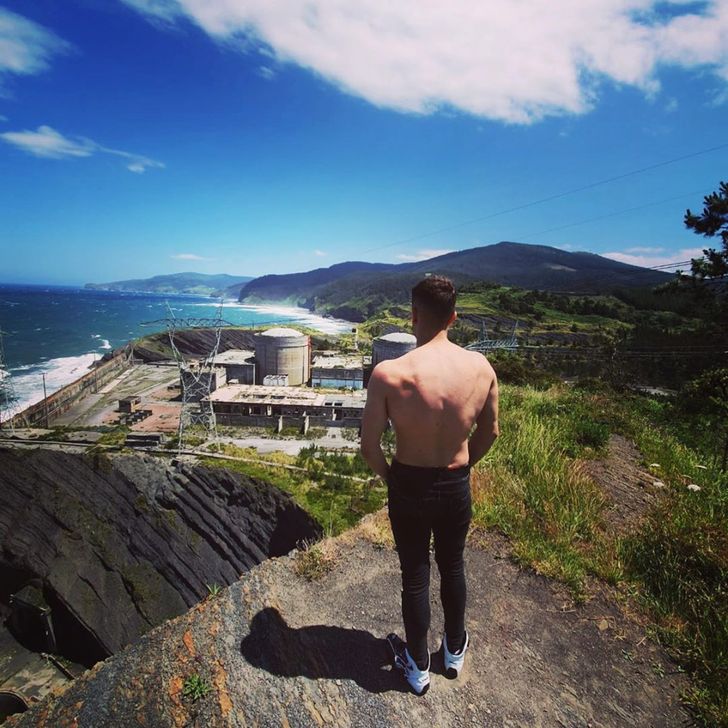
Dat al die toeristen niet naar Tsjernobyl komen voor een geschiedenislesje, bewijzen de smakeloze selfies die reeds viral gingen. Een blond model, poserend op een verwoest schommeltje in een apocalyptische speeltuin, dromerig voor zich uit turend. Een Britse toerist die doodleuk een verroest botsautootje bestuurt. En zelfs Instagrammodellen die alles uittrekken en in hun blote kont flaneren door het rampgebied.
Ook de schrijver van Chernobyl zit in zijn maag met de respectloze toeristen die losgaan op de historische locatie. “Het is prachtig dat mijn serie een piek in het toerisme op gang heeft gebracht,” twitterde Craig Mazin in 2019. “Maar, ja, ik heb de foto’s gezien. Als je erheen gaat, vergeet dan niet dat er zich een verschrikkelijke tragedie heeft voltrokken. Gedraag je met respect voor allen die hebben geleden en offers hebben gebracht.”
Sinds de terroristische aanslag van 11 september 2001 heeft de stad New York niet stilgezeten. Daar waar eerder de beroemde Twin Towers fier overeind stonden, huist nu het indrukwekkende National September 11 Memorial & Museum, waar vooral de Reflection Pools veel bekijks trekken. Niet ver daarvandaan rijst de nieuwe toren van One World Trade Center de lucht in, met 541 meter het hoogste gebouw van Amerika. Ook opende in 2015 het One World Observatory Observatiedek en vorig jaar nog het Perelman Performing Arts Center, een prachtig theater.
Genoeg te zien dus rondom Ground Zero, de verzamelnaam voor de plek waar destijds bijna 3000 mensen uit 87 landen om het leven kwamen. Toeristen trekken massaal naar de plek des onheils en lang niet altijd met goede bedoelingen. Steeds vaker klinken er in Amerikaanse media geluiden van geïrriteerde New Yorkers en gekwetste nabestaanden die zich kapot ergeren aan klikkende camera’s, omhooggehouden selfiesticks en brutale ramptoeristen rondom Memorial Plaza.
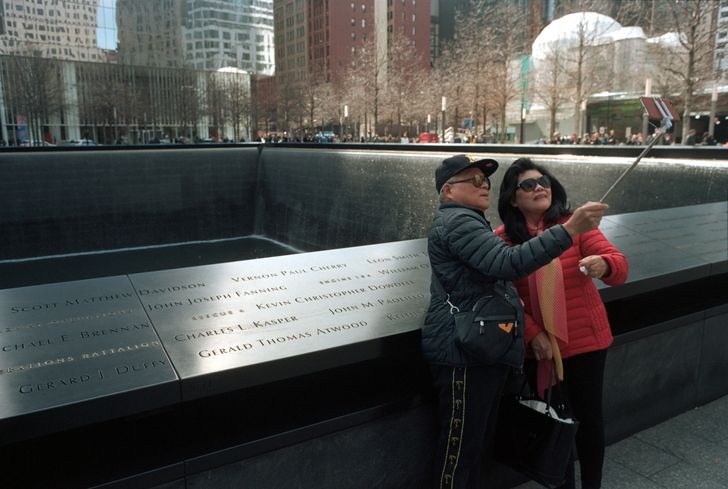
“Het is echt respectloos. Of mensen gaan lachend op de foto met op de achtergrond de plek waar de torens instortten,” aldus een local ter plekke in een verslag van de NOS. De vrouw verloor haar man tijdens de aanslagen en begrijpt niet hoe toeristen het leed van haar en alle andere nabestaanden over het hoofd zien. “Ik zie daar soms ouders plezier maken met lachende en rennende kinderen. Ik denk niet dat mensen snappen dat dit niet zo’n soort plek is. Het zal voor hen vast een topfoto zijn, maar voor ons is het pijnlijk om te zien.”
Intussen zijn de bewakers constant druk met kinderen die op de ingegraveerde namen van de slachtoffers spelen en bezoekers die hun sigarettenpeuken uitdrukken op het monument.
#levensgevaarlijk
Selfies nemen in een ouderwetse trein, boven op een mooie klif of in een tropisch zwembad zijn geinig, maar de echte likes verdien je pas als je elkaar uit de deur van die rijdende trein laat hangen op een gammele brug, je liefje over de richel van die mooie klif laat bungelen of over de rand van een tropisch zwemband klimt boven een dodelijke afgrond. Lang leve de Instagram-stelletjes die steeds verdergaan om die ene foto te maken die bewijst dat hun liefde sterker, groter en grenzelozer is dan die van het simpele klootjesvolk.
Het Amerikaanse koppel Kelly Castille en Kody Workman haalt geregeld de internationale krantenkoppen met levensgevaarlijke capriolen. In 2019 hing Workman zijn vrouw over de rand van een klif in de bergen van Peru, voor hun Instagram-pagina. Bij de foto schreven zij de quasi-inspirerende boodschap: “De wereld wacht op je!” en “Er is een verschil tussen je leven riskeren en het risico nemen om een echt leven te leiden. Wij weten aan welke kant wij liever staan. Jij ook?” Een groot deel van hun 330.000 digitale volgers vonden de afgrond waar Castille boven hing een stuk dieper dan haar tegeltjeswijsheid. “Het is gewoon ongelofelijk stom dat je dit doet om de aandacht van mensen te trekken. Dit is de domheid van de millenniumgeneratie,” aldus een voormalig fan.
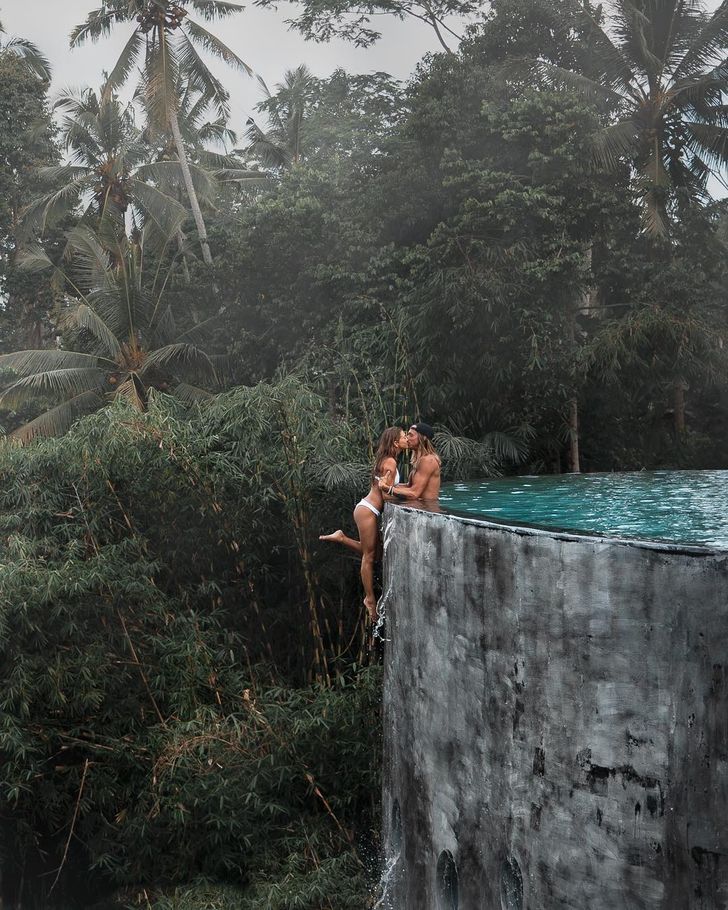
Op een andere foto hangt Castille wederom in een soort circuspositie, over de rand van een zwembad getild door Workman. De diepte onder haar voeten doet vermoeden dat dit weleens haar laatste selfie zou kunnen zijn. “Deze foto toont alles wat verkeerd is in deze moderne tijden. Zonder nadenken doen mensen dingen voor fifteen minutes of fame ,” reageert een geïrriteerde volger. Castille en Workman bijten van zich af door te zweren dat zij altijd veilig te werk gaan en dat ‘iedereen verantwoordelijk is voor zijn of haar eigen, persoonlijke beslissingen’. Plus: “We zijn allebei goed in vorm, kennen ons lichaam en onze limieten. We vertrouwden elkaar genoeg voor iets als dit, dus besloten we het gewoon te doen.”
Fulltime mensen jaloers maken met dromerige foto’s: het Vlaamse stelletje Camille Demyttenaere en Jean Hocke vonden er ook een verdienmodel in. Hun beruchtste foto maakten zij hangend uit een rijdende trein boven een diepe vallei, ergens in Sri Lanka. “We kunnen geen betere foto bedenken die onze liefde omschrijft,” schrijft het stel naast hun foto. De volgers zien dat anders. “Wil je dood, want dit is hoe je kunt sterven.”
#begrafenis
Begrafenissen en crematies zijn eeuwenoude rituelen waarin wij afscheid nemen van onze geliefden. Vanzelfsprekend staat de overleden persoon tijdens deze dag centraal. De huidige internetgeneratie lijkt de eerste in de geschiedenis van de mensheid die daar verandering in wil brengen. Trieste gelegenheden bieden namelijk grote kansen om je Instagram-fanbase uit te breiden. Een selfie op de begrafenis van je moeder of de crematie van je opa kan rekenen op veel sympathie en steun. Met andere woorden: extra likes en followers. Bovendien zie je er vaak stiekem best goed uit op deze trieste dag.
De begrafenisselfie is al jaren een fenomeen. Een korte speurtocht op de socialemediakanalen levert de ene wonderlijke foto na de andere op. Twee blonde meisjes met een duckface voor de badkamerspiegel van een uitvaartcentrum, met daarbij de tekst: “Al onze make-up eraf gehuild. Maar ja, zijn op een begrafenis.” Een jongen met een scheef petje die met zijn vingers het peaceteken maakt, pal naast de open doodskist van zijn oma. Een pubermeisje starend in haar eigen telefooncamera, die schrijft: “Mijn haar zit echt prachtig vandaag! Maar de reden vind ik maar stom. #begrafenis.”

En ook na de begrafenis of crematie zien influencers hun kans schoon. De Amerikaanse Sierra, een rondborstige dame in een veel te kleine bikini, plaatst op Instagram een foto waarin zij tactisch een urn pal naast haar enorme boezem omhooghoudt. “Even lekker chillen met mijn oma op deze prachtige zondag!”
De uitvaartwereld weet niet wat het met de begrafenisselfie aan moet. “In veel uitvaartcentra hebben we duidelijke regels om selfies te beperken,” verklaarde een begrafenisondernemer uit Canada al eens. “We zeggen ook tegen bezoekers van uitvaarten dat de familie niet wil dat er selfies genomen worden.” Dat het nemen van selfies op uitvaarten om deze vervolgens te delen op sociale media kwetsend kan zijn voor de nabestaanden, lijkt er bij veel jongeren niet in te gaan. Ook in Nederland. “We merken vooral dat kleinkinderen foto’s maken van opa’s en oma’s en die op Facebook zetten,” aldus uitvaartondernemer Jan-Jaap Palma tegen RTL Nieuws . Wekelijks stuit hij op foto’s van open en gesloten kisten op sociale media en ziet hij bezoekers ongewenst filmpjes en foto’s maken zodra iemand op een uitvaart begint te spreken. Andere tijden, stelt Palma. “Als je een paar jaar geleden vroeg om de telefoons uit te zetten dan deed iedereen dat, toen ging één keer in het half jaar de telefoon af. Nu heb je mensen die nemen gewoon de telefoon op.” Bizar: volgens rouwdeskundigen verkiezen steeds meer mensen vanwege de begrafenisselfie voor een gesloten kist voor hun geliefden.
#heiligschennis
Badhuizen, naturistencampings, naaktstranden; er zijn tal van aangewezen plekken waar men in alle vrijheid zijn of haar broek mag laten vieren en de boel lekker mag laten hangen. Heilige locaties, zoals Machu Picchu, de Egyptische piramides en Angkor Wat, behoren niet tot die plekken. Dit zal de weldenkende medemens niet verrassen, maar de moderne influencer zal het worst wezen. De likes vergaren zich niet vanzelf en dus besluiten Instagrammers en TikTokkers zo nu en dan om naaktfoto’s te nemen op de mooiste plekken ter wereld.
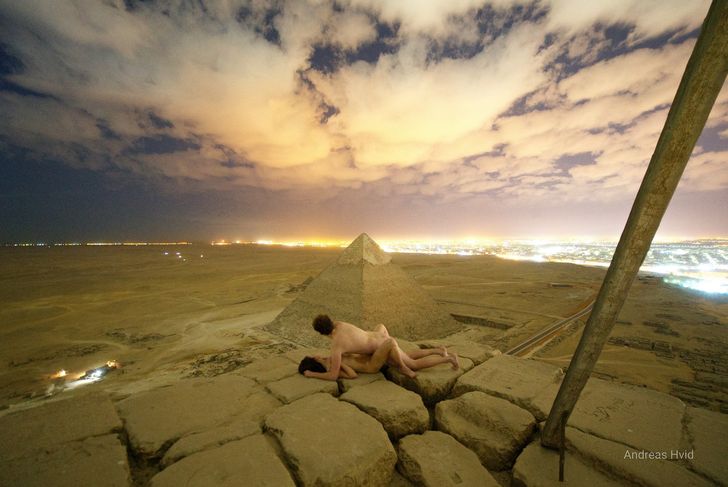
In 2016 leidde dit bizarre fenomeen tot de arrestatie van twee twintigers, na een serie van poedelnaakte selfies rondom de ruïnes van Machu Picchu. De Brit en de Fransman kregen geen likes voor hun actie, wel een aanklacht voor moreel wangedrag. Twee jaar later flikten een Nederlander (26), een Duitser (21) en een Zwitser (24) hetzelfde. Zij zijn voorlopig niet meer welkom in Peru. De oude Inca-stad wordt nog steeds belaagd door piemel-, billen- en borstenselfies. Zodanig dat de Peruaanse politie de surveillance rond Machu Picchu inmiddels heeft aangescherpt.
In Egypte kunnen ze erover meepraten. Daar klom in 2019 een jong stel over de beveiligingshekken van de Piramide van Cheops, om deze vervolgens doodleuk te beklimmen. Eenmaal boven aangekomen gaf het uitzicht over de Sahara blijkbaar te weinig voldoening, dus besloot het stel zich uit te kleden en daar een potje seks te hebben. Alles werd vastgelegd op foto en film door de man, Andreas Hvid. Het stel kwam er mee weg en publiceerde hun avontuurtje een paar dagen later zelf op YouTube. Naast bewondering en respect regende het ook kritiek in de reacties. Met name de Egyptische autoriteiten waren niet te spreken over deze heiligschennis en openden direct een onderzoek. “We hebben het filmpje onder ogen gekregen. We willen weten waarom ze dit gedaan hebben. Dit is een schending van de publieke moraal,” aldus de minister van Oudheidkundige Zaken. Hvid en zijn vriendin kwamen er mee weg; de omstreden foto pronkt zelfs nog gewoon op zijn website.
In Cambodja zijn ze minder lief voor respectloze influencers. Daar kregen in 2015 twee jonge vrouwen een voorwaardelijke gevangenisstraf van zes maanden opgelegd én vier jaar verbanning uit het land, nadat zij kiekjes van elkaars kont hadden gemaakt in het tempelcomplex van Angkor Wat.
De opkomst van ‘dark tourism’
Dark tourism, het bezoeken van plekken waar rampen, massamoorden of andere tragedies zich afspeelden, klinkt misschien als een moderne trend, maar is eigenlijk al zo oud als de weg naar Rome. Onze voorliefde voor dood en verderf gaat terug tot de gladiatorengevechten van onze Romeinse voorvaders.
In de Nederlandse geschiedenisboeken hoef je ook niet lang te zoeken naar voorbeelden. Een gezellig dagje uit in het Amsterdam van de 18de eeuw betekende: roeien langs de IJ-haven richting Amsterdam-Noord om getuige te zijn van een openbare ophanging. En in het Anatomisch Theater van de Universiteit Leiden kon je terecht bij het rariteitenkabinet voor een middagje menselijke dissectie.
Tegenwoordig bezoeken we massaal concentratiekampen, slagvelden en ramplocaties. Waarom? Daar zijn talloze studies naar gedaan en die komen vaak tot dezelfde motieven. We vinden het spannend, we streven naar ‘historische sensatie’ en zoeken een soort persoonlijke verdieping op plekken waar onwaarschijnlijk veel leed plaatsvond. De beelden van de terroristische aanslagen van 11 september 2001 waren verschrikkelijk, maar wie rondloopt op Ground Zero ‘voelt’ pas echt hoe erg het allemaal was.
Dark tourism is dan ook niet per se verkeerd, stellen experts. Maar: zolang je maar met respect omgaat met de plek. En daar gaat het nogal eens mis. Selfies hebben ‘de neiging de identiteit en ervaringen van de slachtoffers te verdringen’, zo waarschuwen critici. “Mensen raken hierdoor gewend aan de herhaling van wreedheden en doet mogelijk hun bereidheid om te reageren met betekenisvolle interventie of morele verontwaardiging teniet.”
Online onbeperkt lezen en Panorama thuisbezorgd?
Abonneer nu en profiteer!
- ANP, Instagram e.a.
Om te voldoen aan wet- en regelgeving rondom kansspelen zouden we graag eenmalig willen weten of je 24 jaar of ouder bent.

IMAGES
VIDEO
COMMENTS
In this post, we have prepared a list of best dark tourism destinations in the world. And this is probably our least 'best' list in a sense. 1) Aokigahara Suicide Forest, Japan. Aokigahara is a...
1. Bhangarh Fort, India. Locatie: Rajasthan, India. We beginnen onze paranormale tour in het mystieke land India, waar het beruchte Bhangarh Fort staat. Volgens de legende heeft de vloek van een tovenaar deze ooit bloeiende stad veranderd in een spookachtig toevluchtsoord.
Dark Tourism kan je verdelen in drie categorieën: van heel donker - zoals Auschwitz - tot heel licht waarbij de nadruk ligt op entertainment, zoals het Torture Museum Amsterdam. Daar tussenin zitten de slagvelden uit de Eerste Wereldoorlog, maar ook Waterloo en begraafplaatsen.
Dark tourism en thanatourism, en ook wel death focus reizen (Collins-Kreiner, 2016), black spot toerisme (Rojek 1993) en difficult heritage-toerisme (Knudsen 2011) zijn andere begrippen die hiervoor gebruikt worden.
Dark tourism krijgt dankzij series als 'Chernobyl', 'Reizen Waes' en 'Dark Tourist' een heel andere, veel menselijkere dimensie. Maar wat is duister toerisme eigenlijk? Waneer ben je zelf een dark tourist? En is het wel ethisch verantwoord? Wij zochten naar een antwoord op jouw meest prangende vragen over donker toerisme.
1. De landingsstranden van D-day zijn een verschrikkelijke bezienswaardigheid. 2. De meest verschrikkelijke bezienswaardigheid ter wereld die ik ooit heb bezocht: Auschwitz. 3. Berlijn Hohenschönhausen - voormalige Stasi gevangenis. 4. Kamp Westerbork is ook een verschrikkelijke bezienswaardigheid. 5. De Actun Tunichil Muknal grot in Belize.
Dark tourism is de verzamelnaam voor het reizen naar bijzondere plekken die op de een of andere manier in verband kunnen worden gebracht met de dood, lijden of het schijnbaar macabere. Voorbeelden zijn onder andere slagvelden, begraafplaatsen, gevangenissen en ook de zogeheten 'Torture-musea'.
Wanneer het over oorlogstoerisme gaat, is de term dark tourism nooit ver weg. Maar wat betekent deze term nu eigenlijk? En op wat voor manieren wordt hij toegepast?
15-01-2021. Hey wereldreizigers, kennen jullie Dark Tourist al? Dark Tourist is een bizarre documentaireserie uit Nieuw-Zeeland over het fenomeen Dark Tourism, oftwel duister / donker toerisme. Dark Tourism is een snel groeiend fenomeen waarbij je naar plekken en ervaringen op zoek gaat die verre van 'normaal' zijn.
Dit zogeheten 'dark tourism' heeft een schaduwkant: toeristen die bijvoorbeeld veel te vrolijke foto's maken op plekken waar duizenden mensen zijn overleden. Wij hebben een overzicht gemaakt van een aantal plekken waar dit duistere toerisme plaatsvindt.
Dark tourism is een interessant fenomeen, zeker vanuit sociaal en cultureel oogpunt. Het kan echter wel tot negatieve gevolgen leiden. Net als bij andere vormen van toerisme kan ook dark tourism leiden tot overlast of milieuschade. Massale bezoekersaantallen kunnen leiden tot fysieke schade aan historische en culturele waardevolle ...
1. Chernobyl Exclusion Zone - Kyiv, Ukraine. The abandoned amusement park in Pripyat is one of dark tourism's crowning images. The haunting stills of the fairground that never heard the laughs of children hang in modern consciousness, a symbol of tragic loss and a warning of the mistakes men can make.
Dark tourism is de verzamelnaam voor het reizen naar bijzondere plekken die op de een of andere manier in verband kunnen worden gebracht met de dood, lijden of het schijnbaar macabere. Voorbeelden zijn onder andere slagvelden, begraafplaatsen, gevangenissen en ook de zogeheten 'Torture-musea'.
Dark tourism is de verzamelnaam voor het reizen naar bijzondere plekken die op de een of andere manier in verband kunnen worden gebracht met de dood, lijden of het schijnbaar macabere. Voorbeelden zijn onder andere slagvelden, begraafplaatsen, gevangenissen en ook de zogeheten 'Torture-musea'.
Dark tourism, of thanatoerisme, is een vorm van toerisme waarbij mensen op zoek gaan naar 'duistere' bestemmingen. Dit is een nogal breed begrip, maar in de meeste gevallen gaat het om plaatsen met een connectie tot tragische gebeurtenissen.
Ben jij wel eens naar de slagvelden bij Waterloo geweest? Of zou je graag de plek bezoeken waar eerst de Twin Towers stonden? Dan ben jij een zogeheten dark tourist. Deze vorm van toerisme is heel populair. Maar waarom bezoeken mensen plekken vol gruwelijkheden?
A Traveler's Guide to Dark Tourism. Exploring the World's Dark & Unusual Travel Destinations. Spac Prison: Albania's Dark Tourism Destination Reveals a Haunting History. June 26, 2023. Nestled within the picturesque mountains of Albania, SPAÇ Prison stands as a chilling reminder of the country's tumultuous past.
Dark tourism is een vorm van toerisme waarbij je bezienswaardigheden bezoekt die gerelateerd zijn aan tragische gebeurtenissen. Wij zetten acht 'duistere' reiservaringen op een rij. Zou jij ze willen ervaren? 1. Vlucht vanuit Mexico de Amerikaanse grens over. kulawee.watanabe. Tijuana, Baja California. View profile. kulawee.watanabe.
Zoals Ground Zero in NY, Auschwitz, The Killing Fields in Cambodja, Chernobyl. Ramptoerisme wordt ook wel 'dark tourism' genoemd. Omdat het meestal bestemmingen zijn waar 'donkere' gebeurtenissen hebben plaatsgevonden. Waarom trekken plaatsen waar rampen of gruwelijke dingen gebeurd zijn ons zo aan? We zijn gefascineerd door de dood.
Een casestudy naar bezoekersprofielen en motivatie in Nationaal Monument Kamp Amersfoort. Karel Werdler. Hogeschool Inholland Tourism Management. HTRO manager externe relaties, senior lecturer. Wildenborch 6, 1112 XB Diemen. [email protected]. Nadiah Geuskens. BA Tourism Management Hogeschool Inholland Jachthaven Lelystad.
World History History. Series. Oxford Handbooks. Collection: Oxford Handbooks Online. Dark Tourism is a concept relatively new to the world of tourism studied by social scientists, and even more so in the "real world" of travel and tourism experienced by many millions of global travelers.
De voorbeelden zijn legio, stelt hij: de Eerste en Tweede Wereldoorlog, plekken waar de Holocaust of andere genocides tot uiting komen (van de Dossinkazerne tot Auschwitz of zelfs Rwanda), maar evengoed diverse conflictgebieden, van Vietnam of de Spaanse burgeroorlog.
Dark tourism, het bezoeken van plekken waar rampen, massamoorden of andere tragedies zich afspeelden, klinkt misschien als een moderne trend, maar is eigenlijk al zo oud als de weg naar Rome. Onze voorliefde voor dood en verderf gaat terug tot de gladiatorengevechten van onze Romeinse voorvaders.